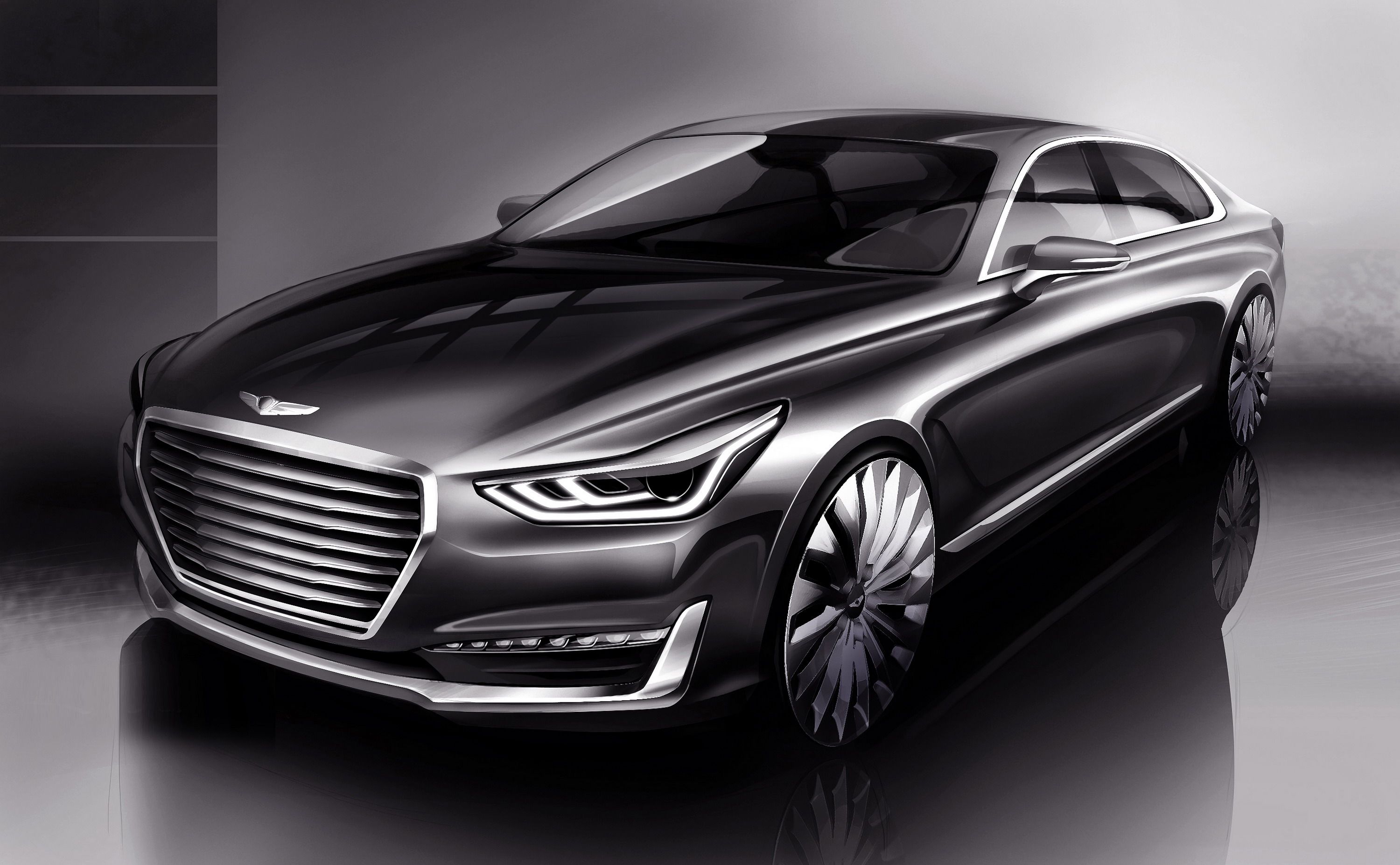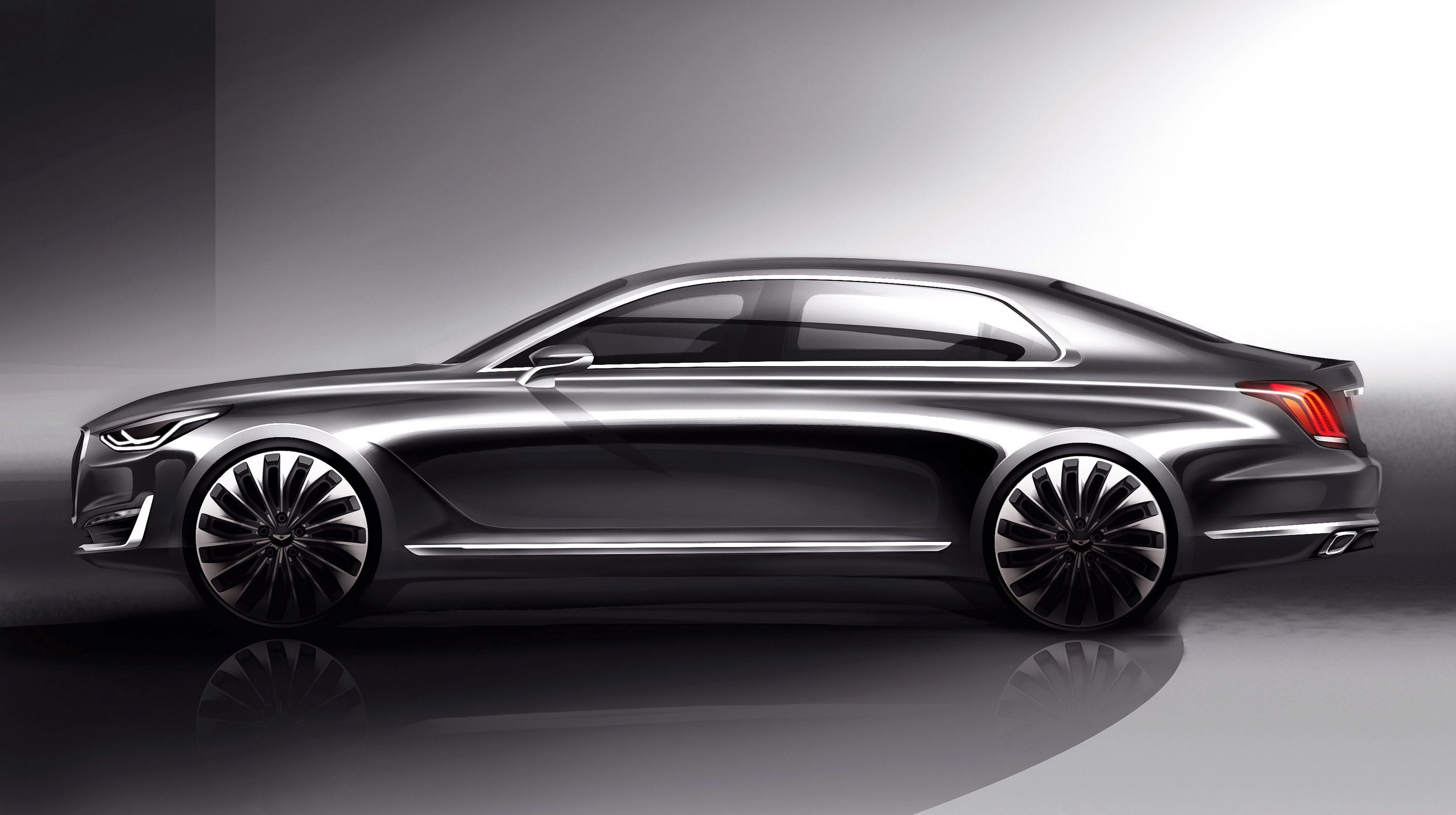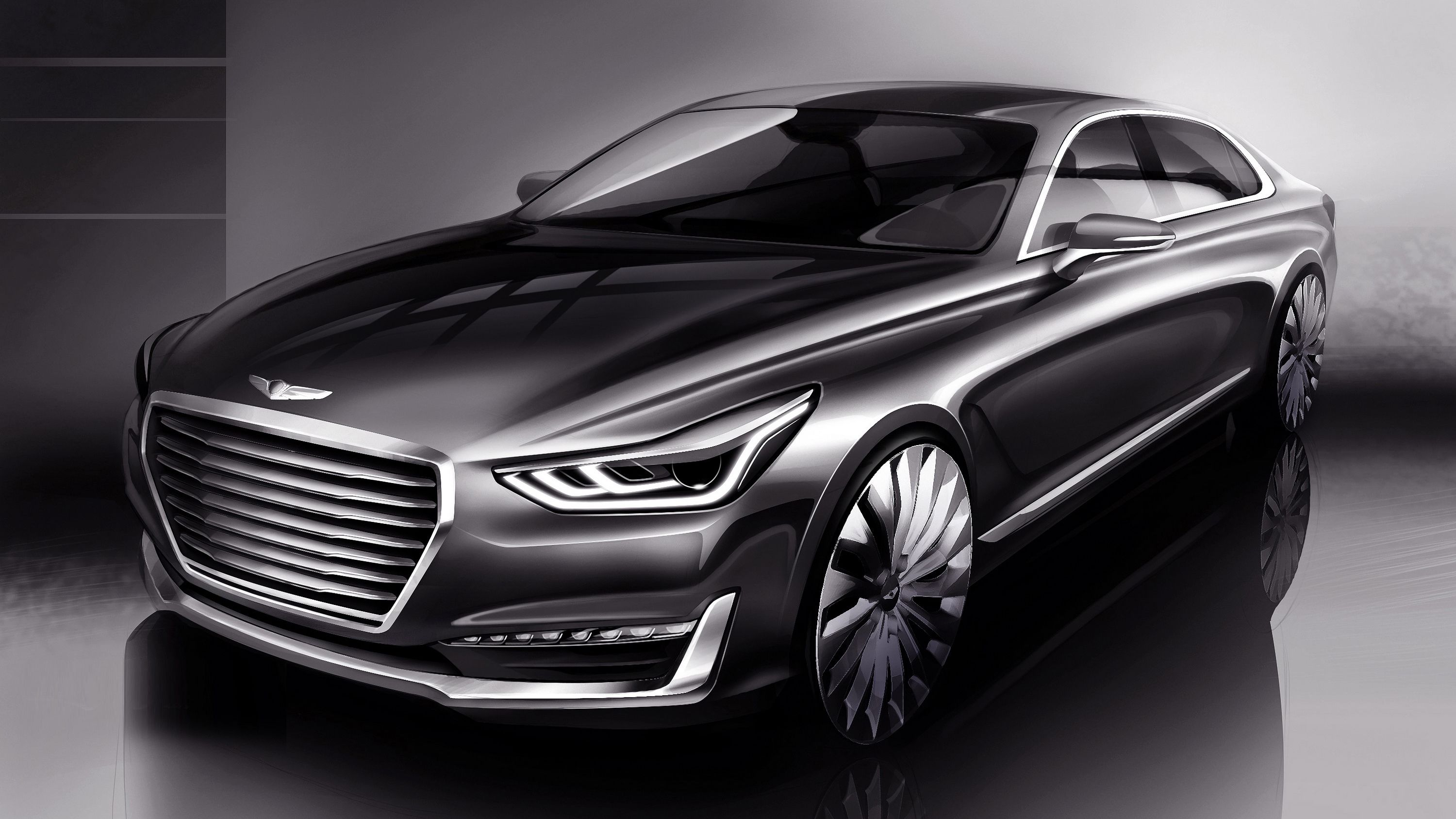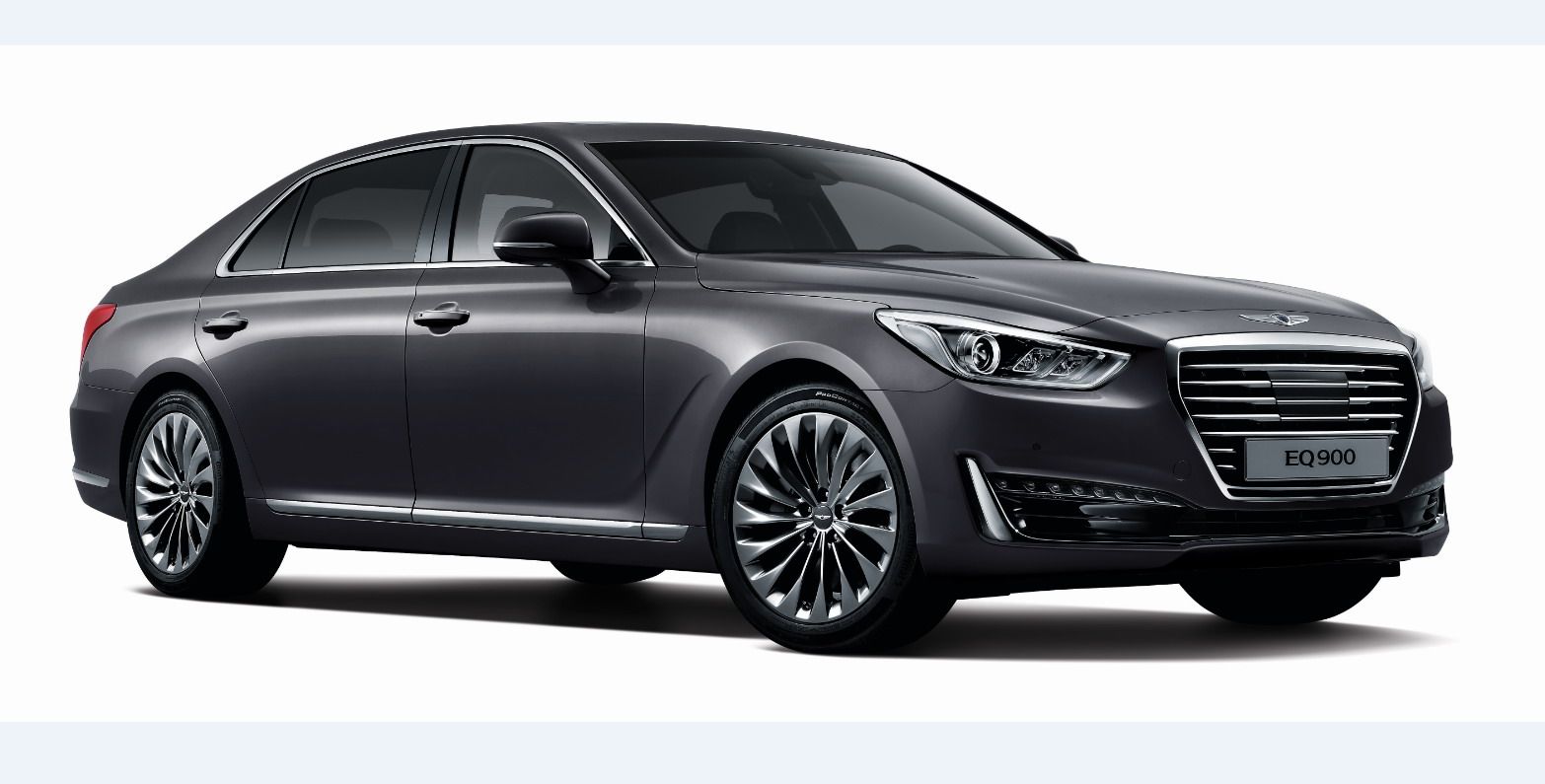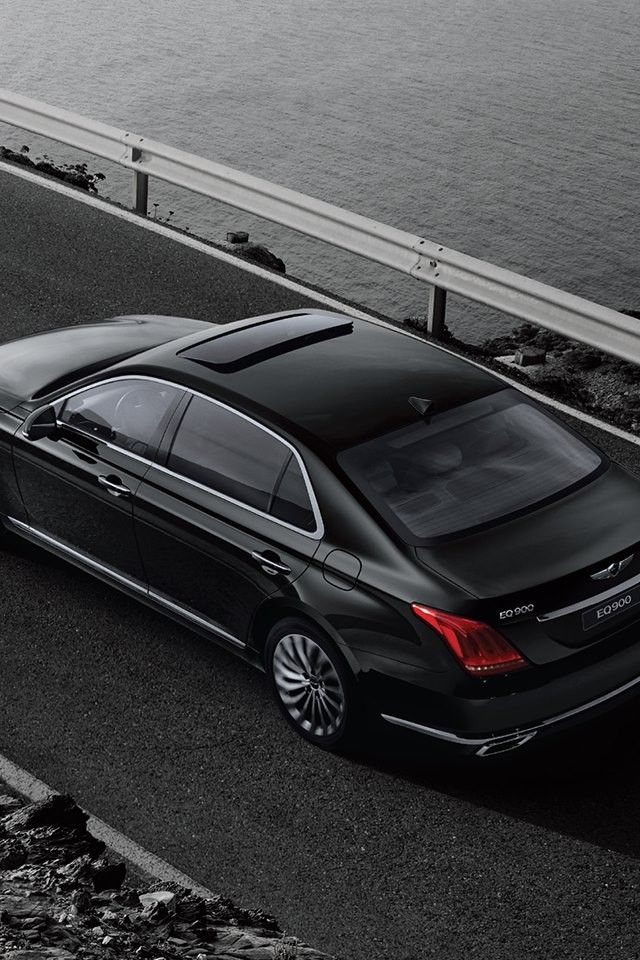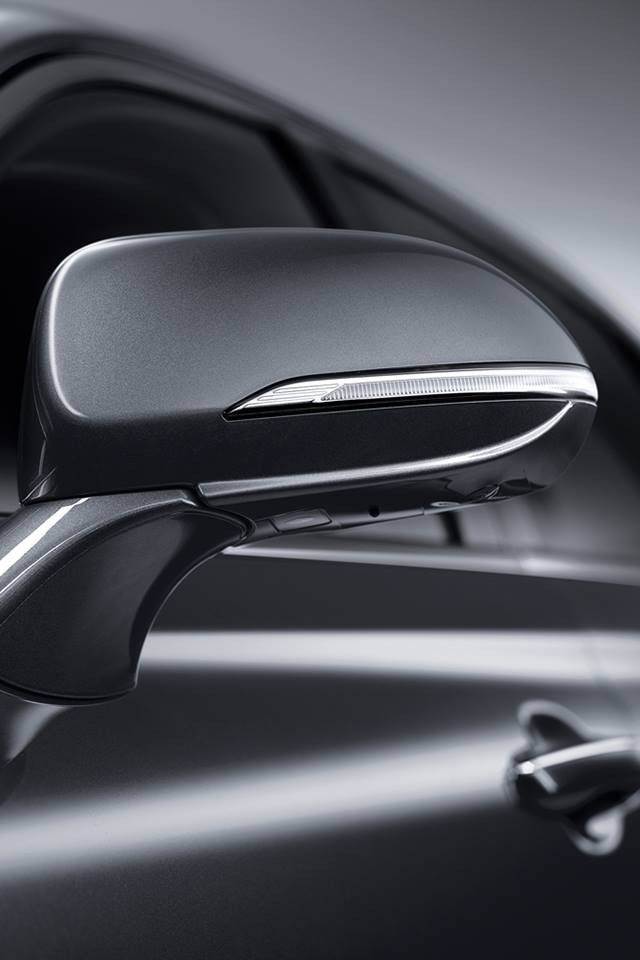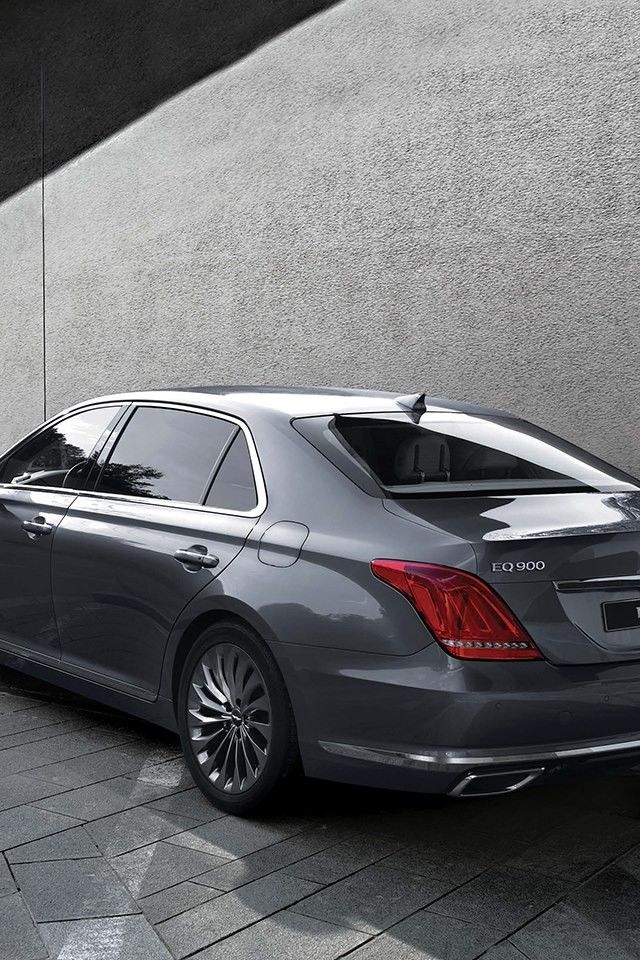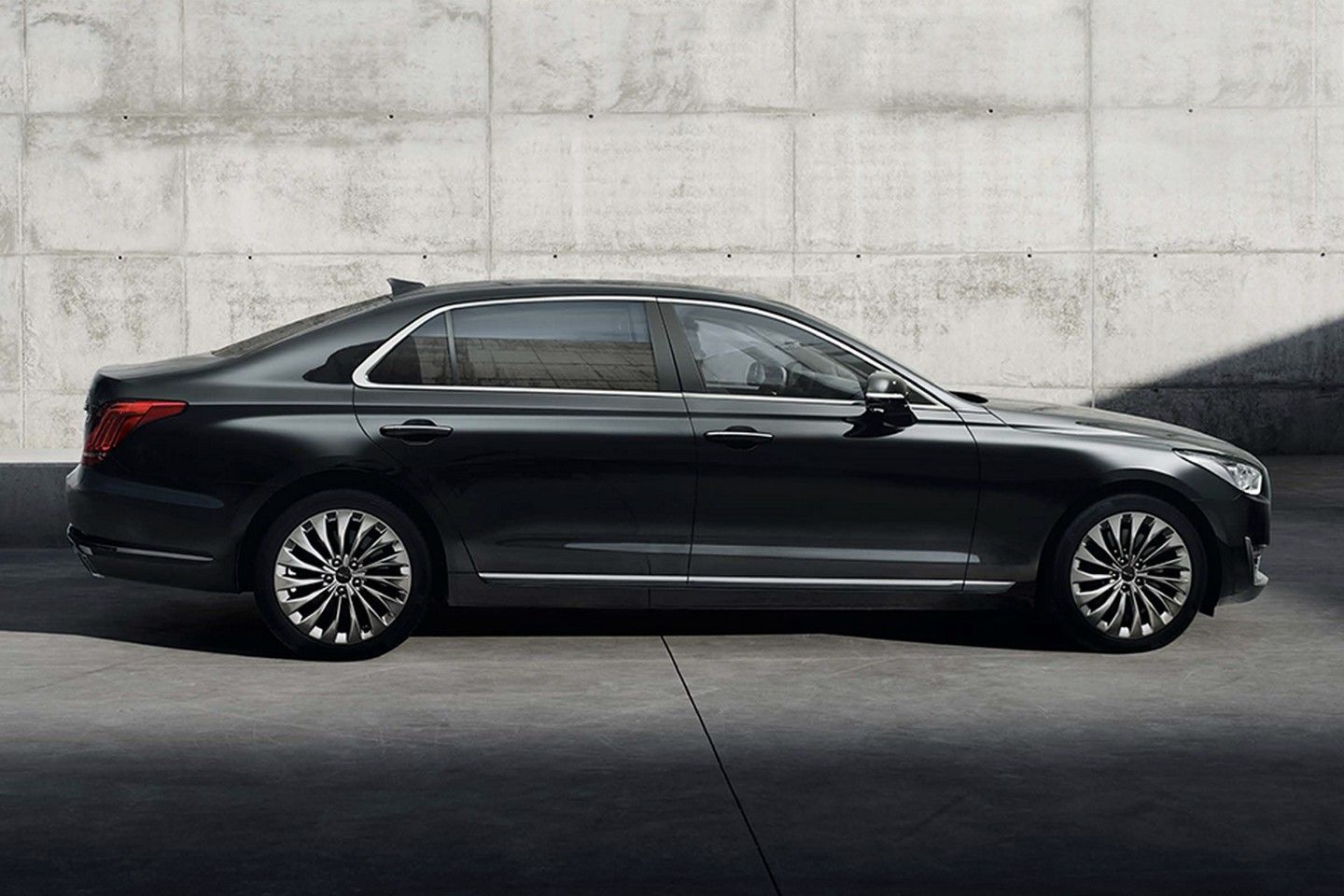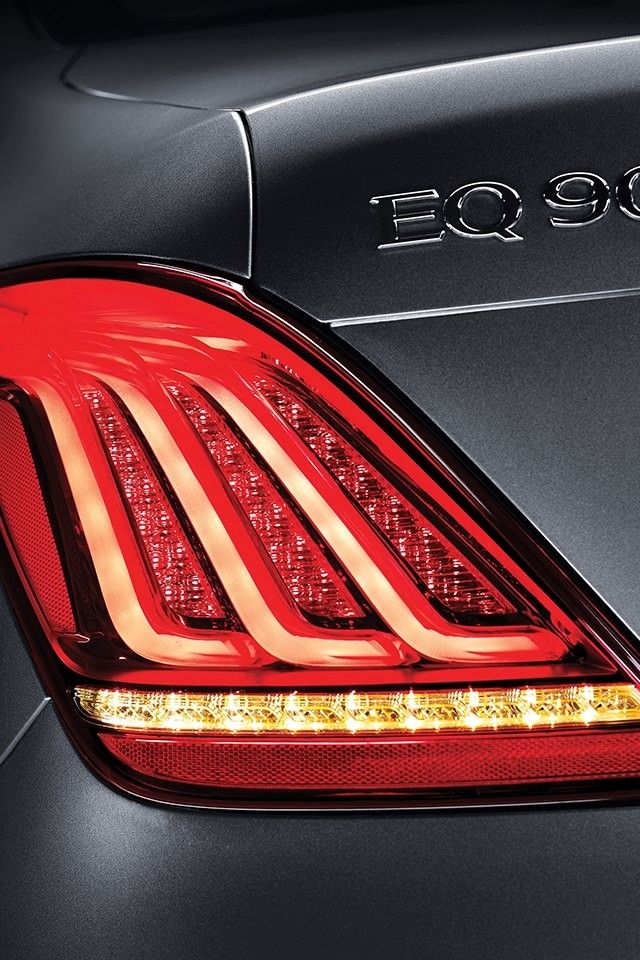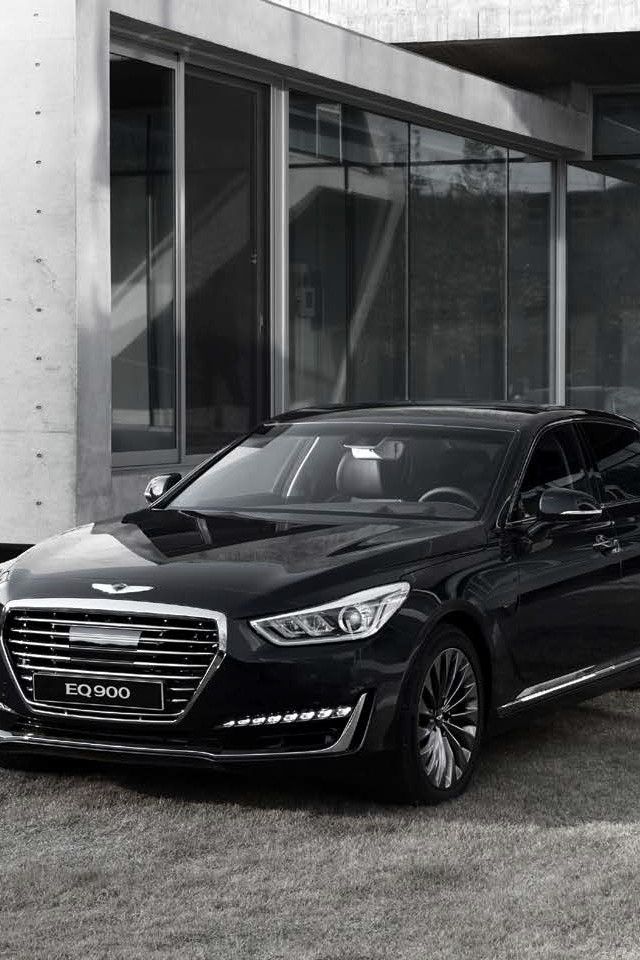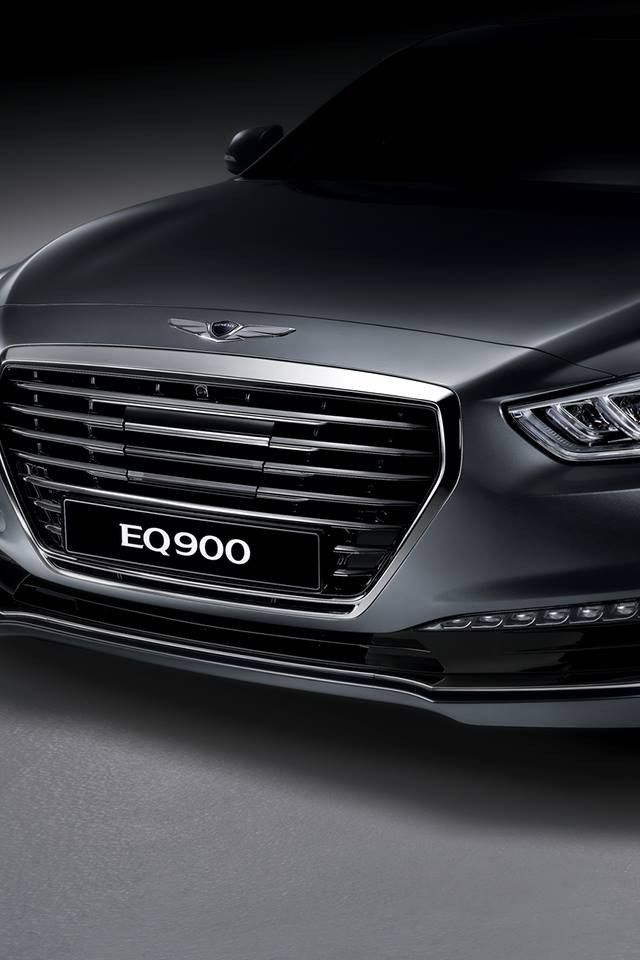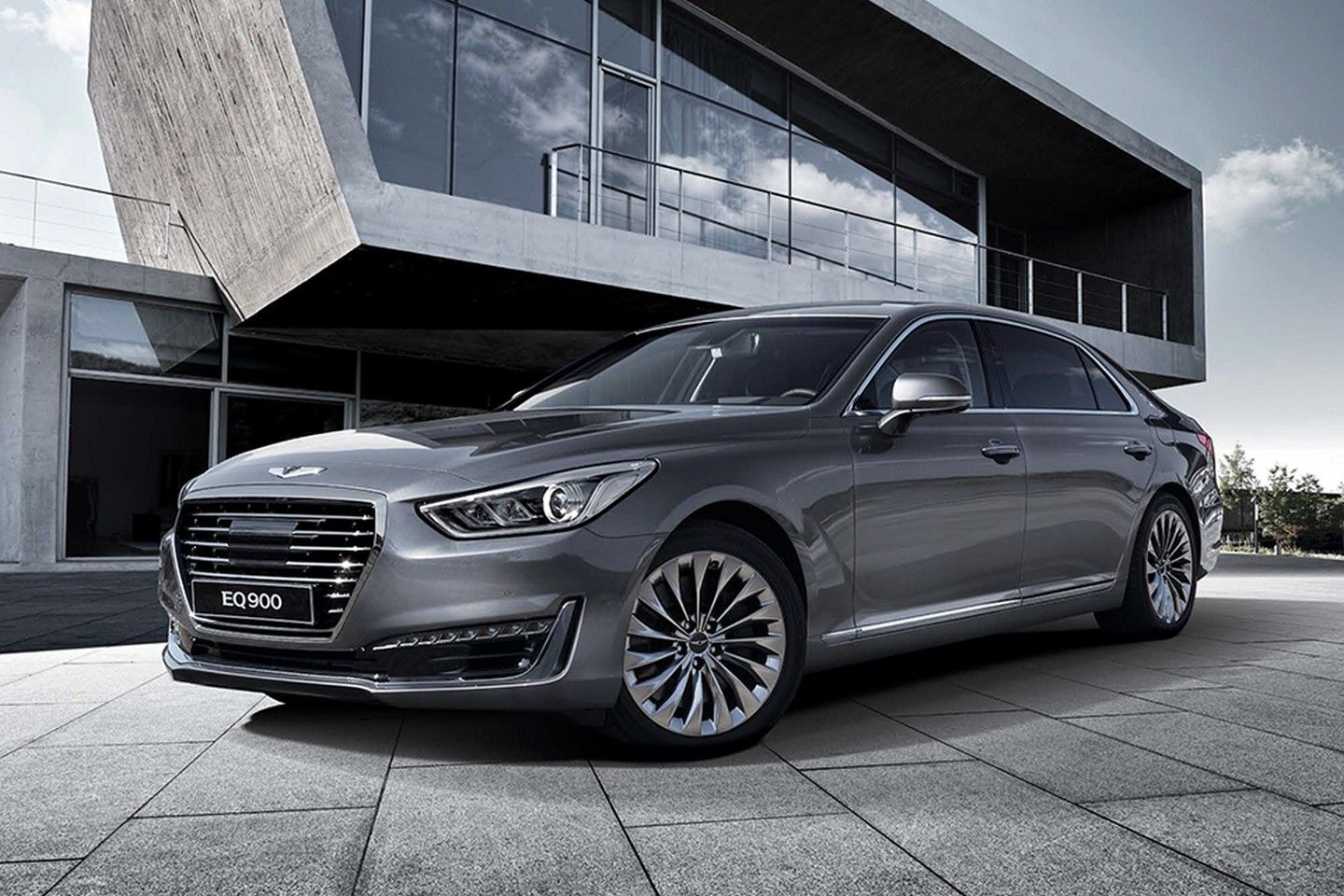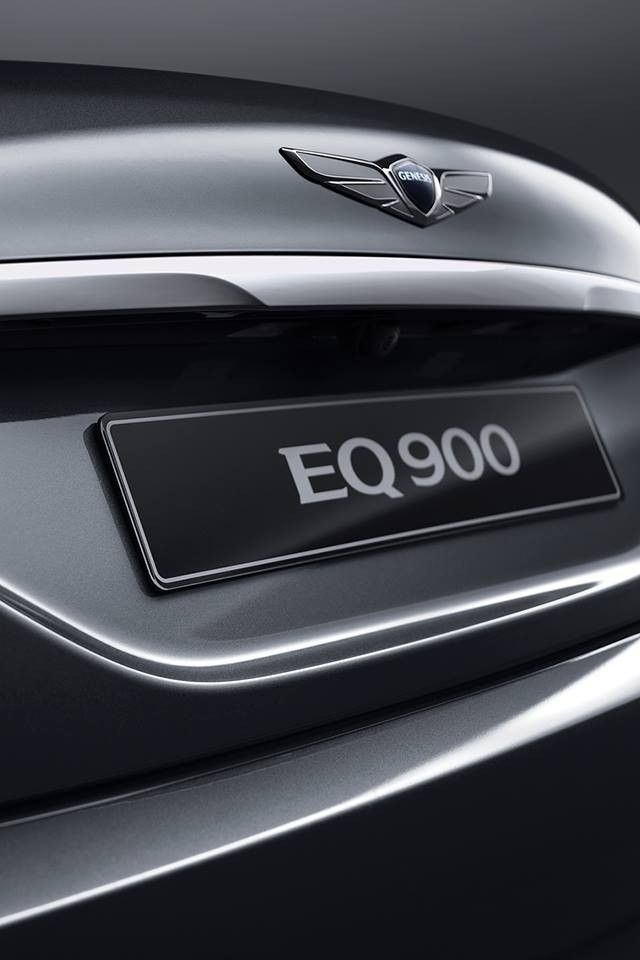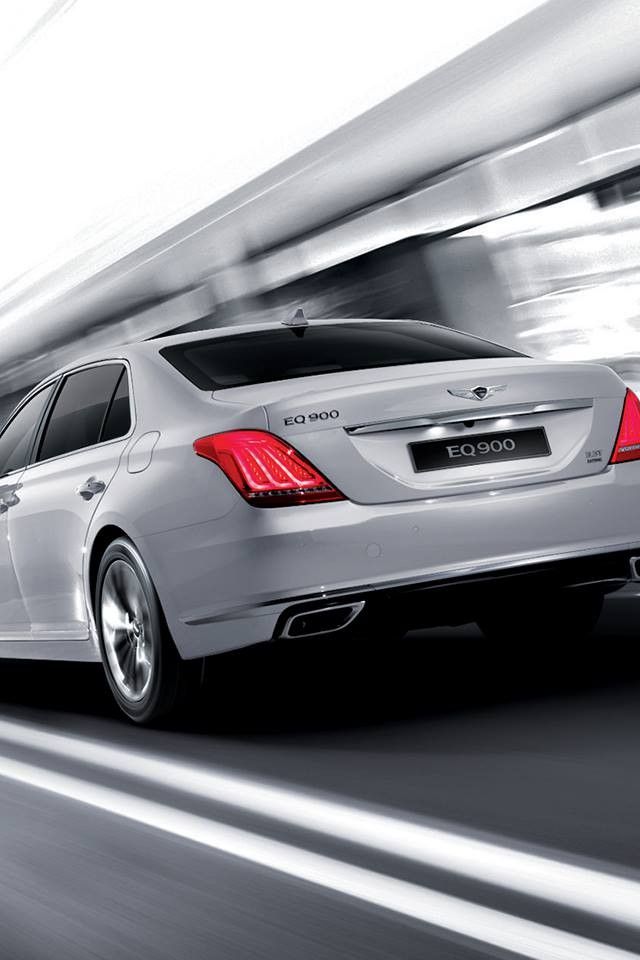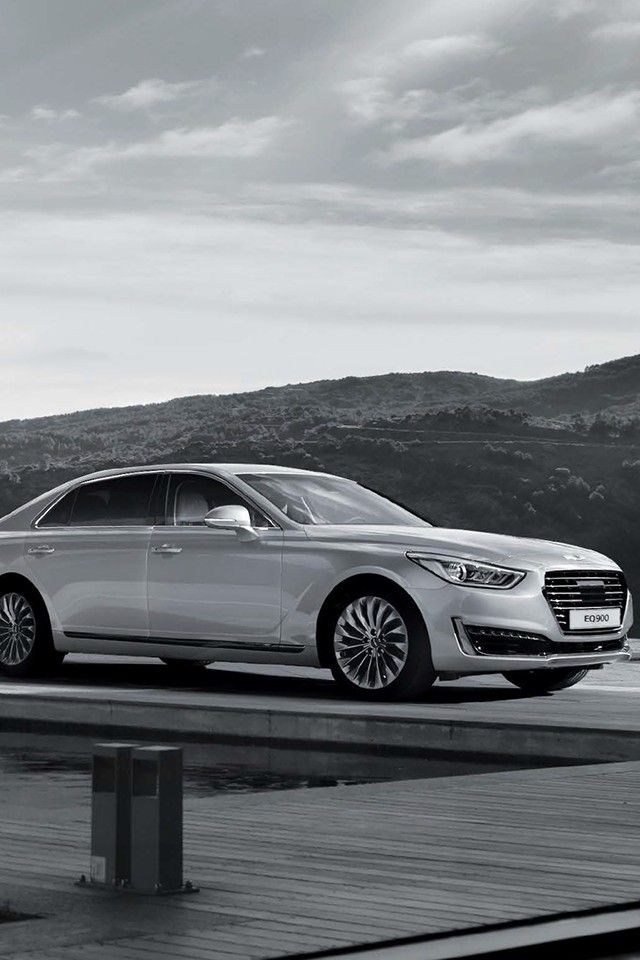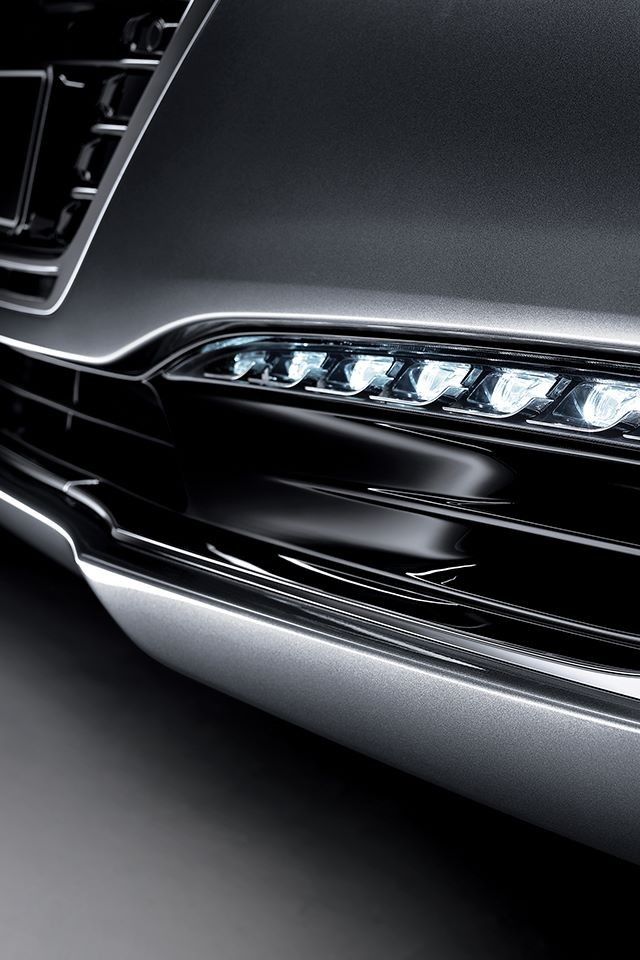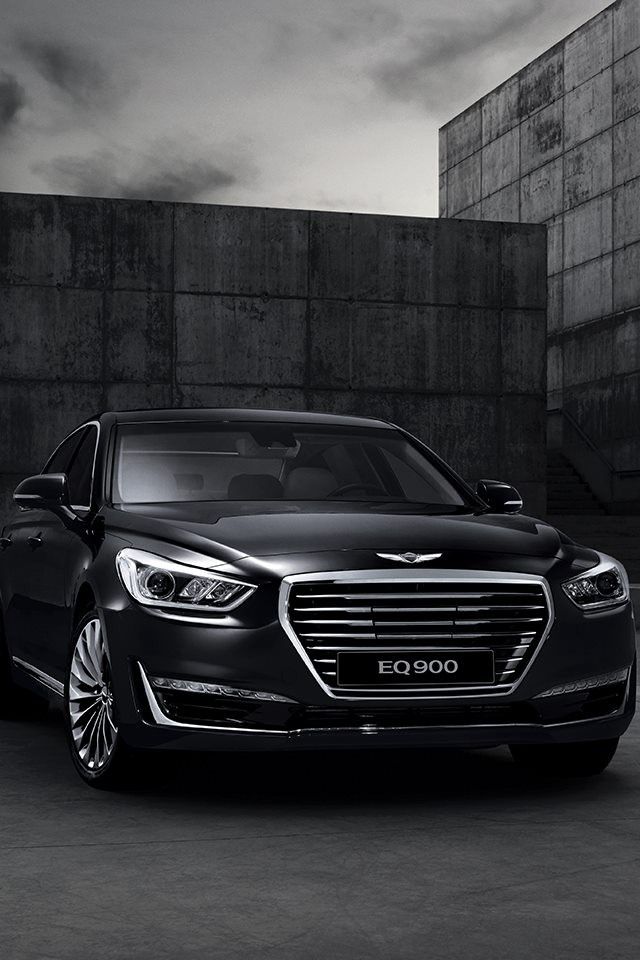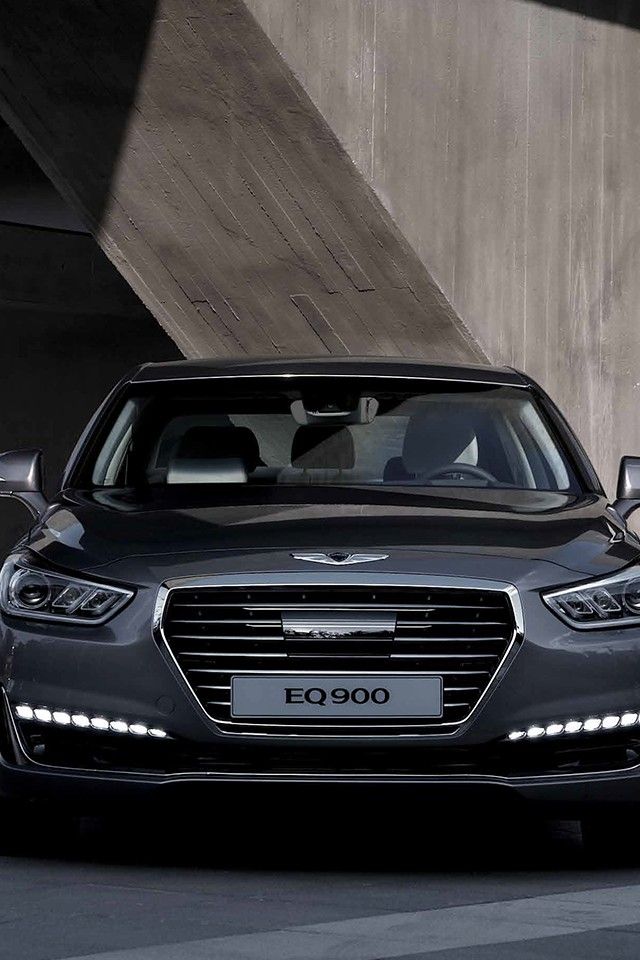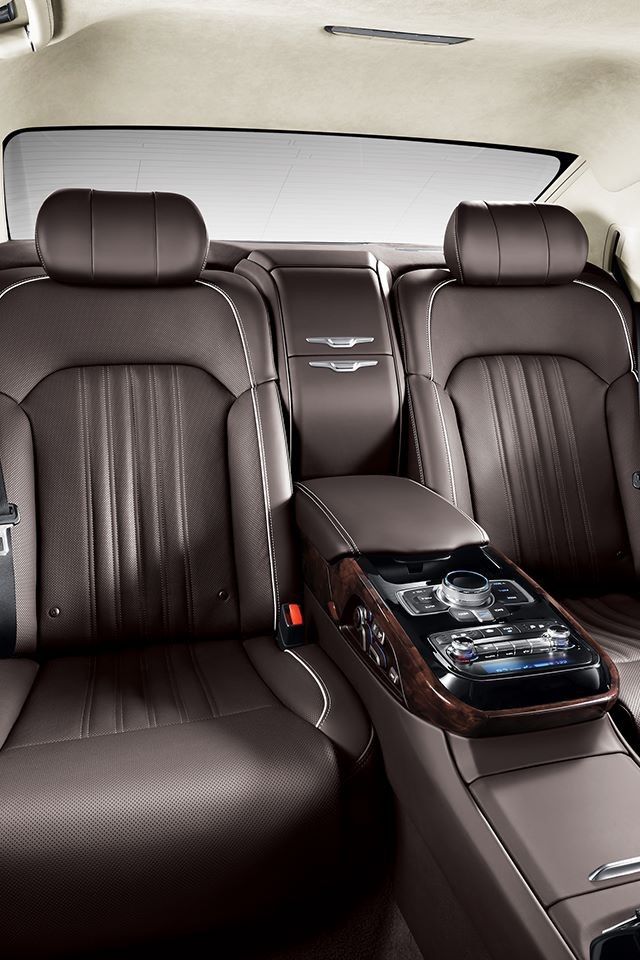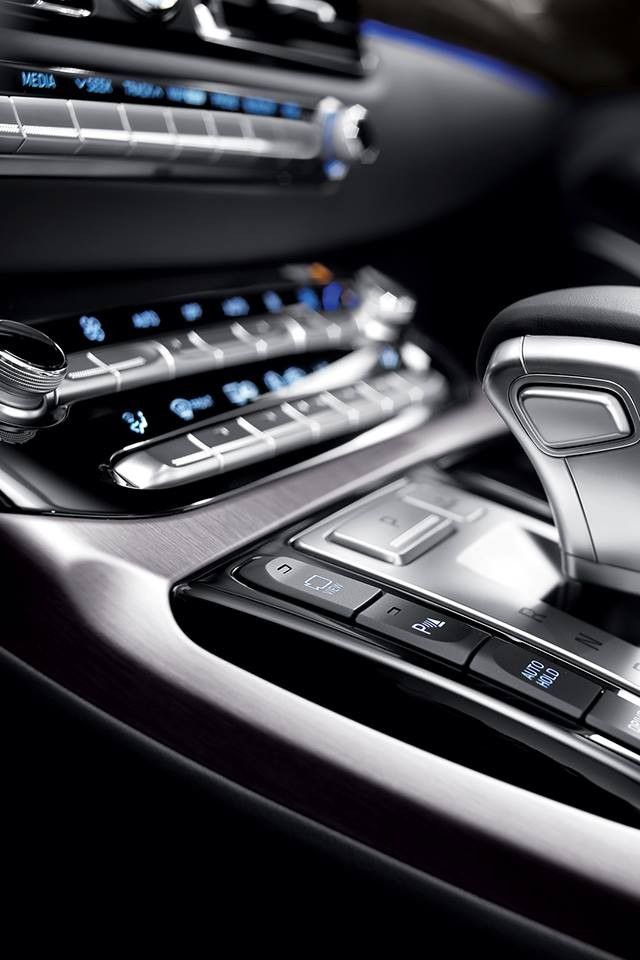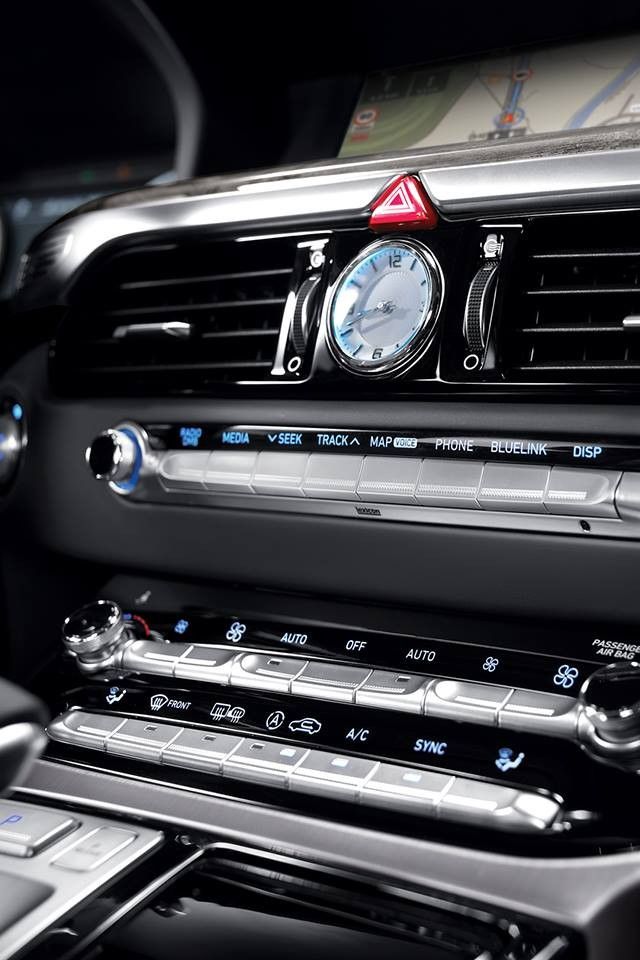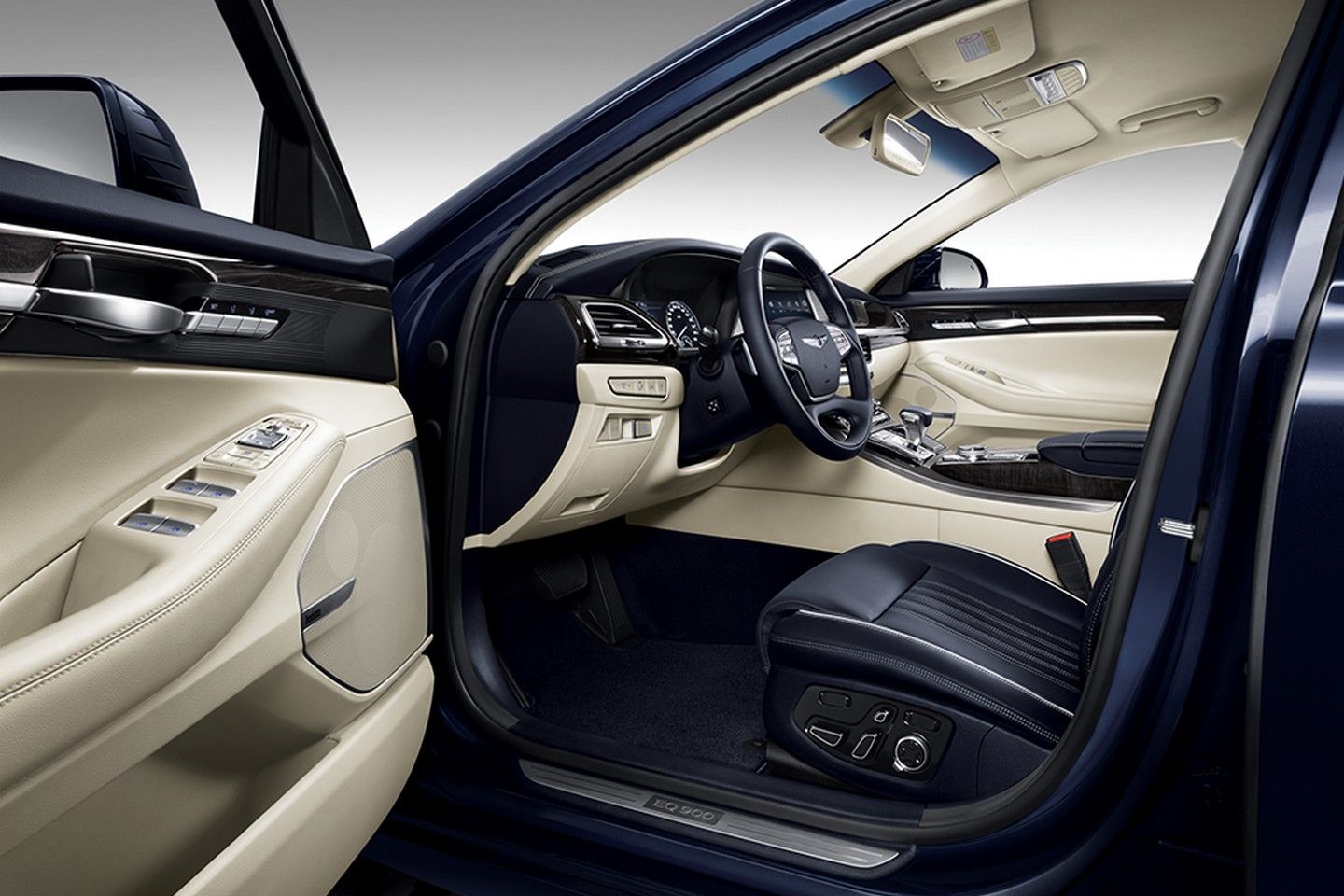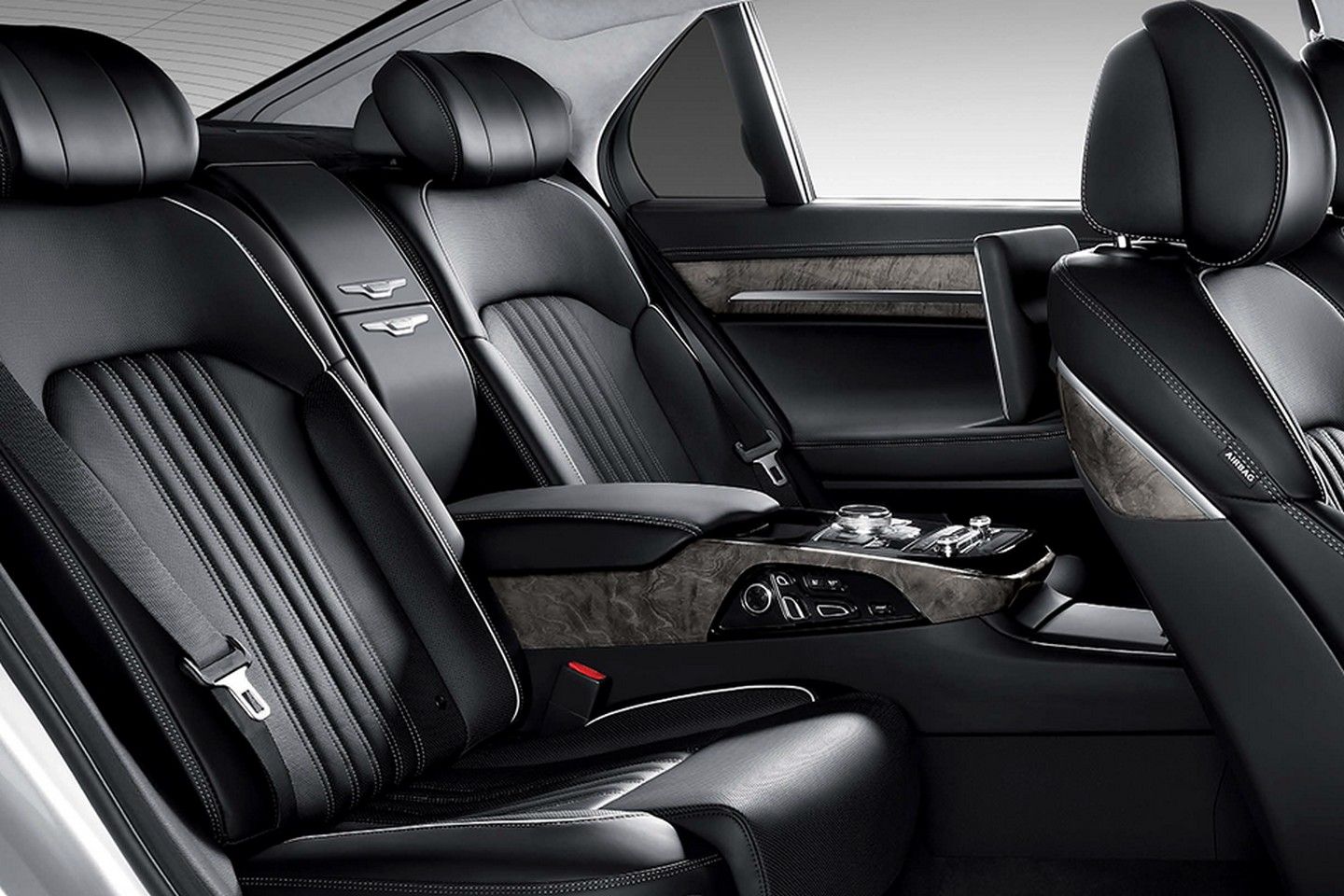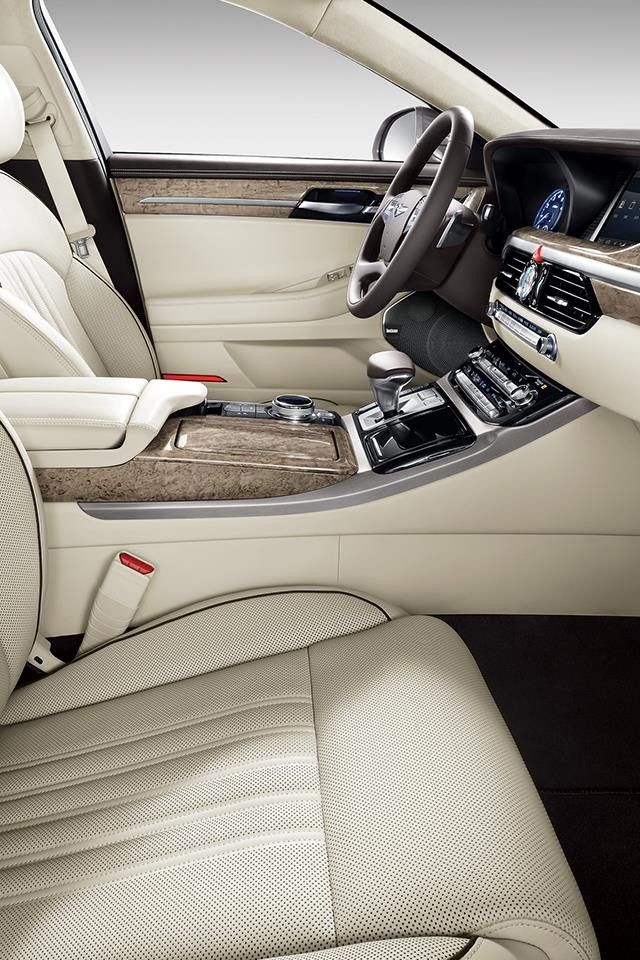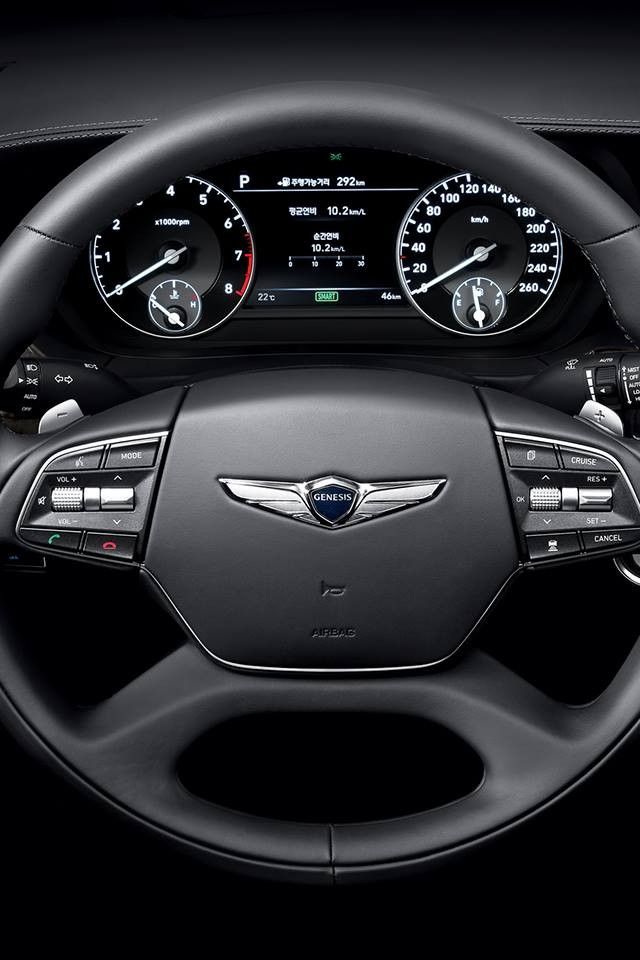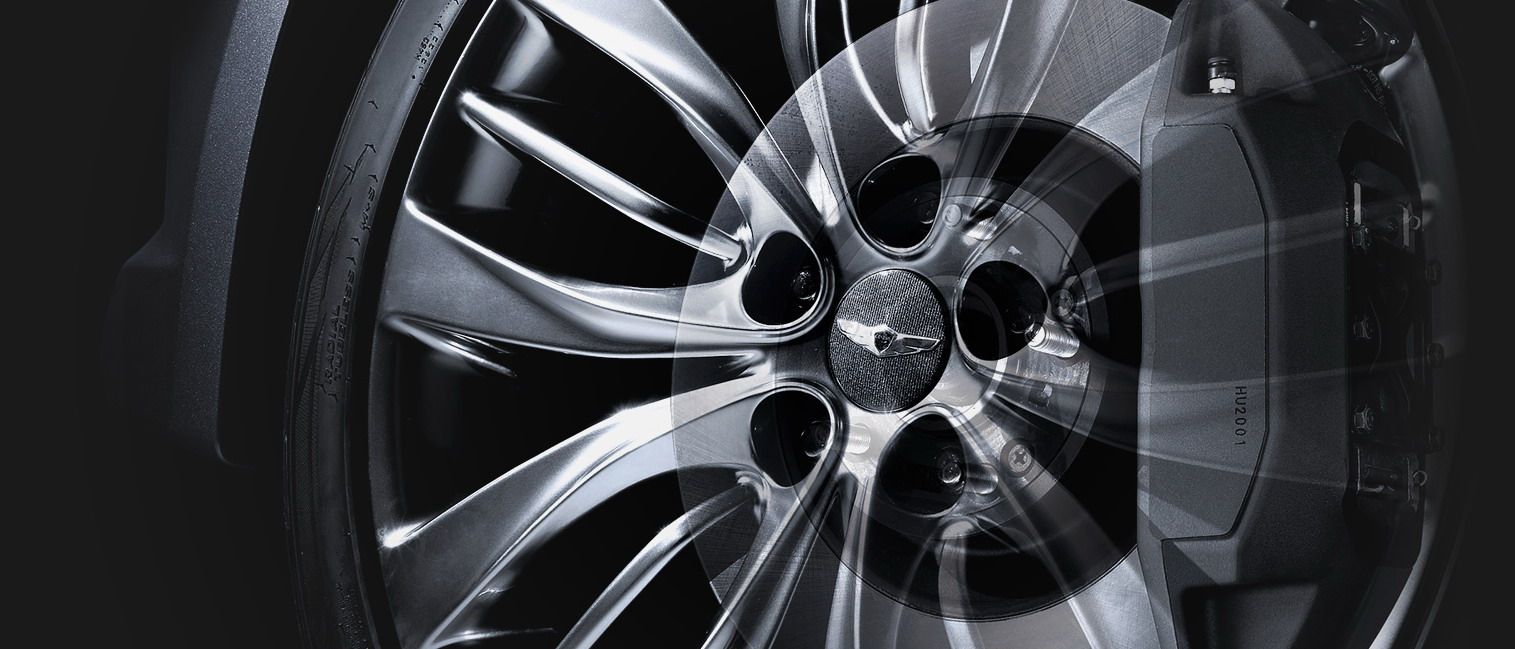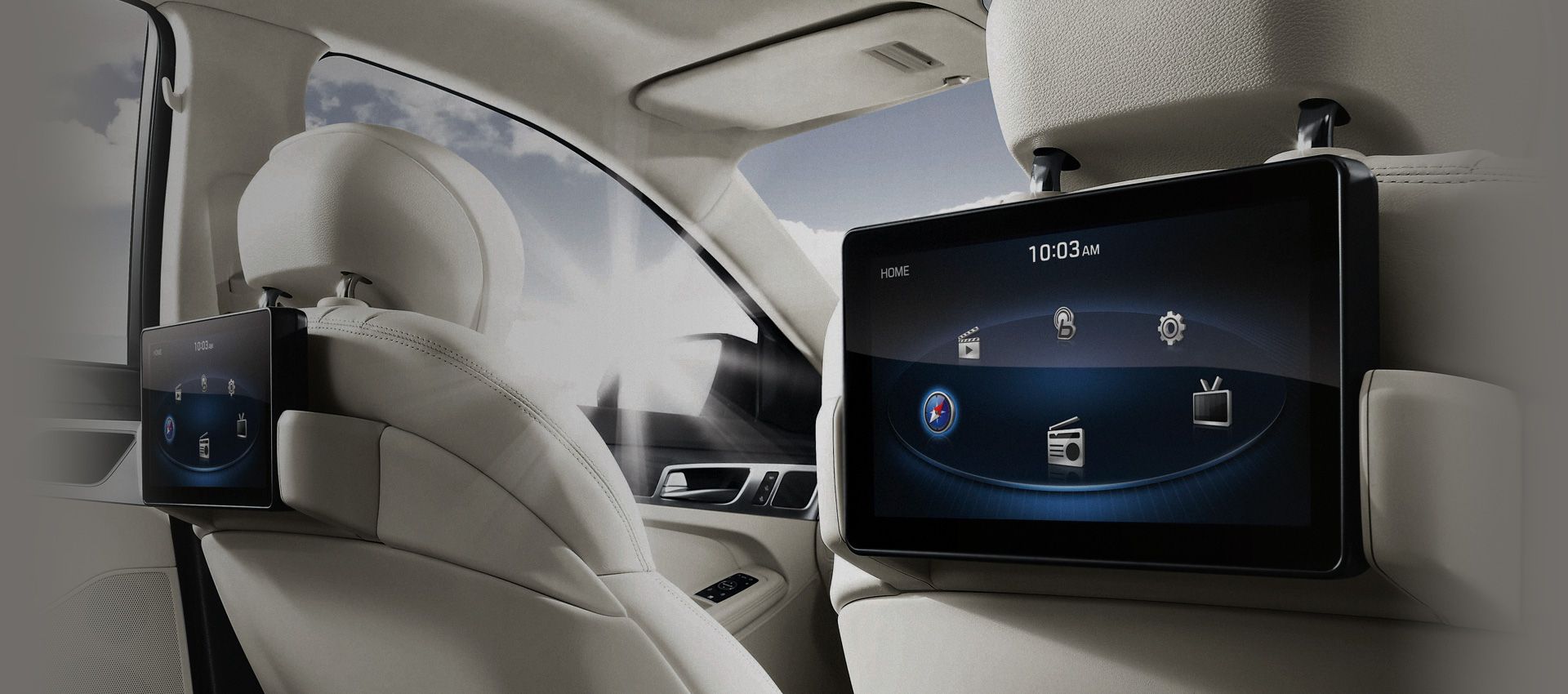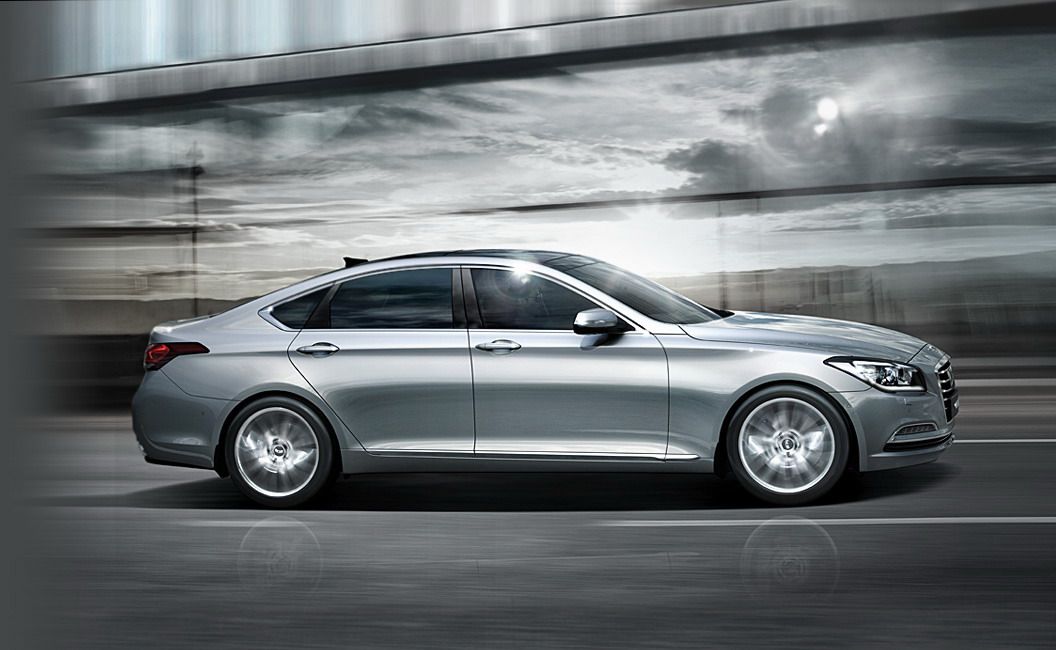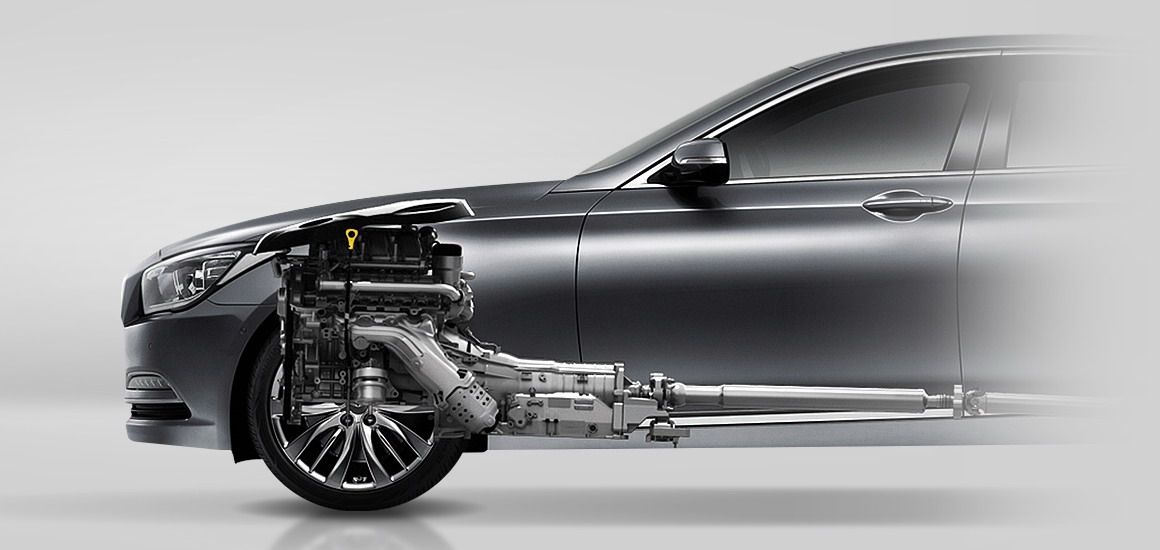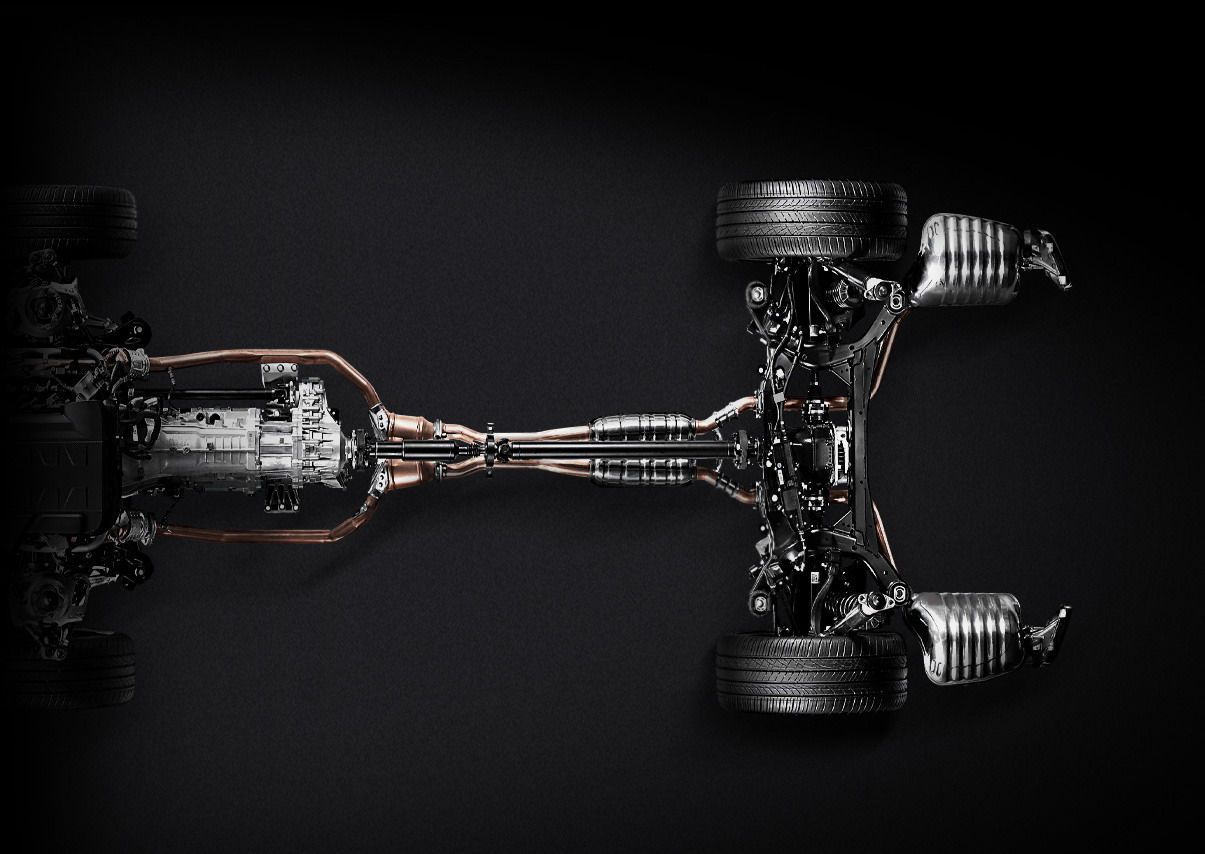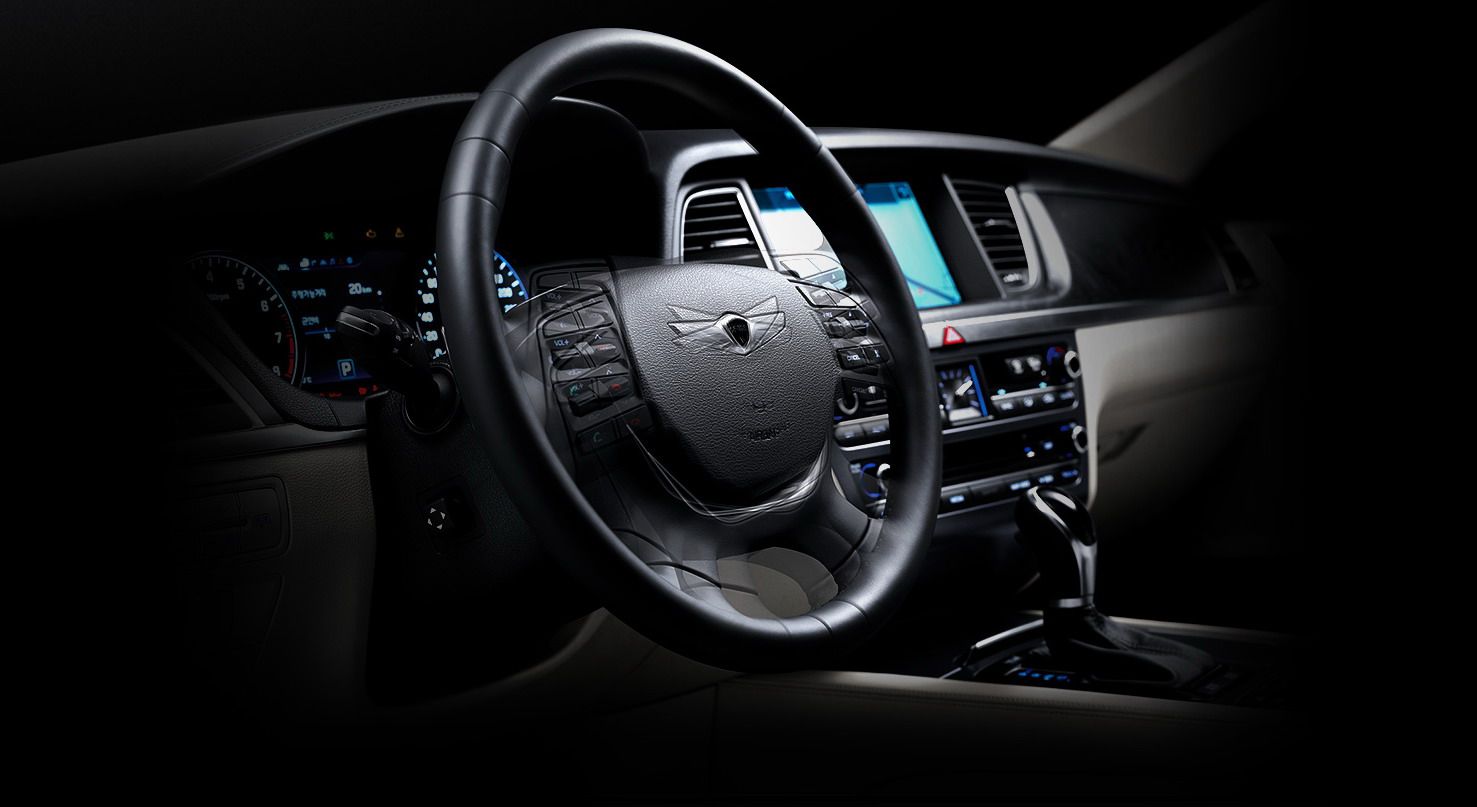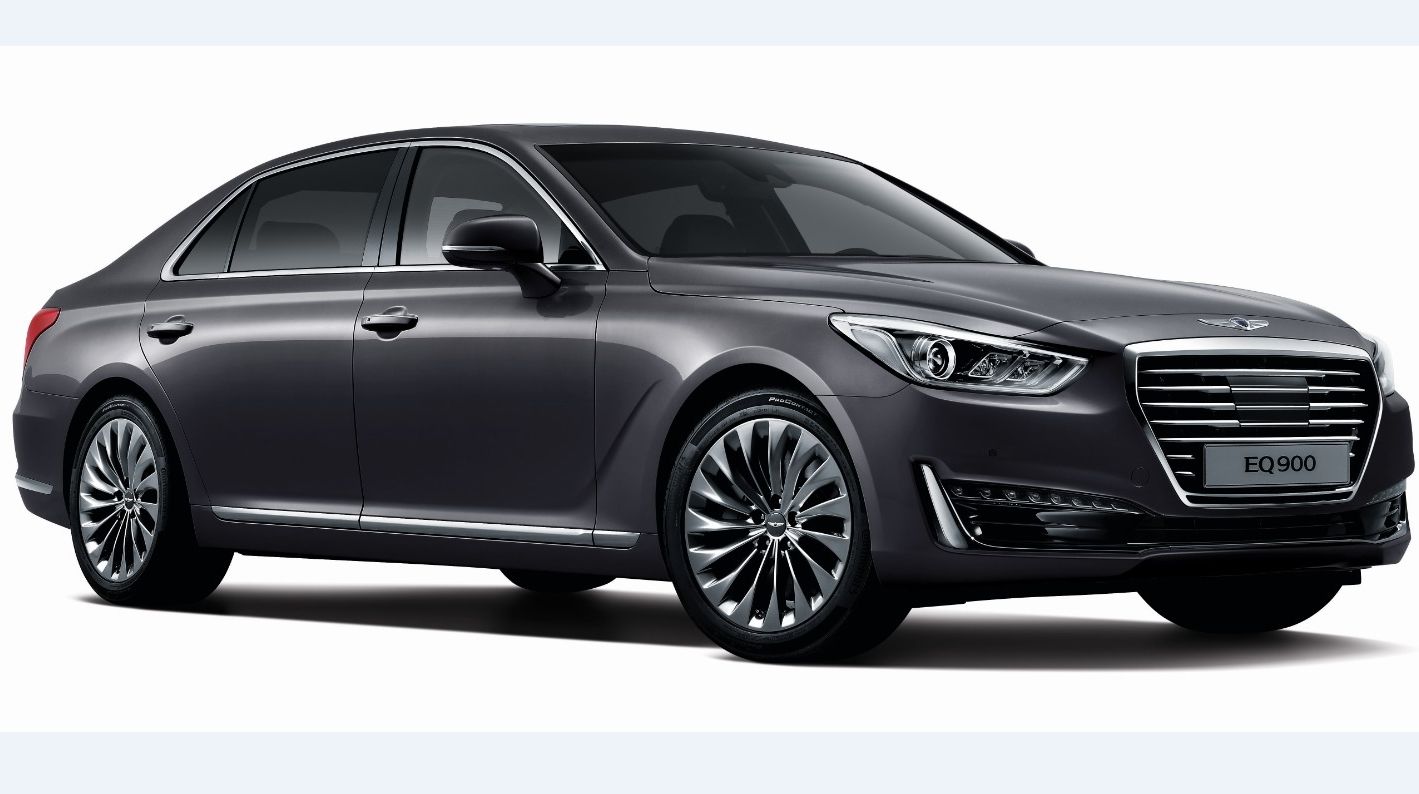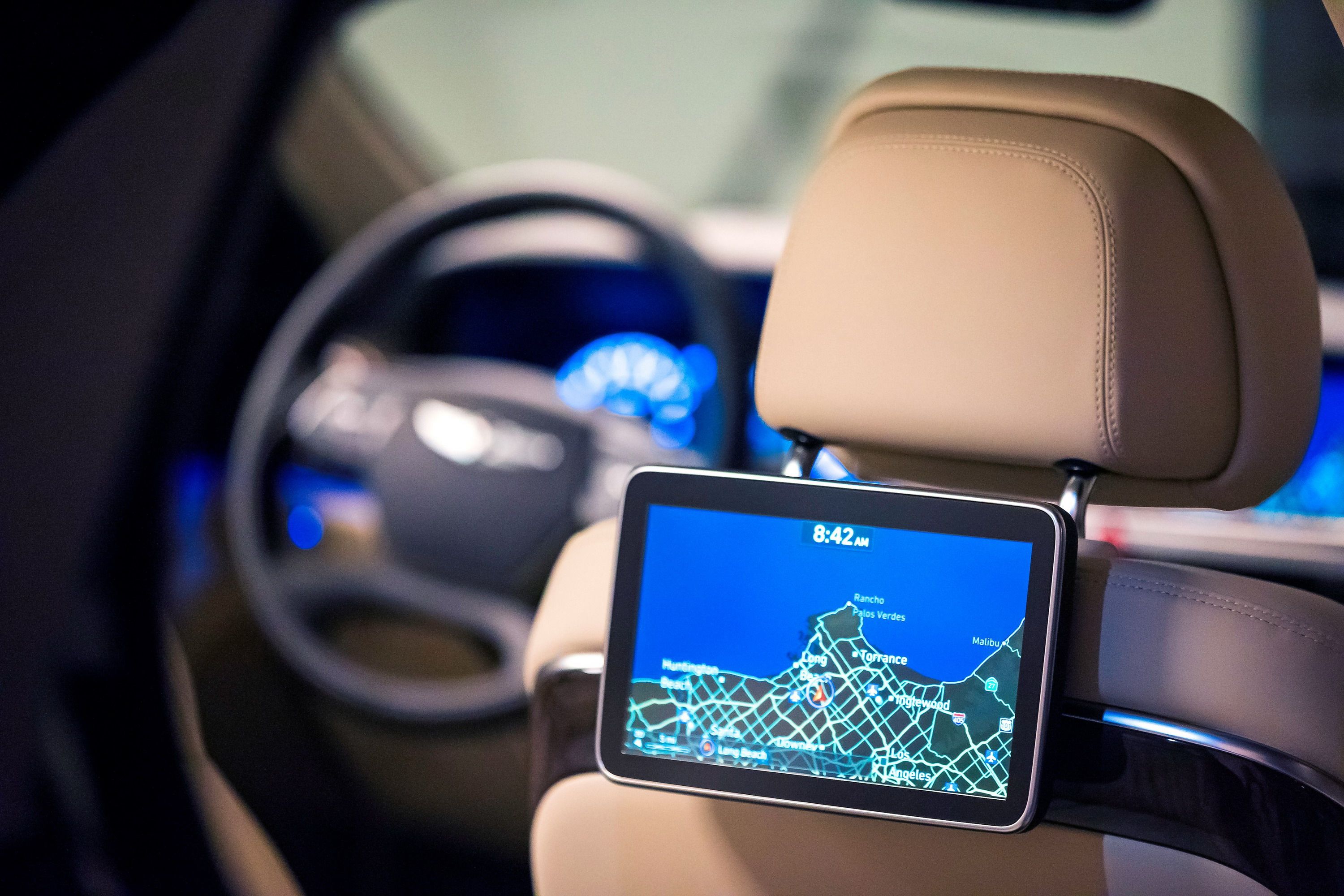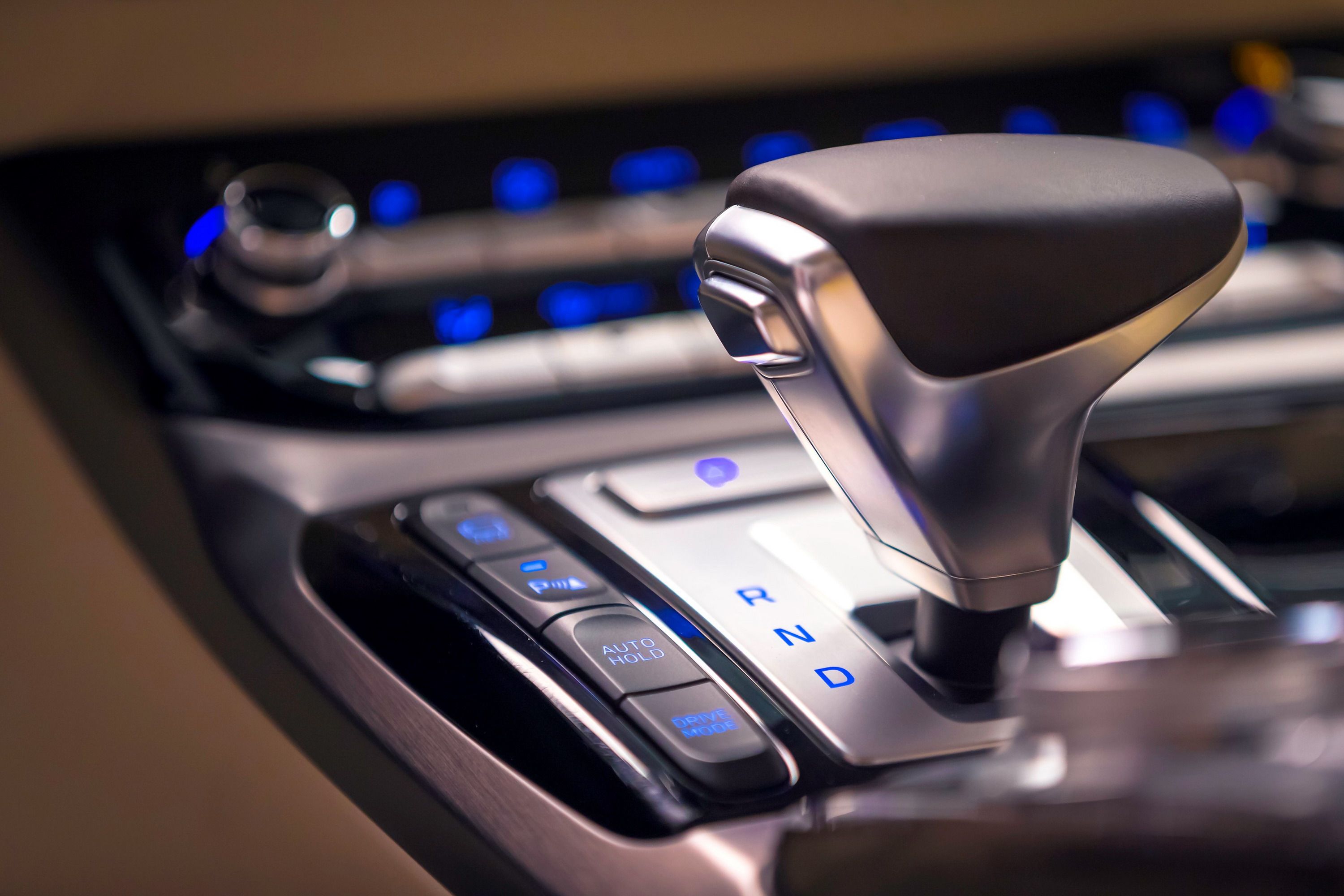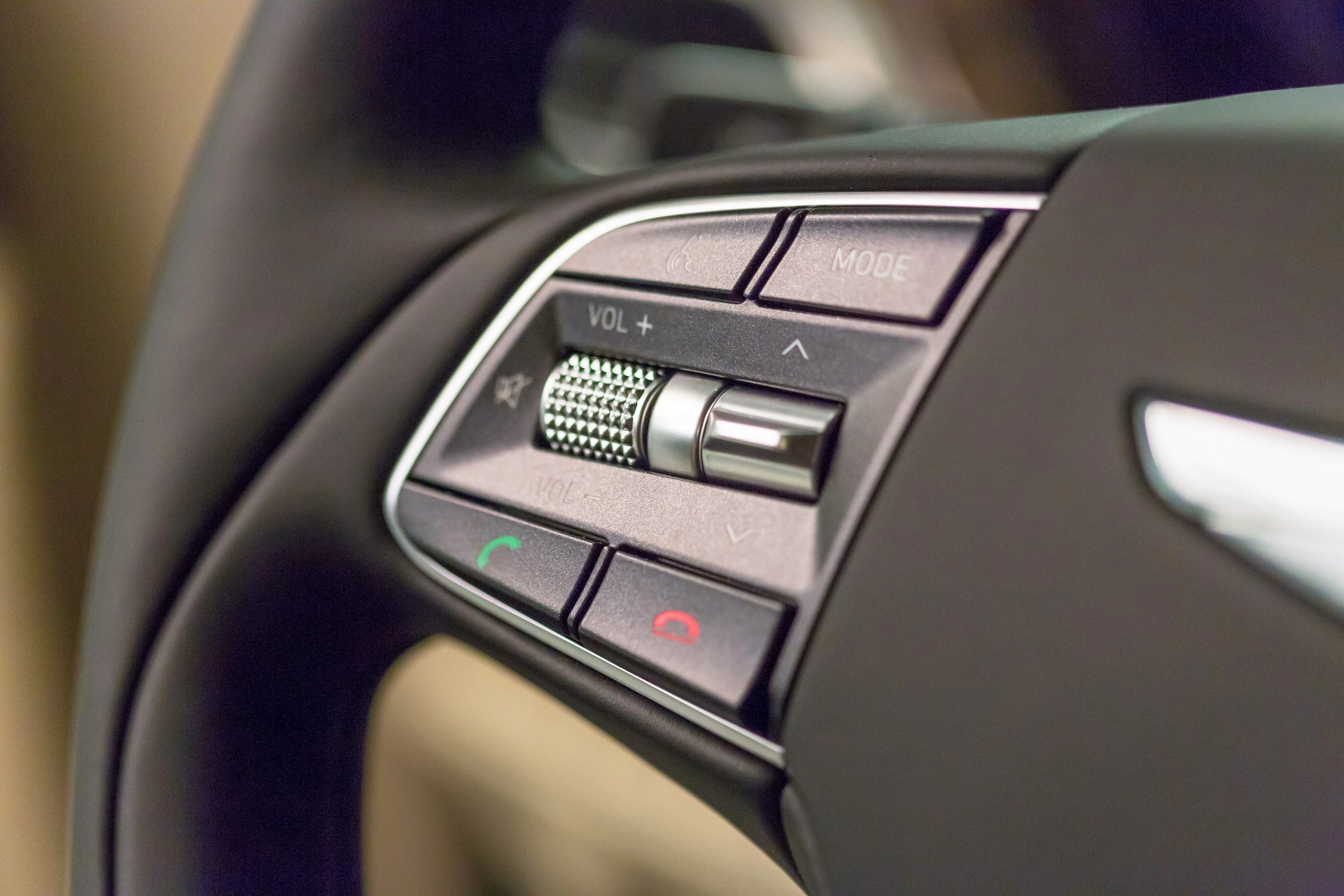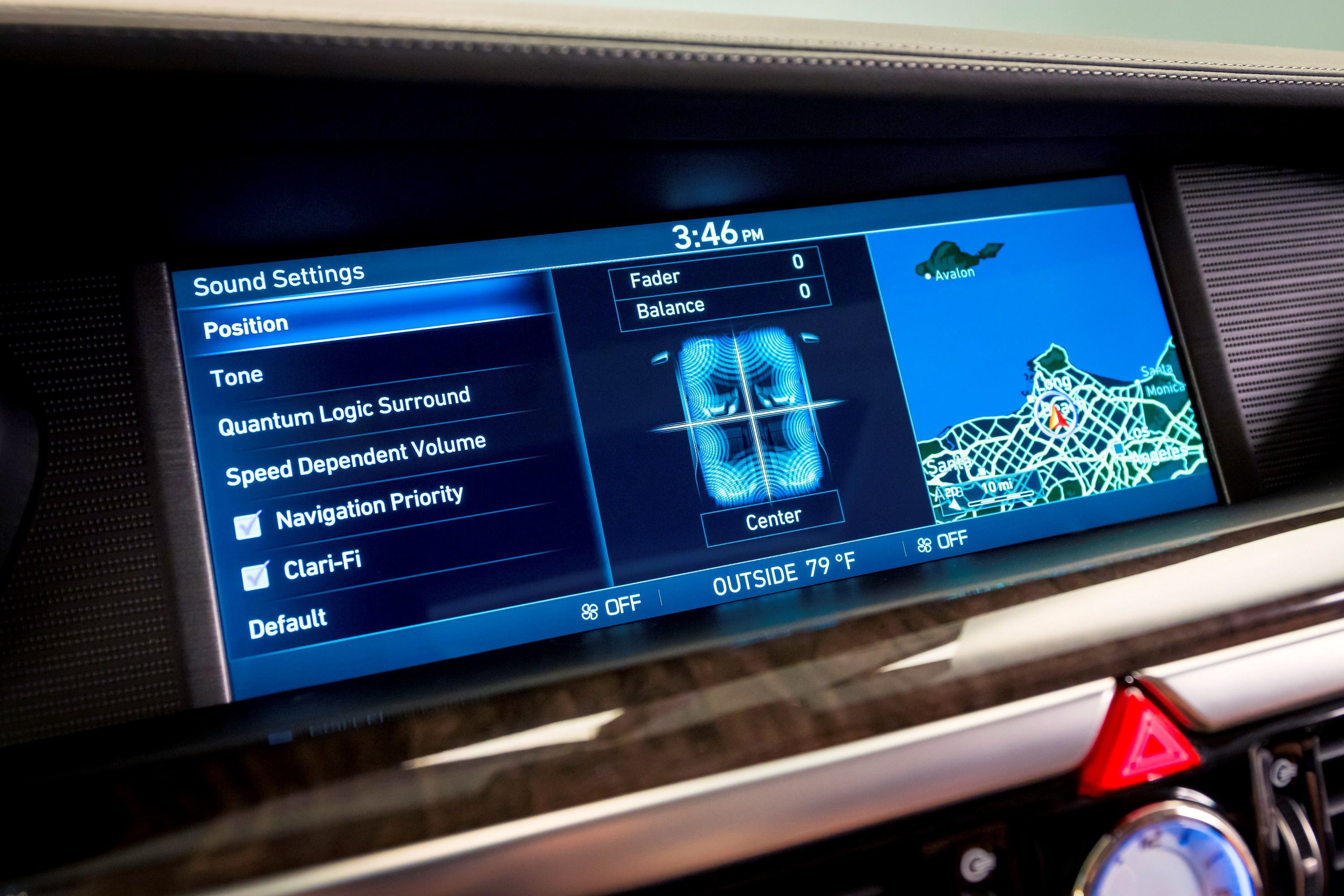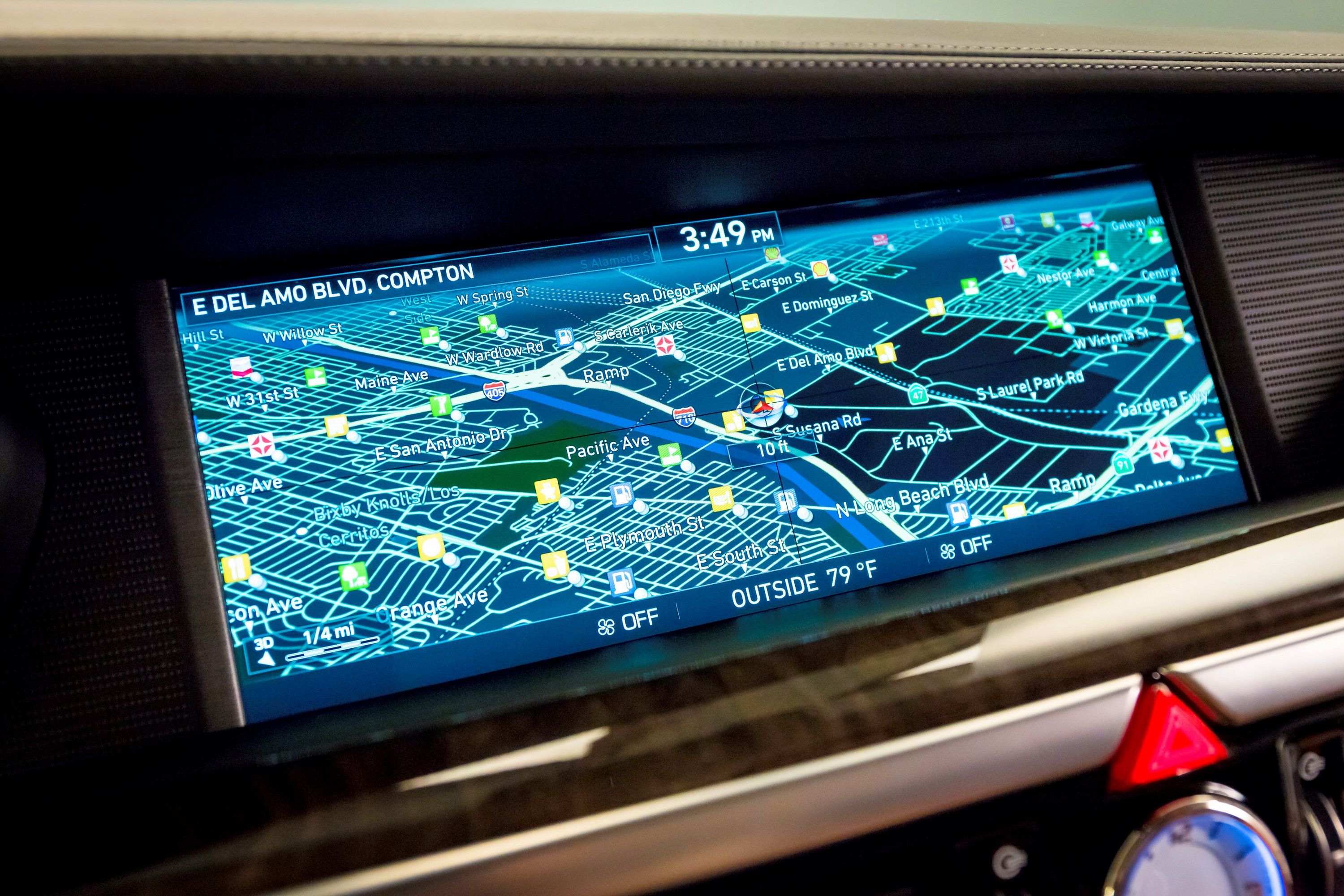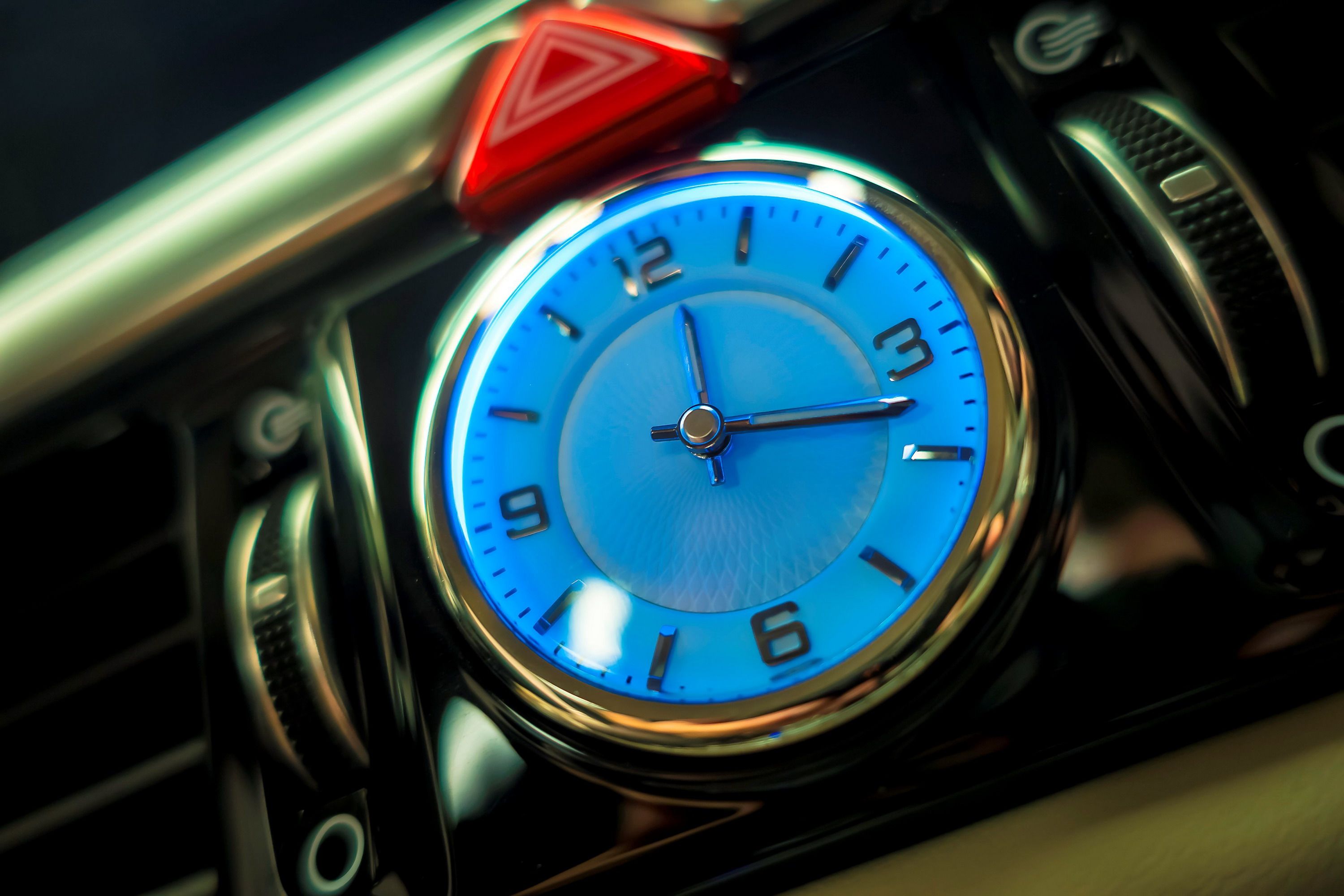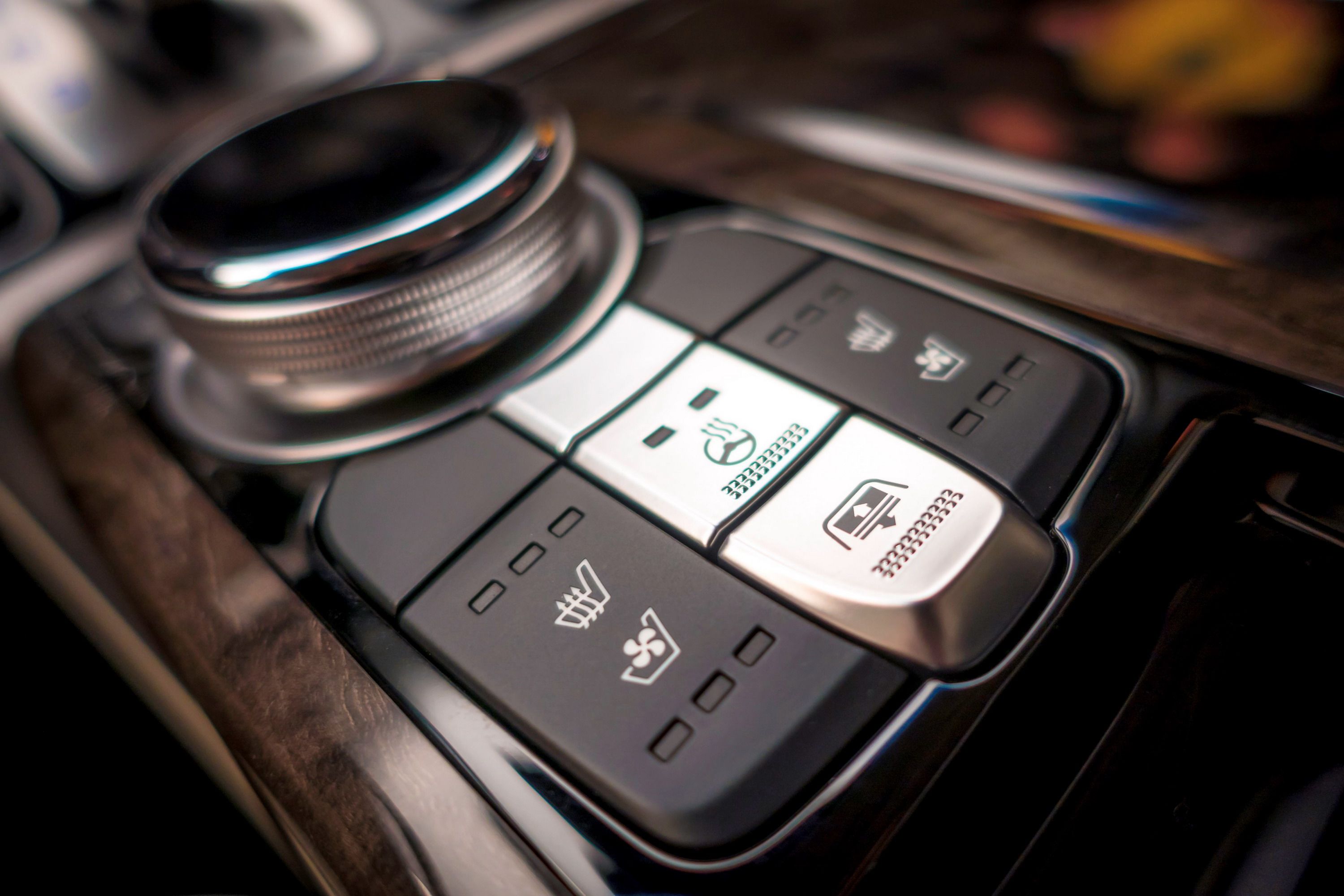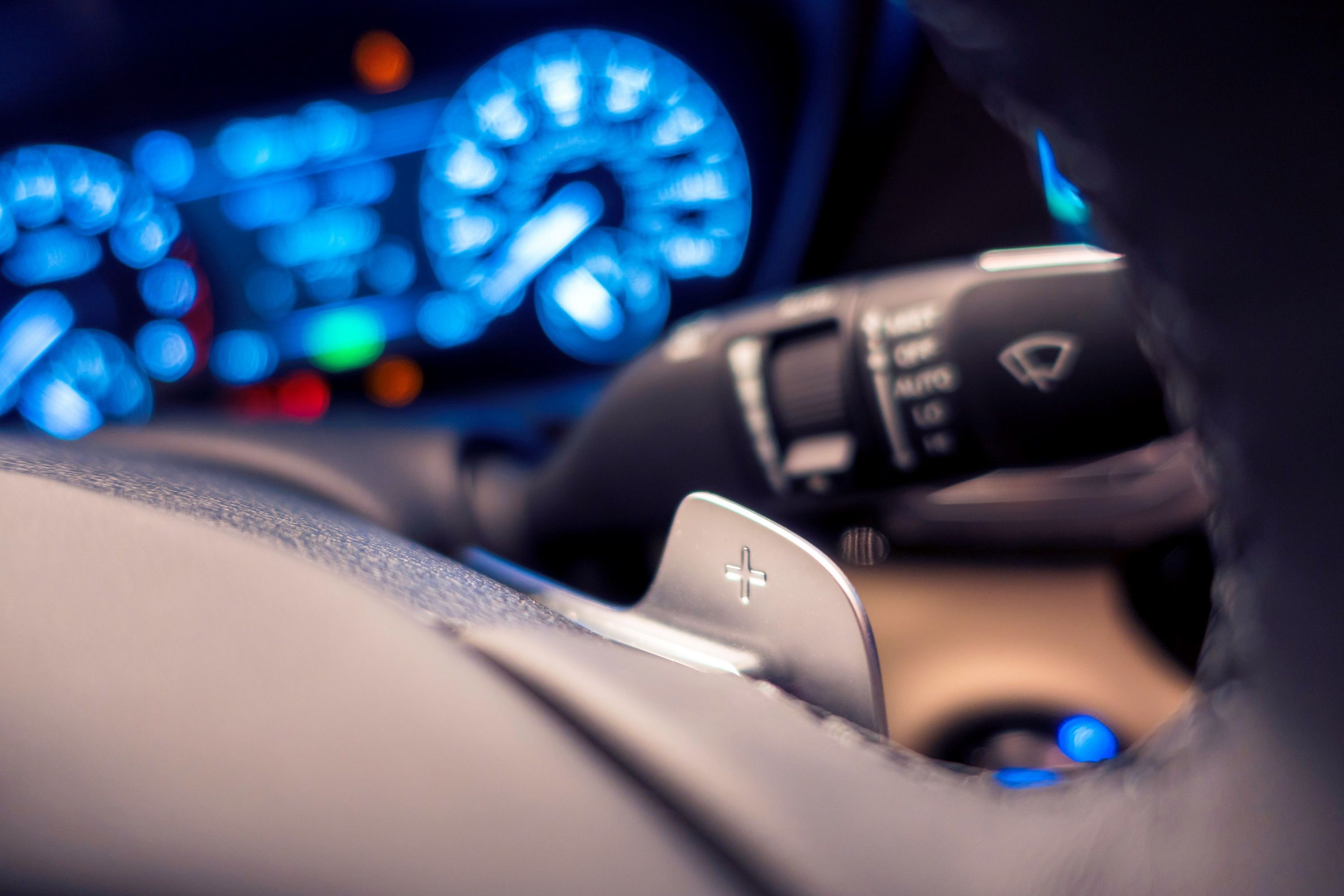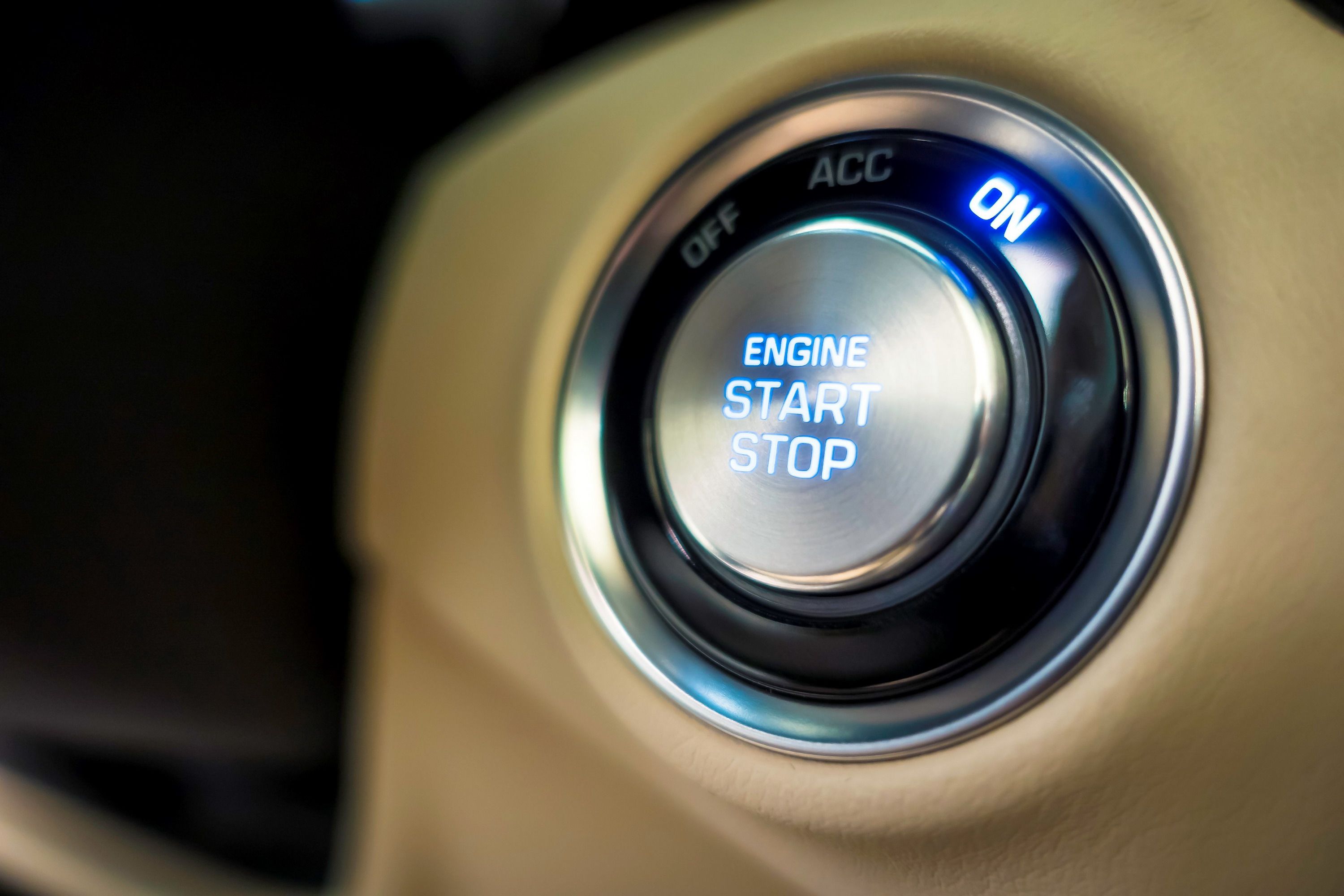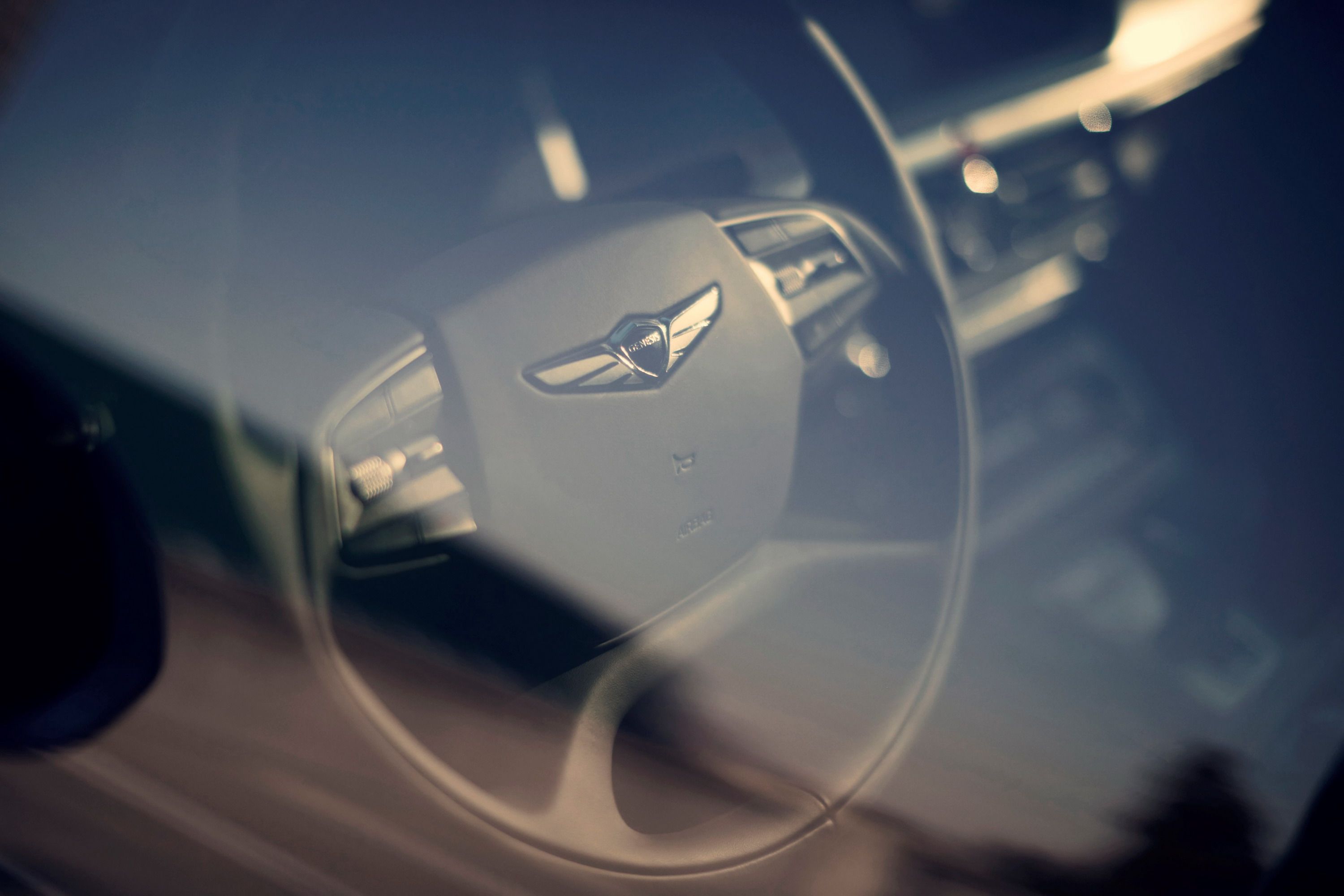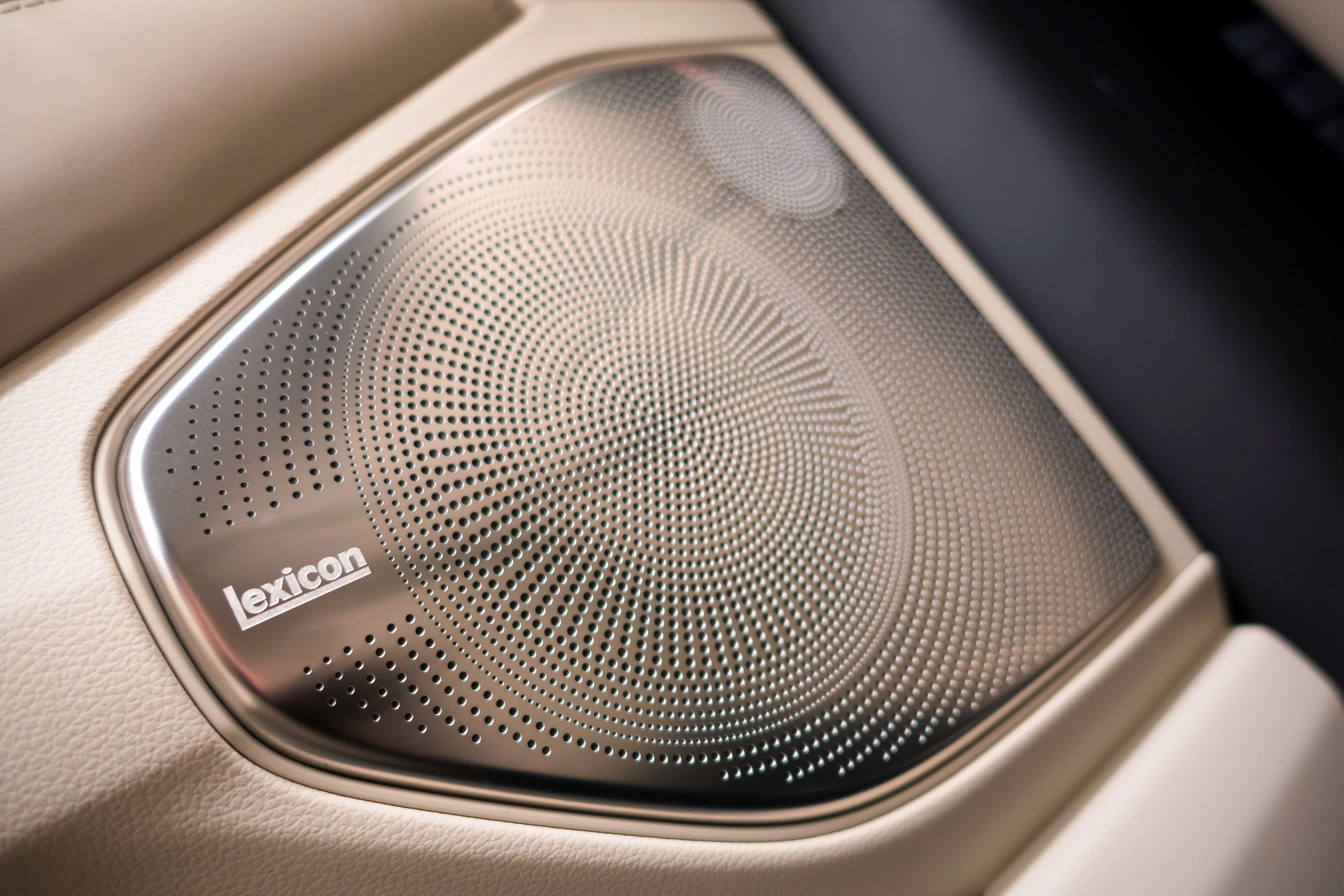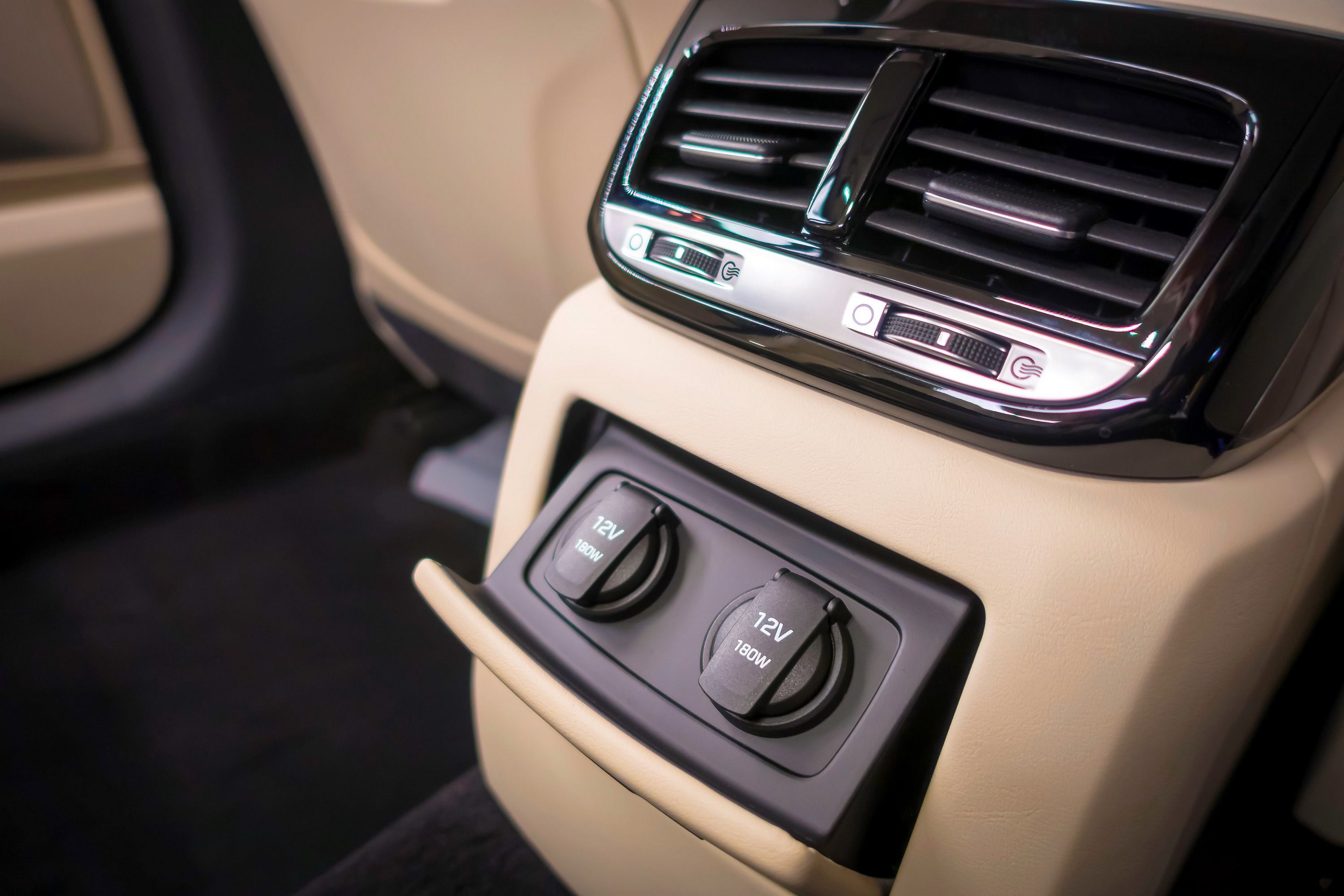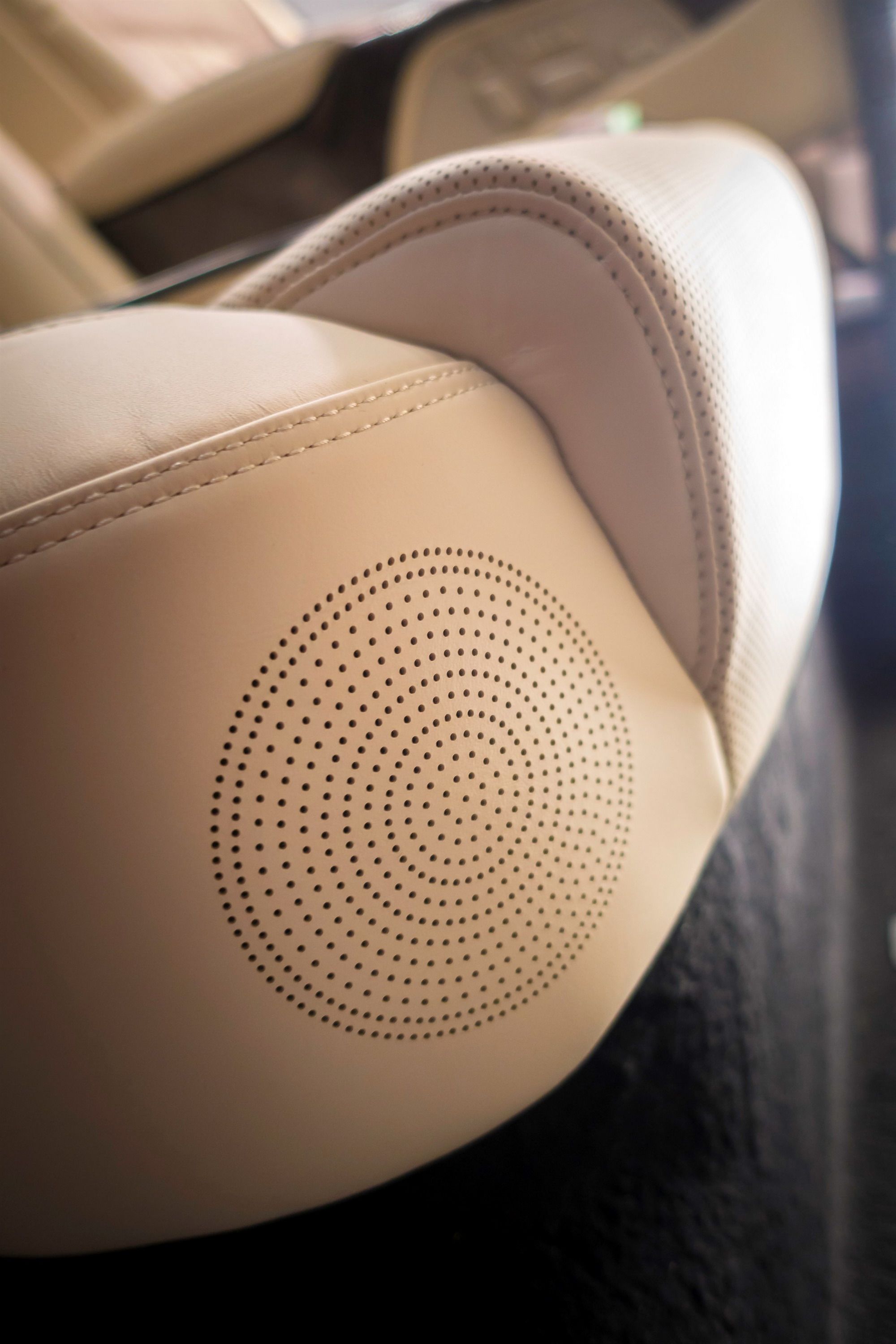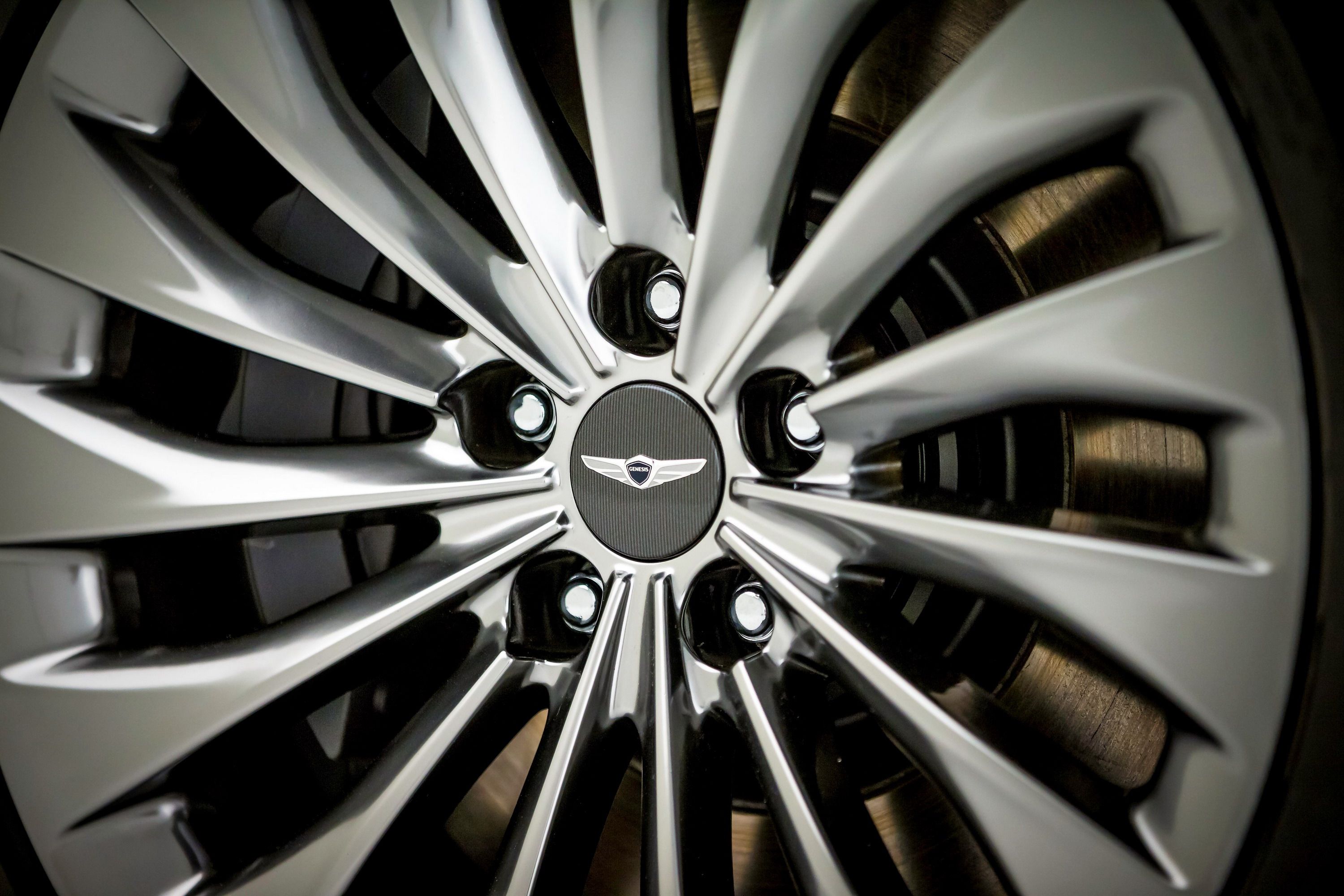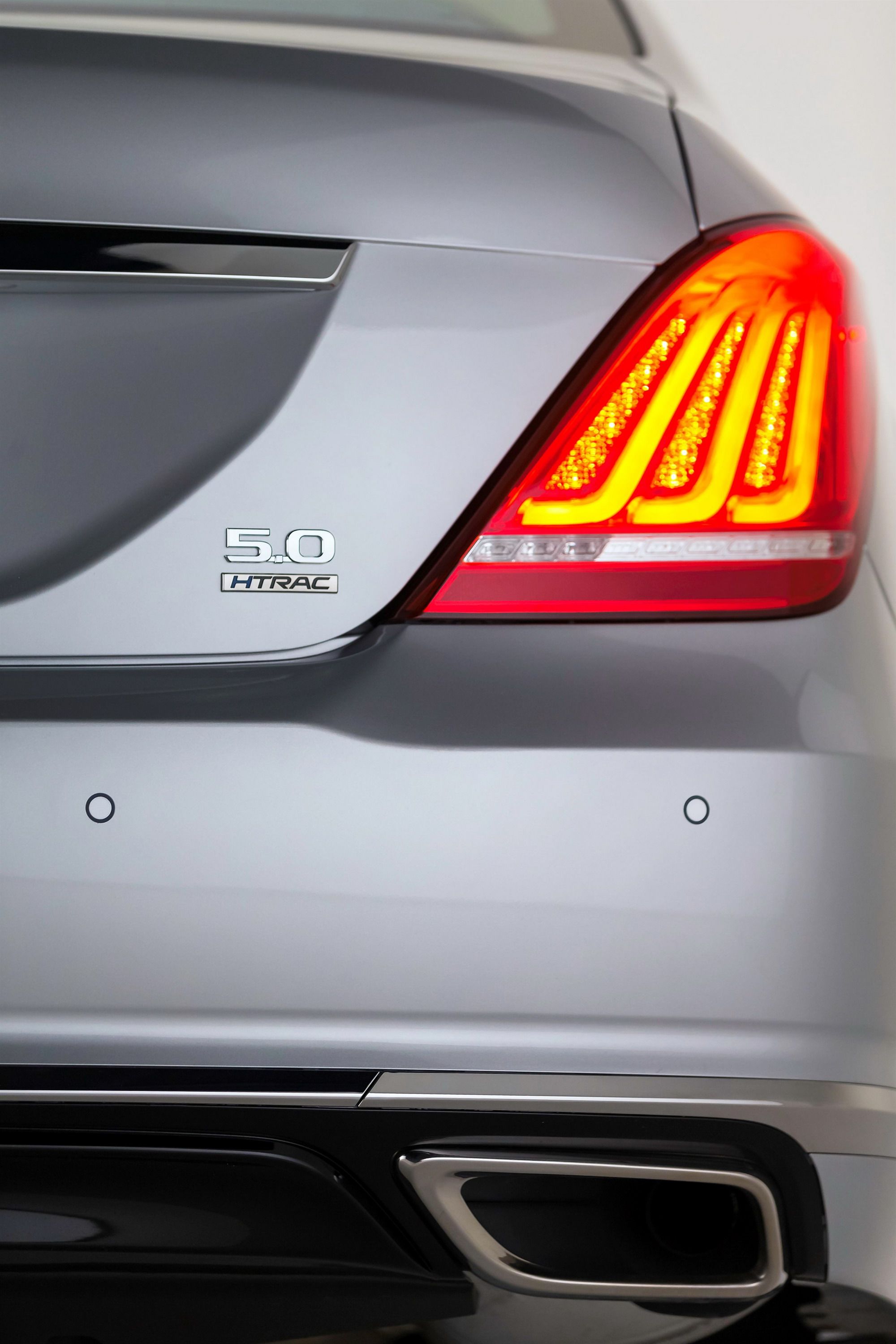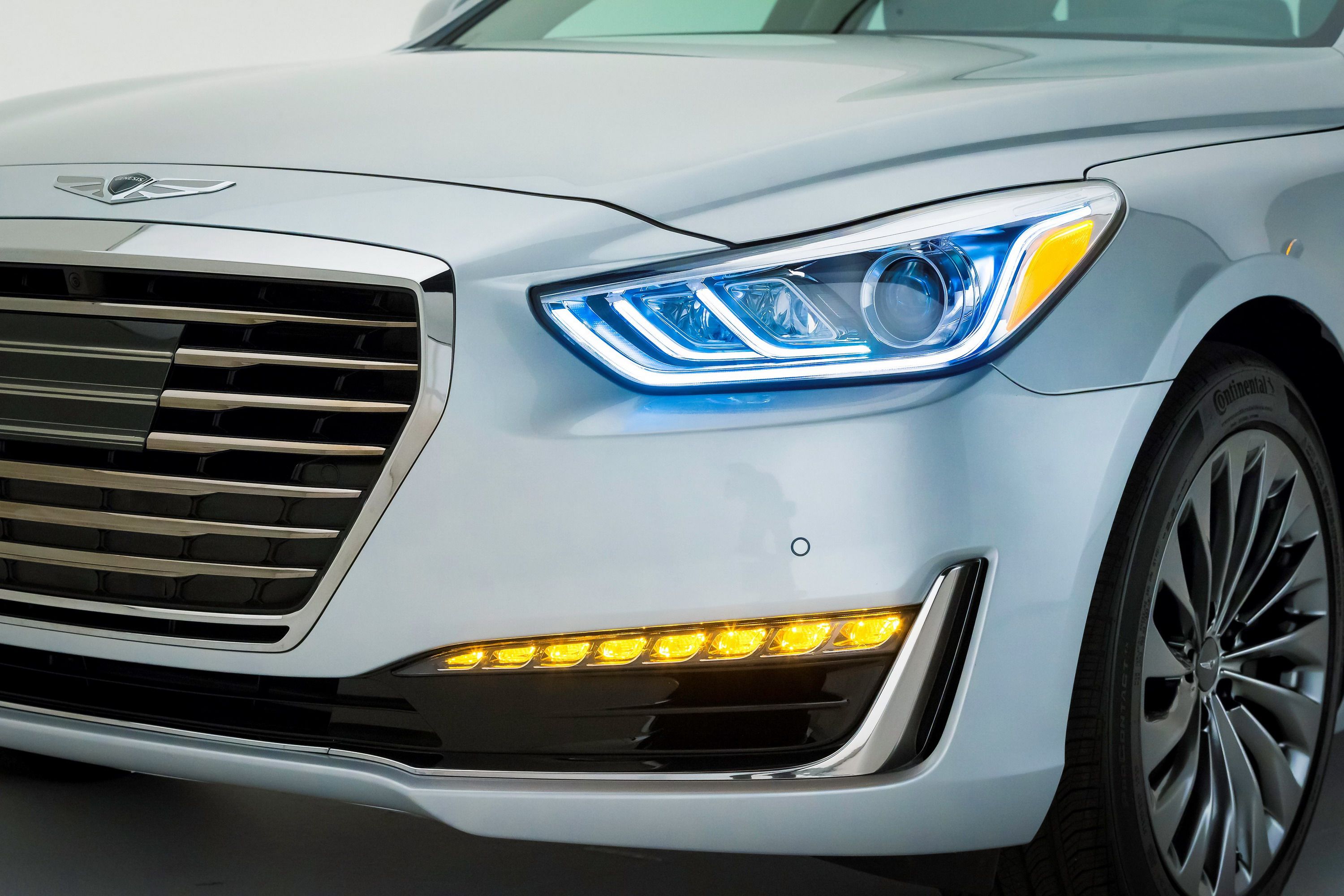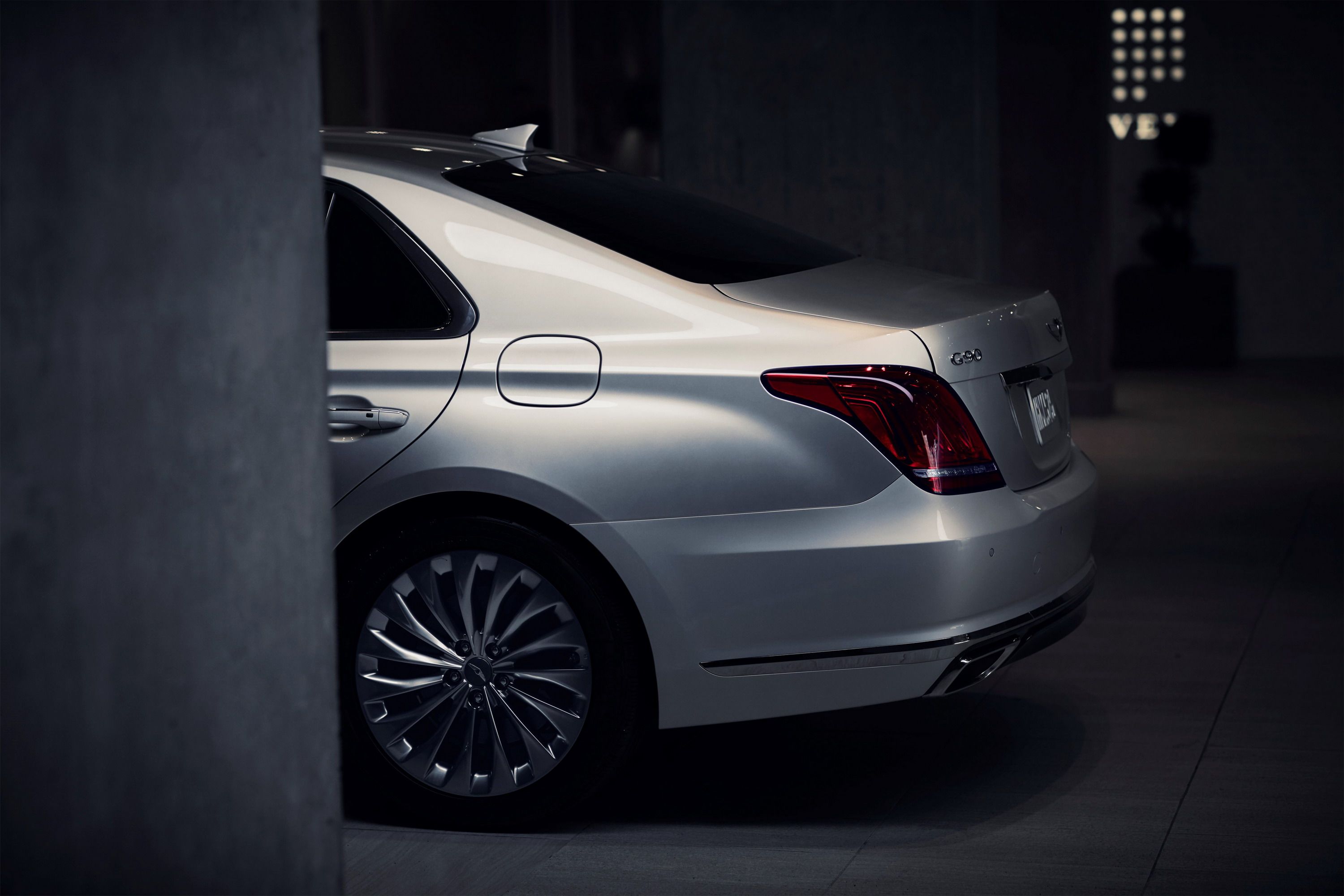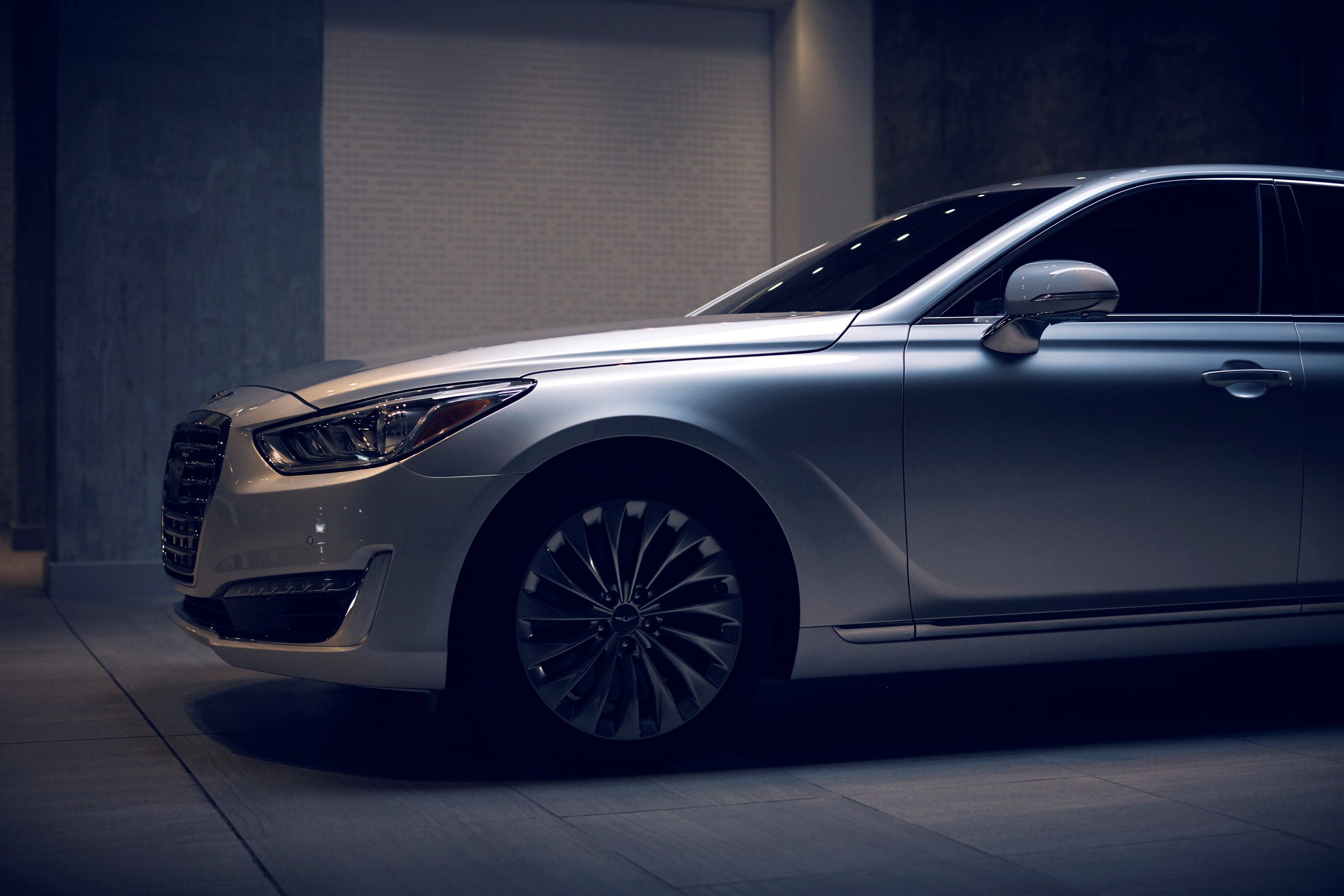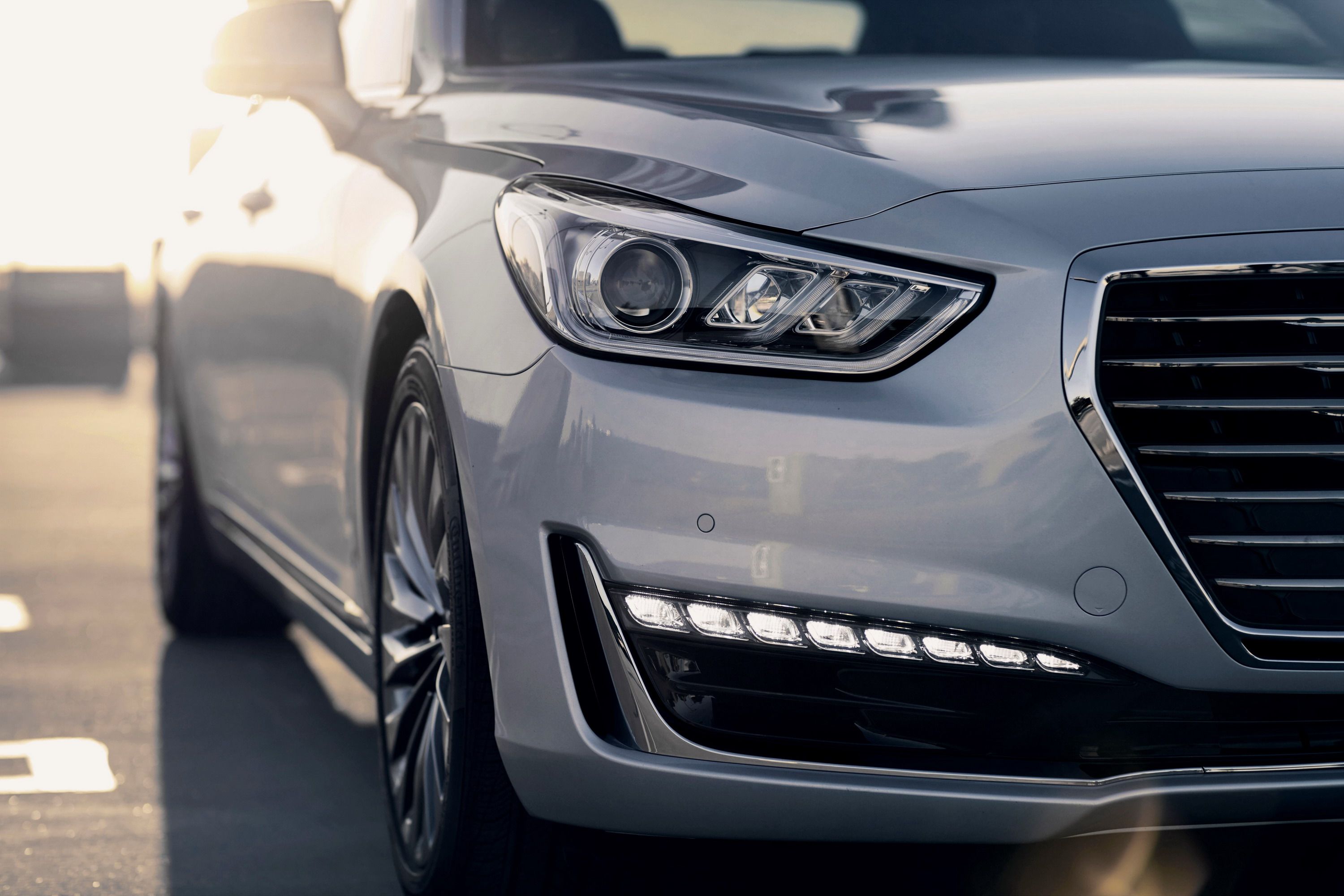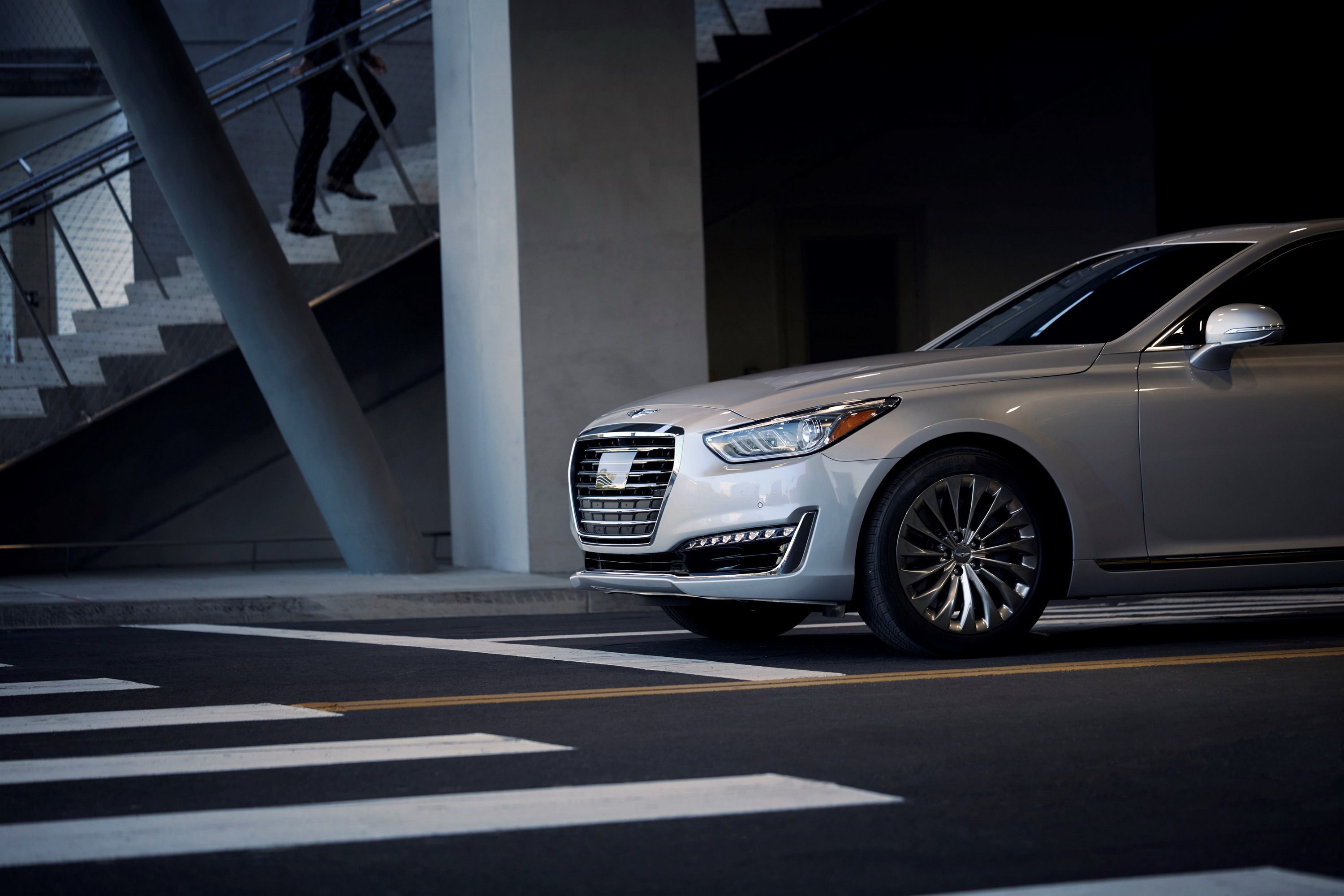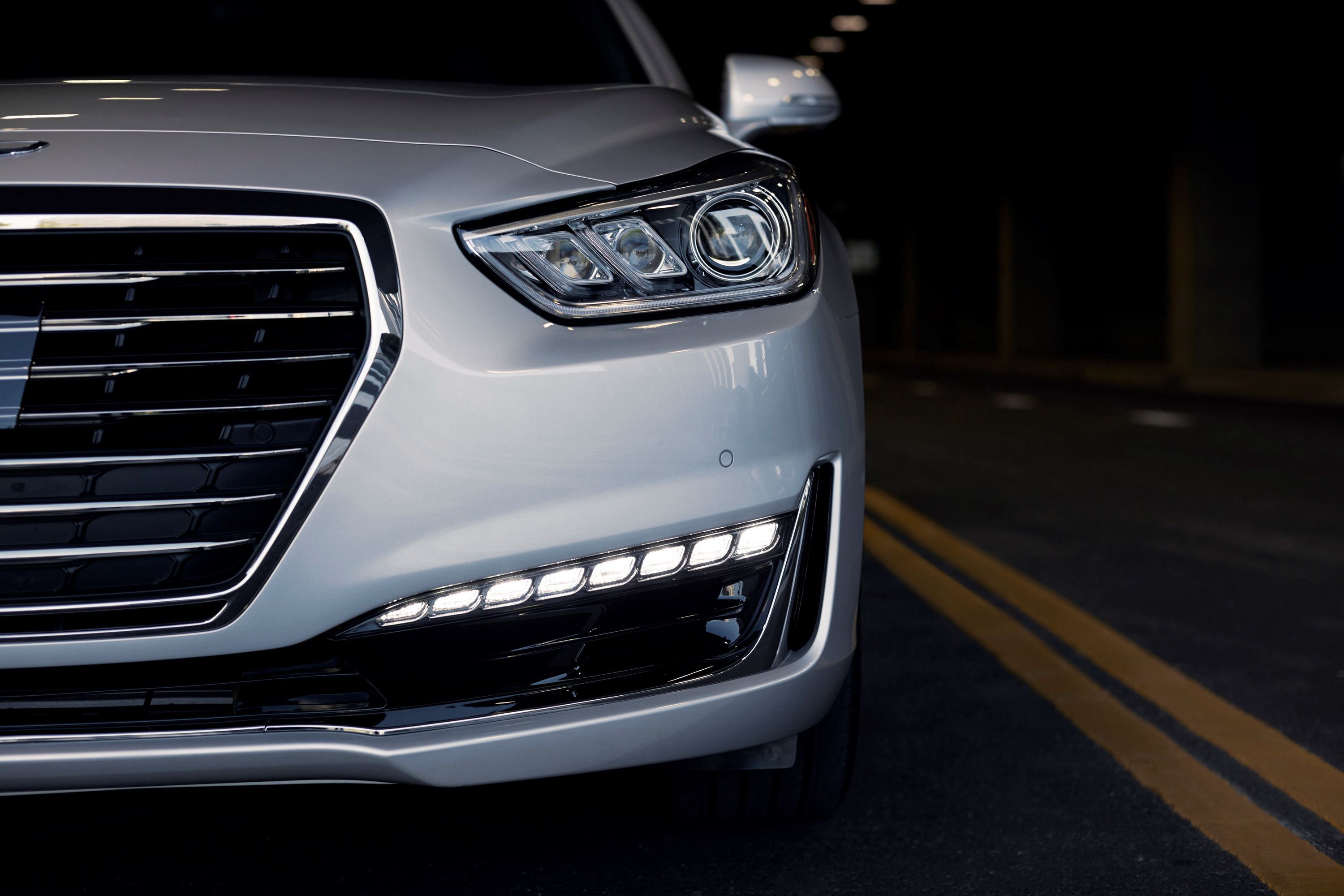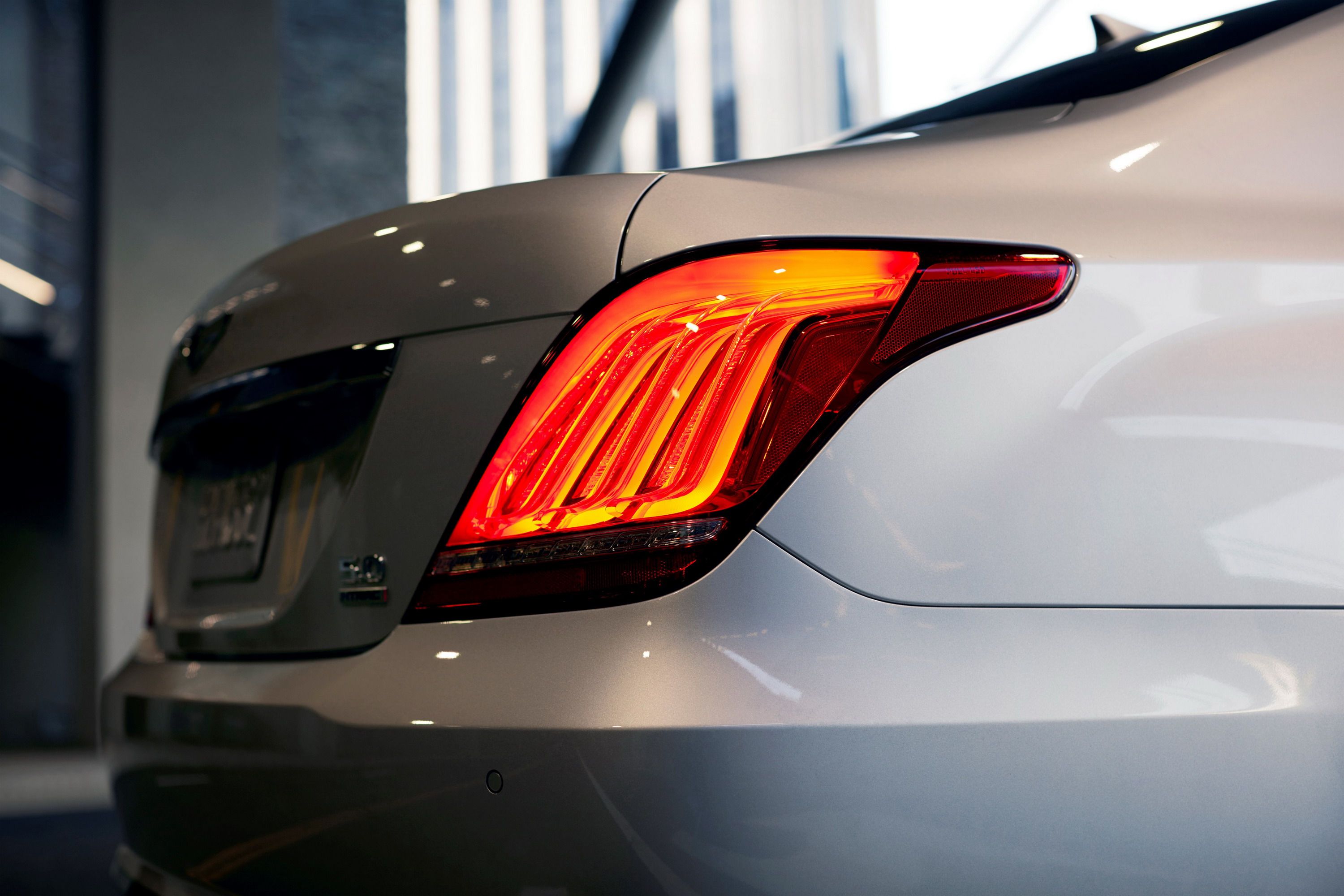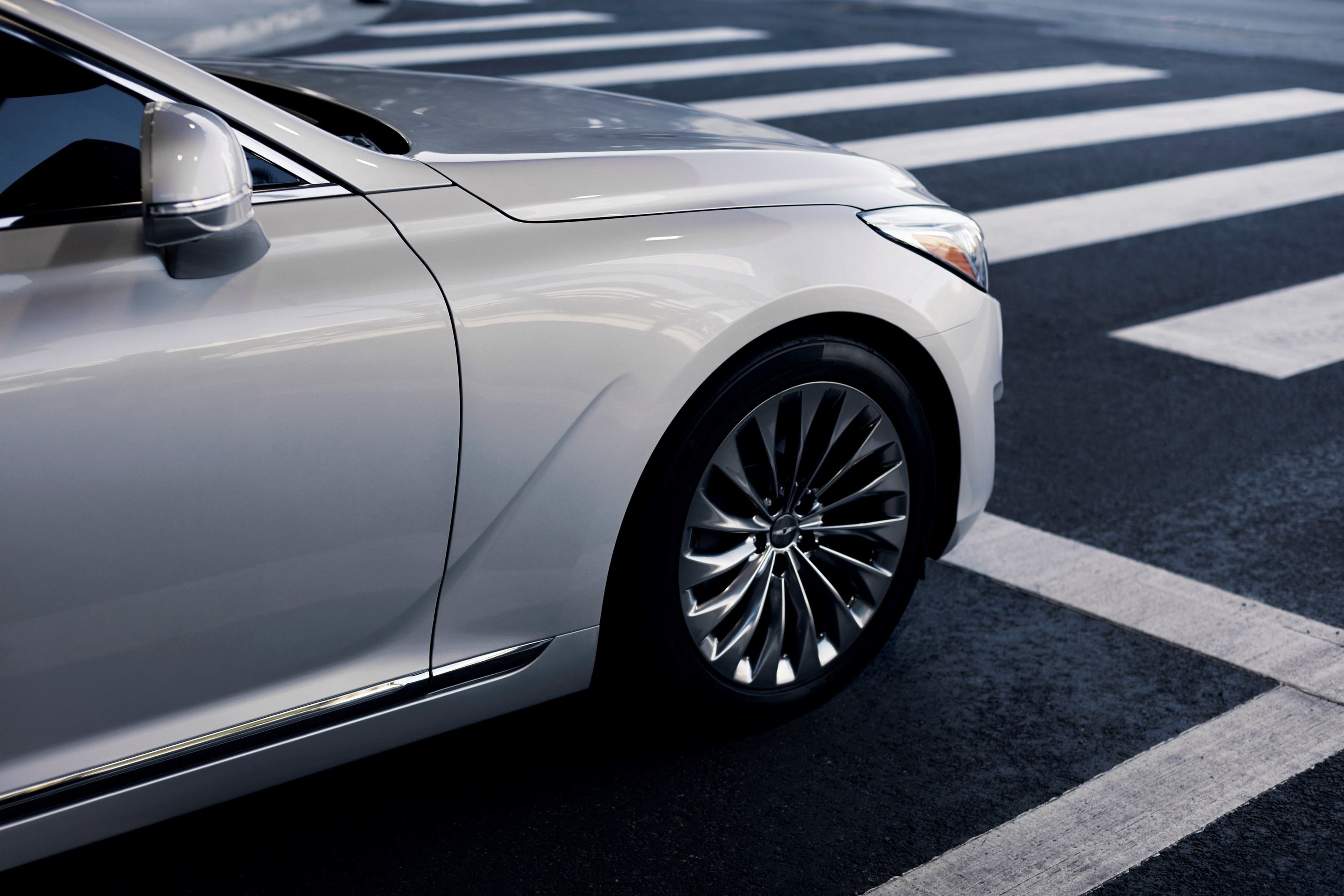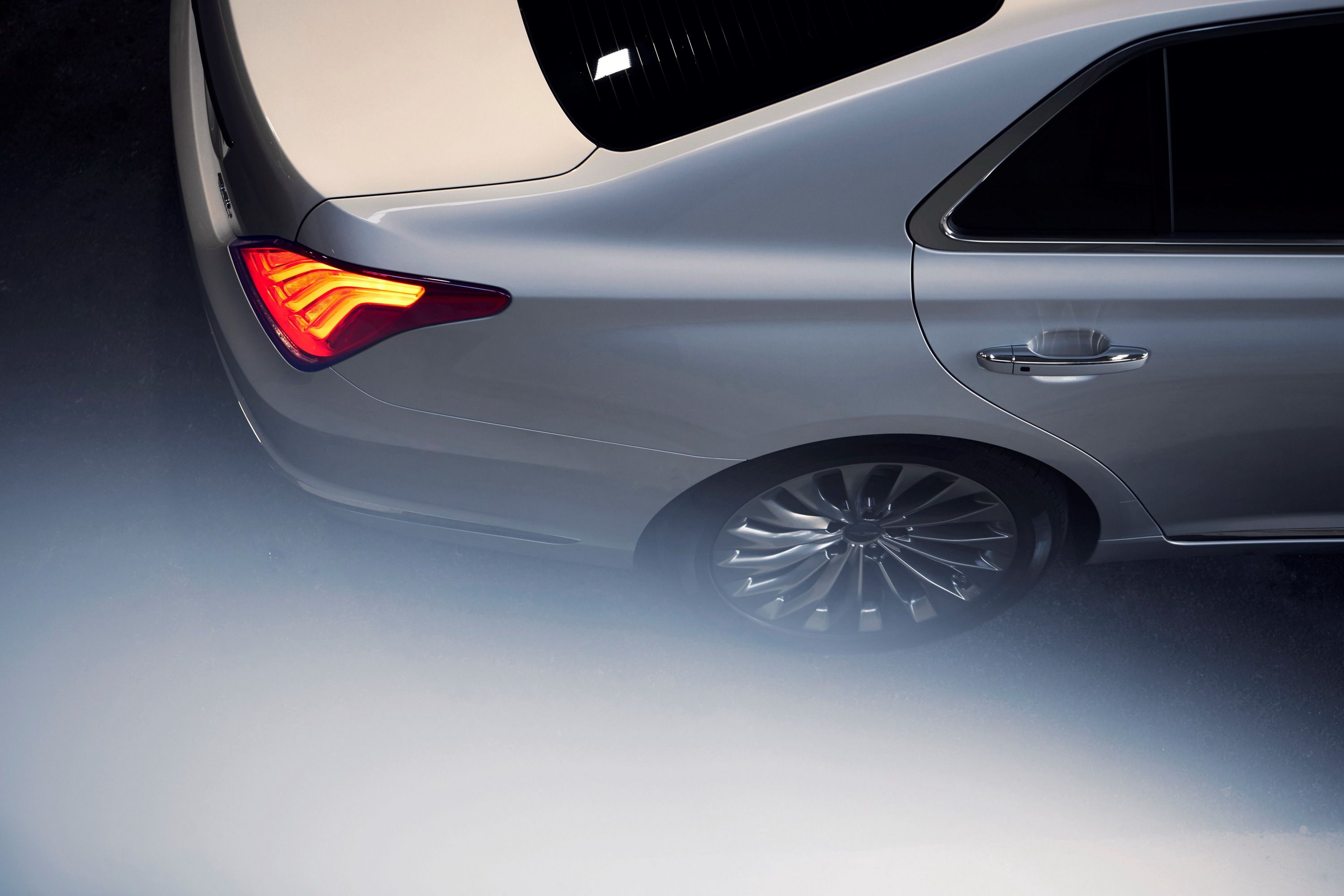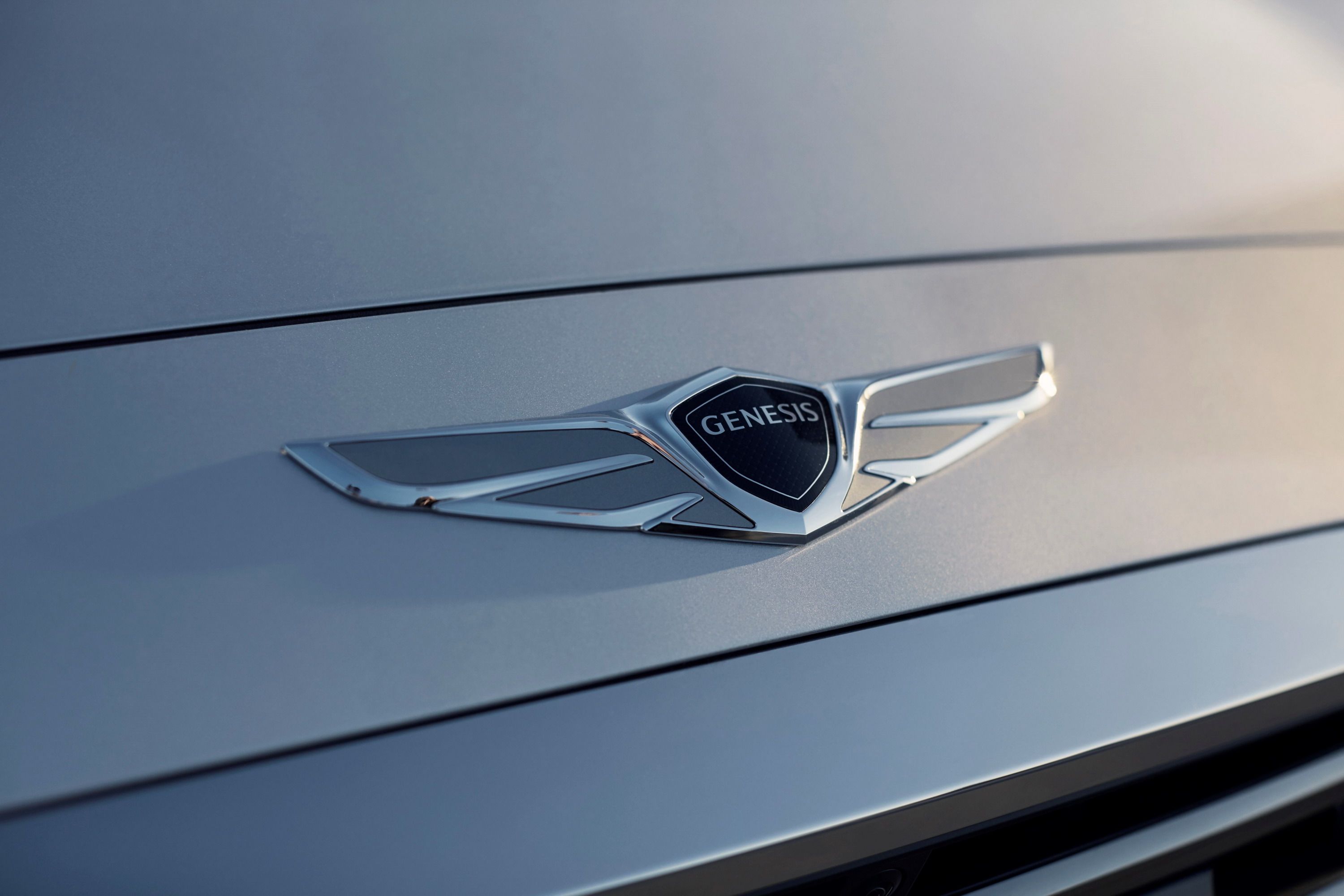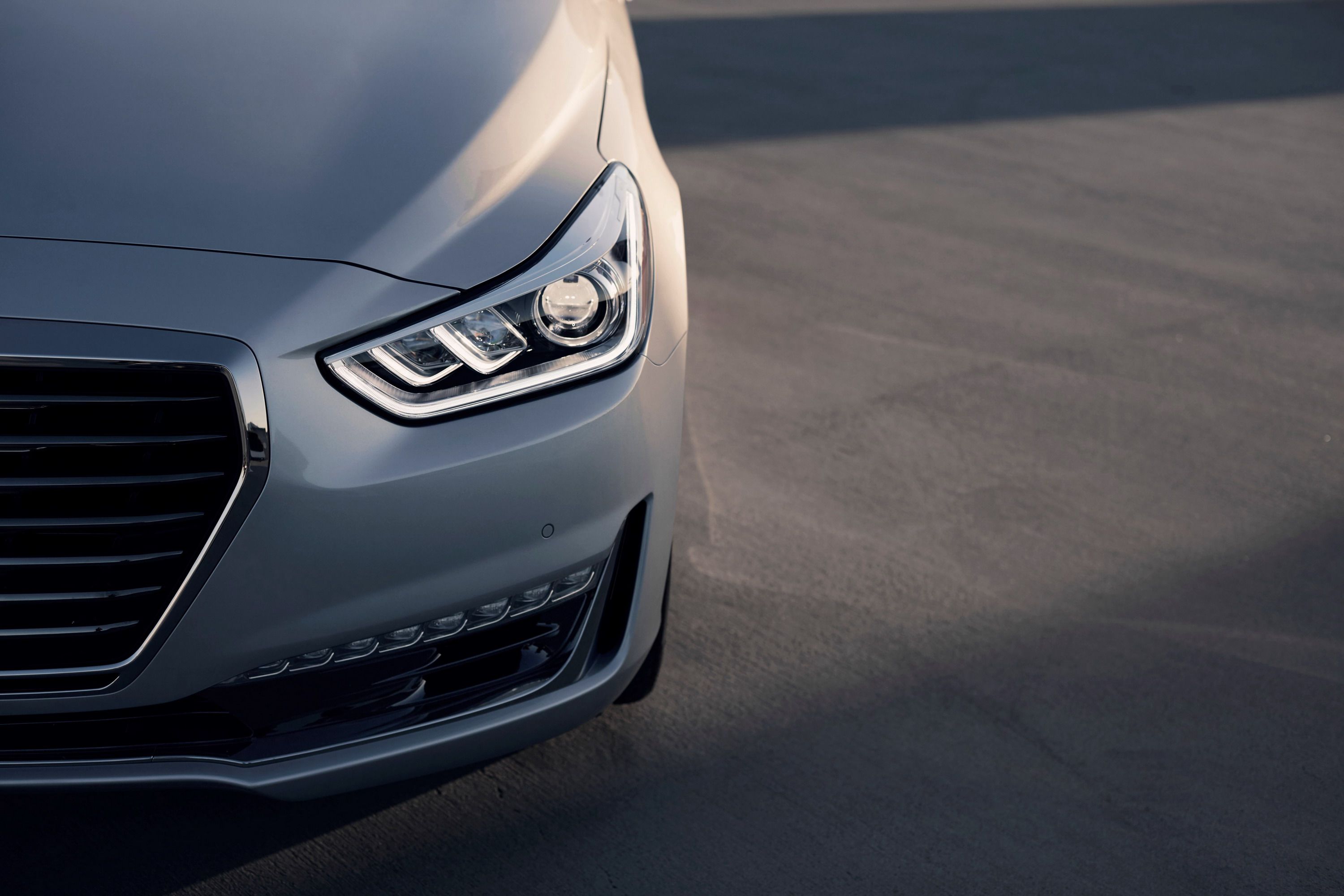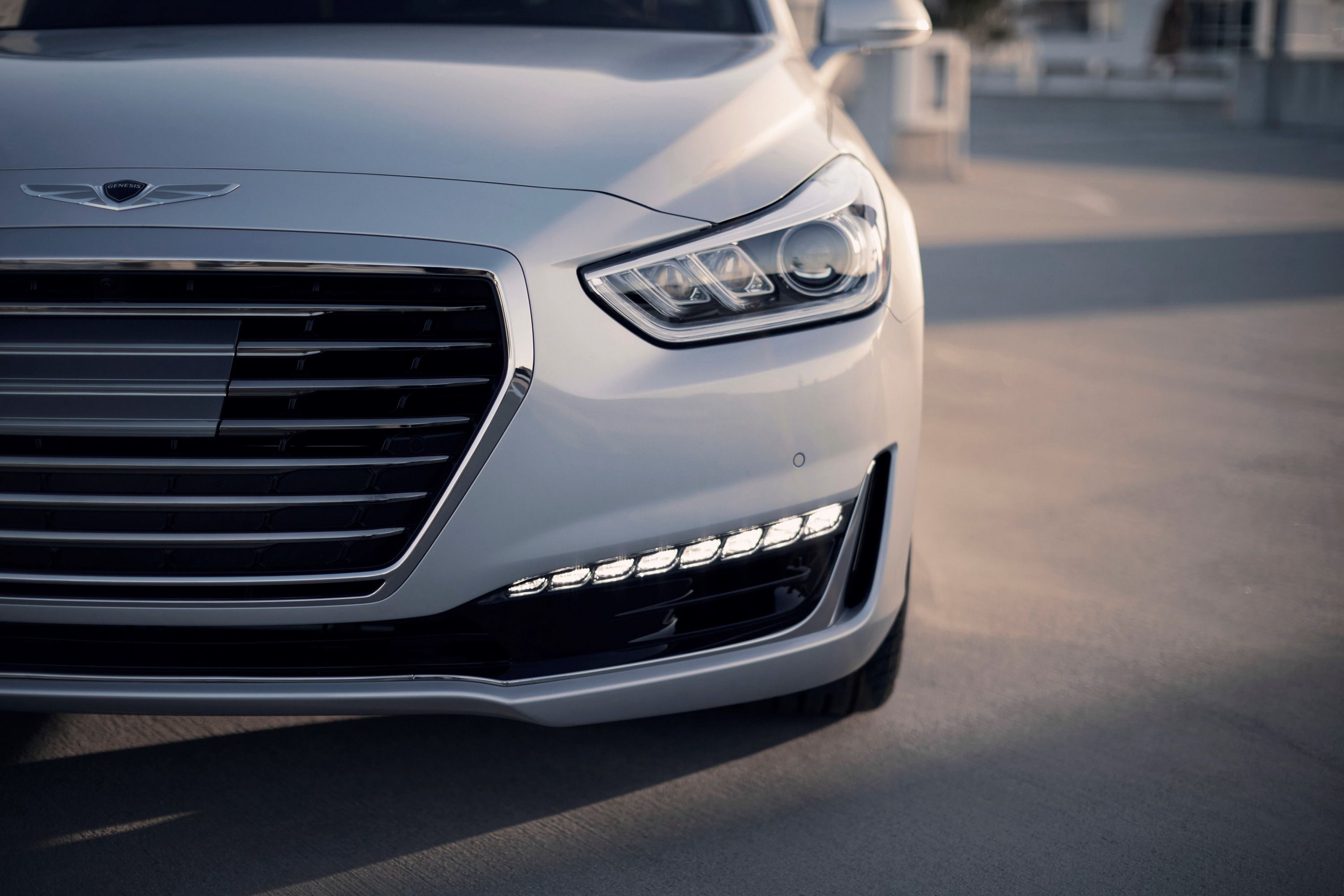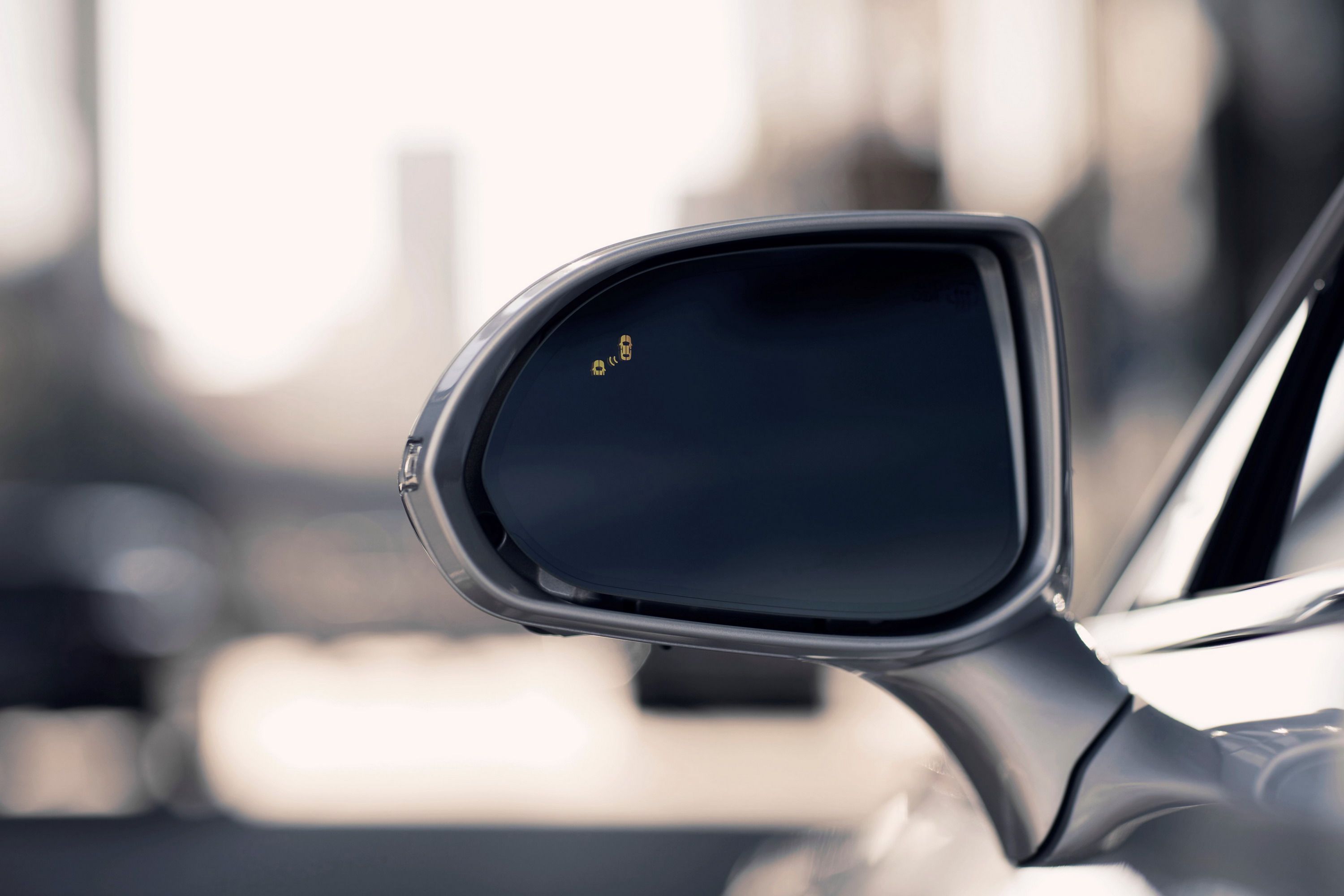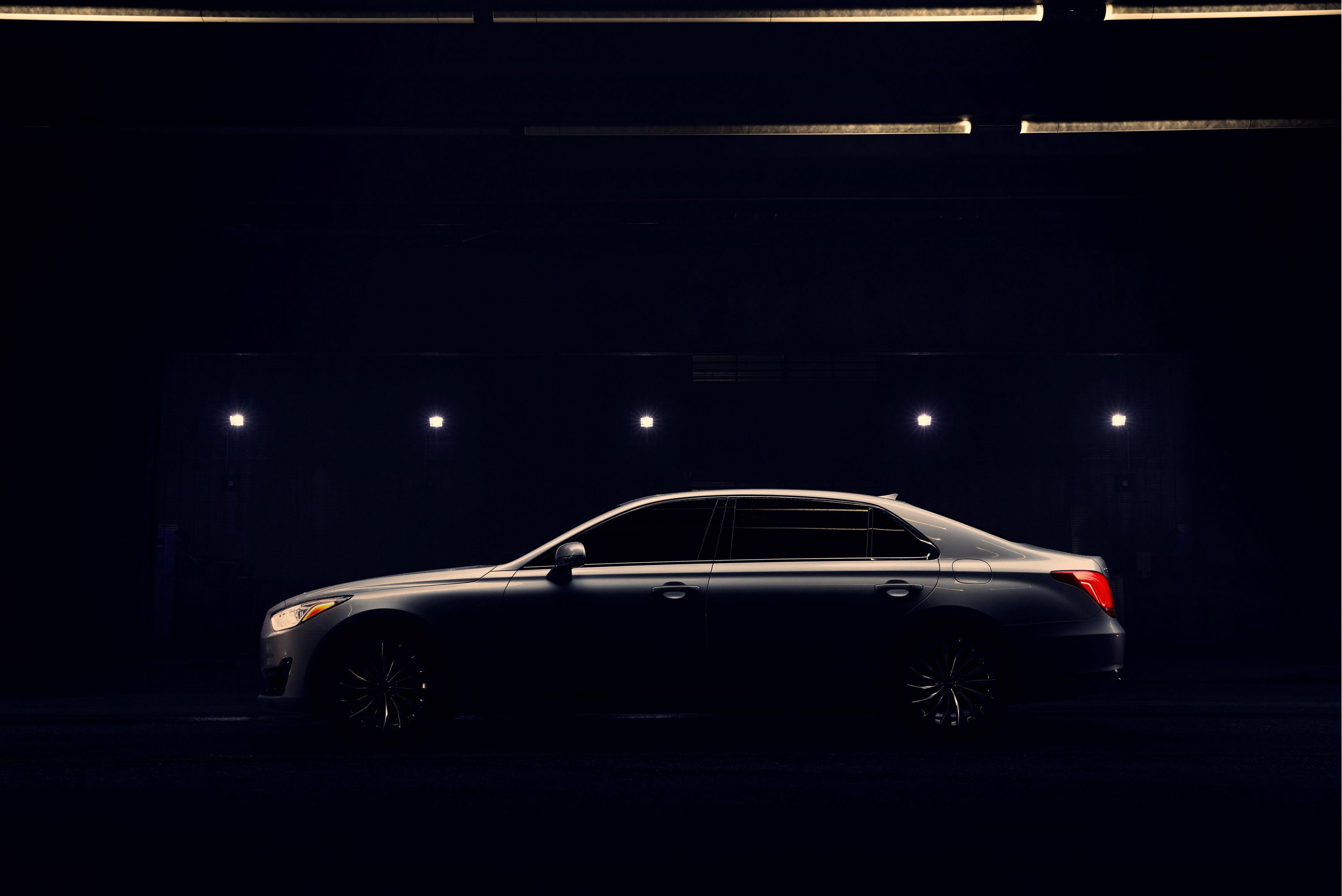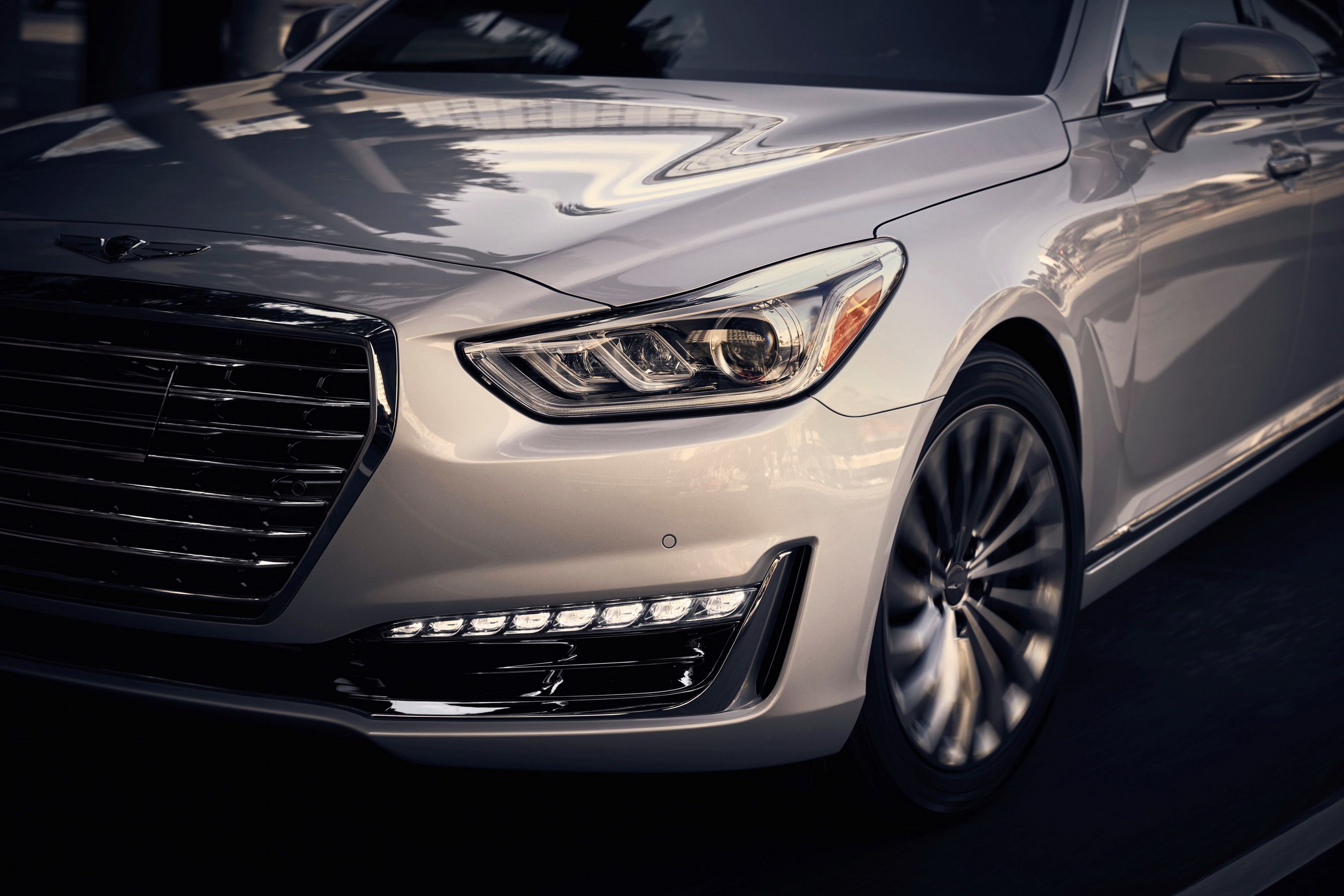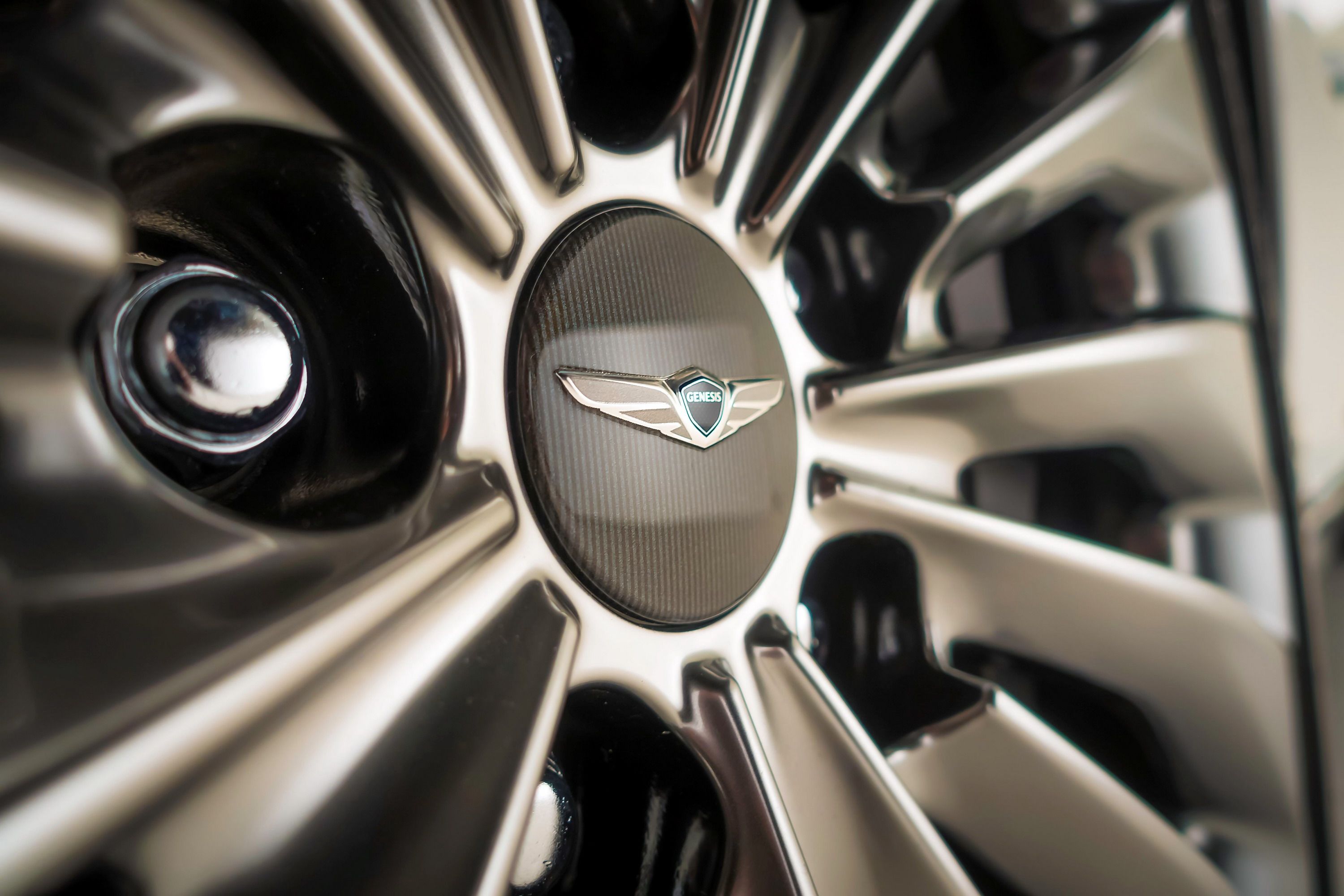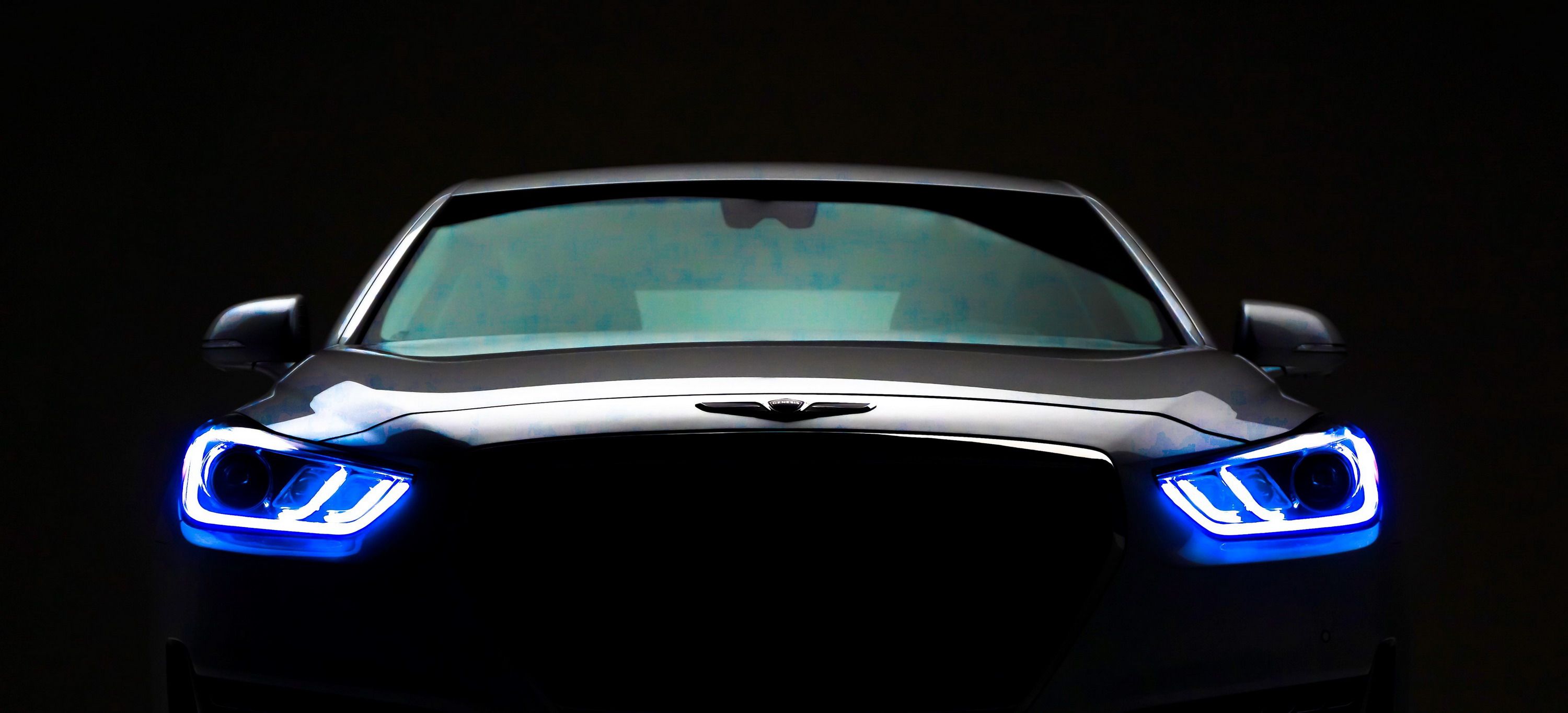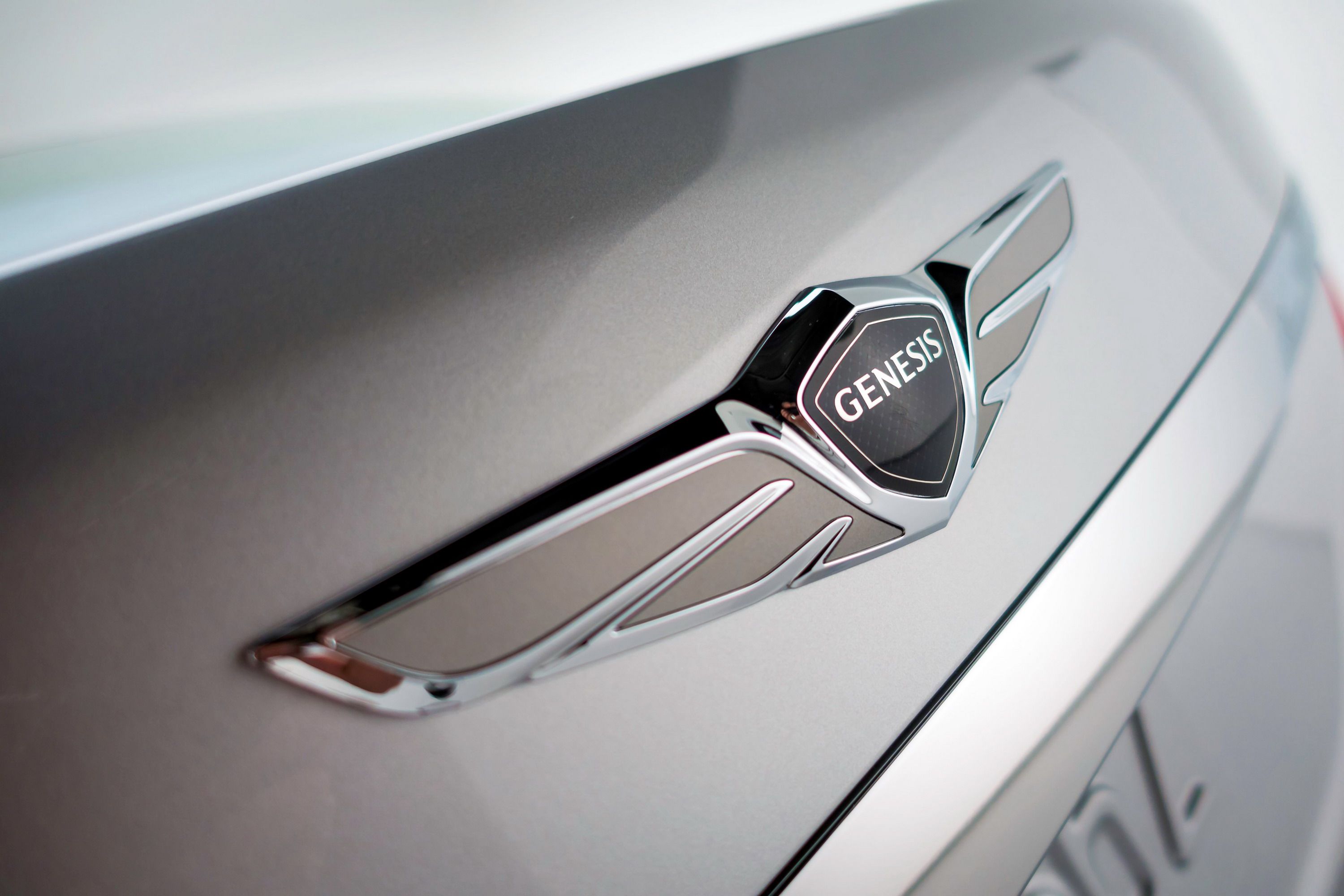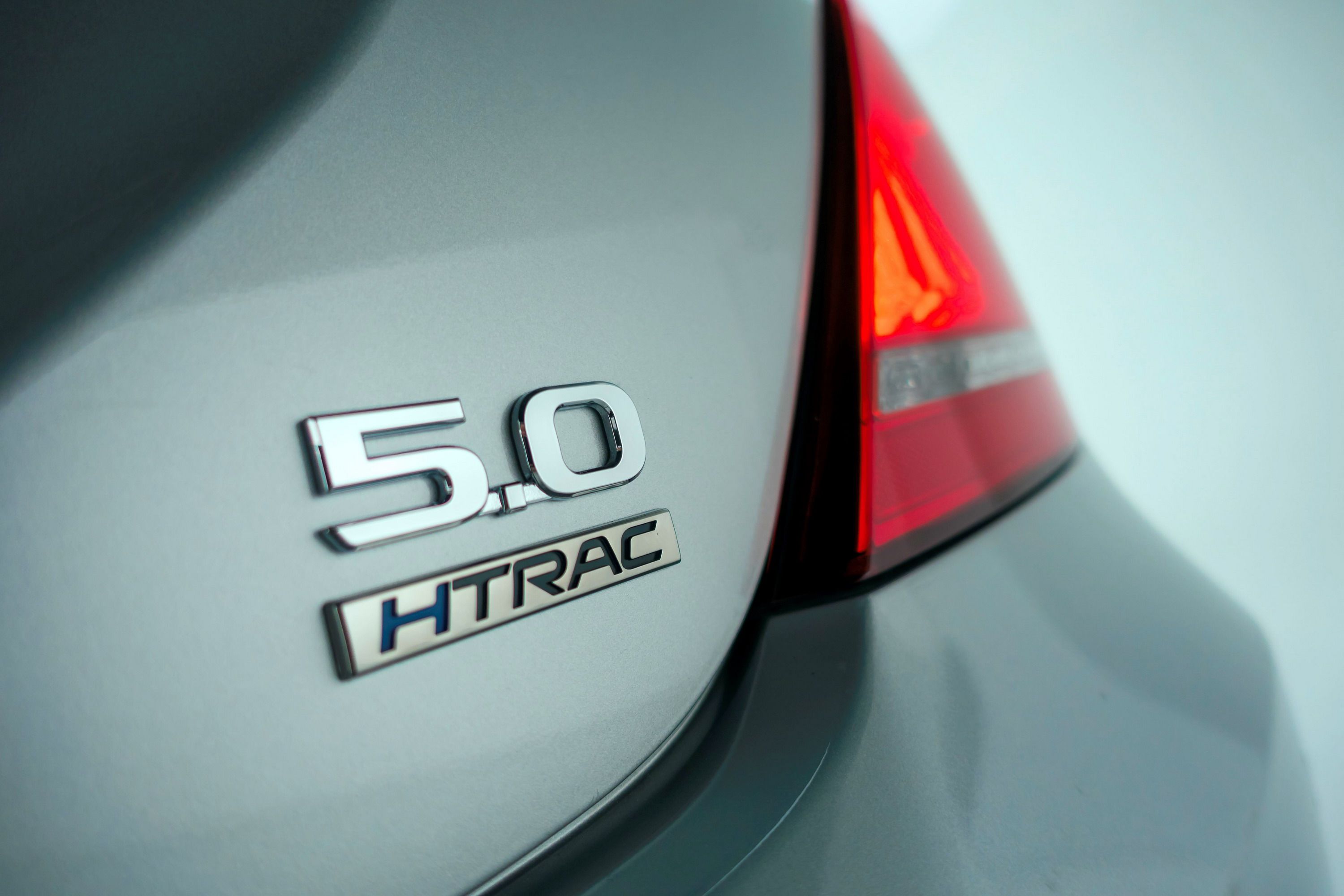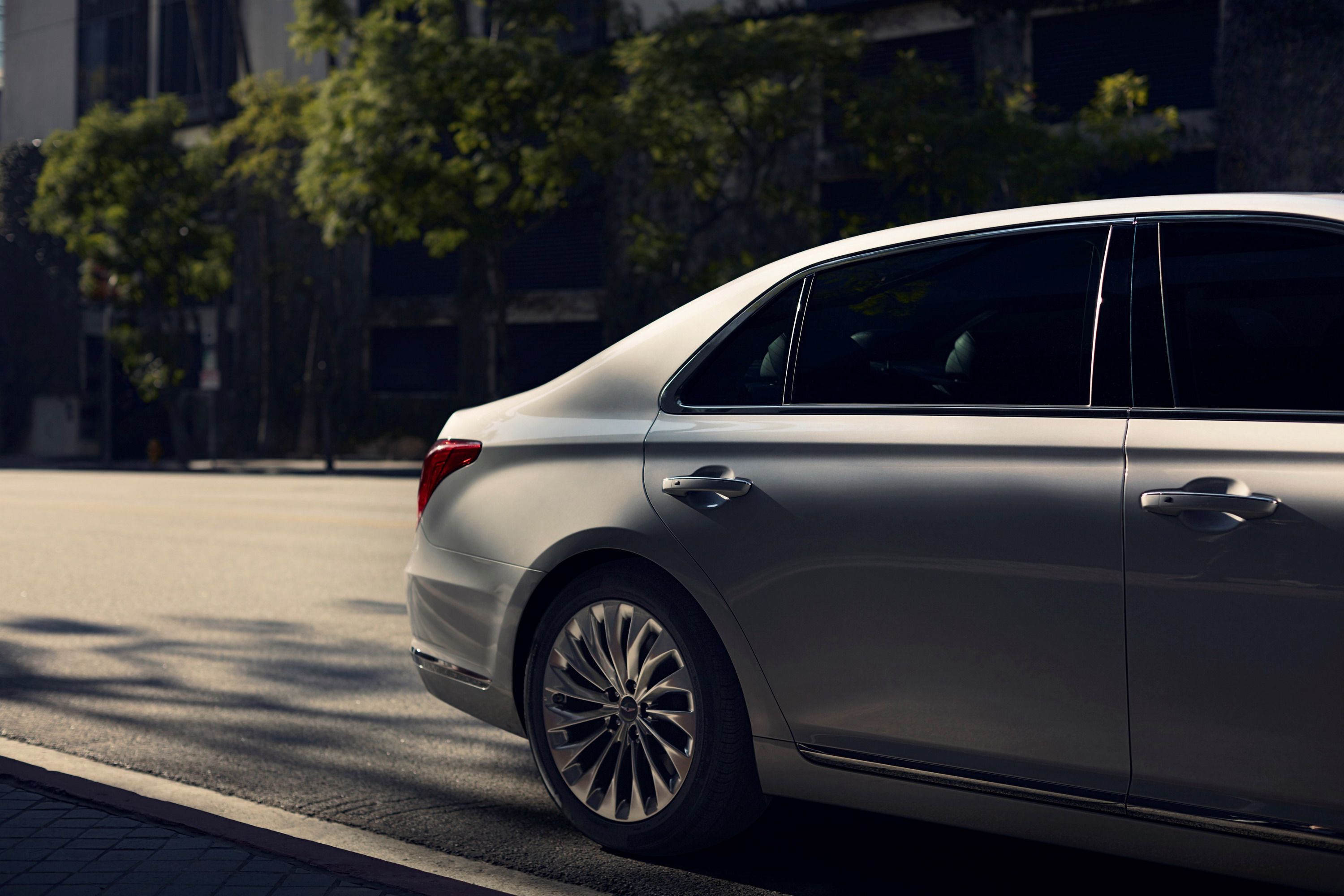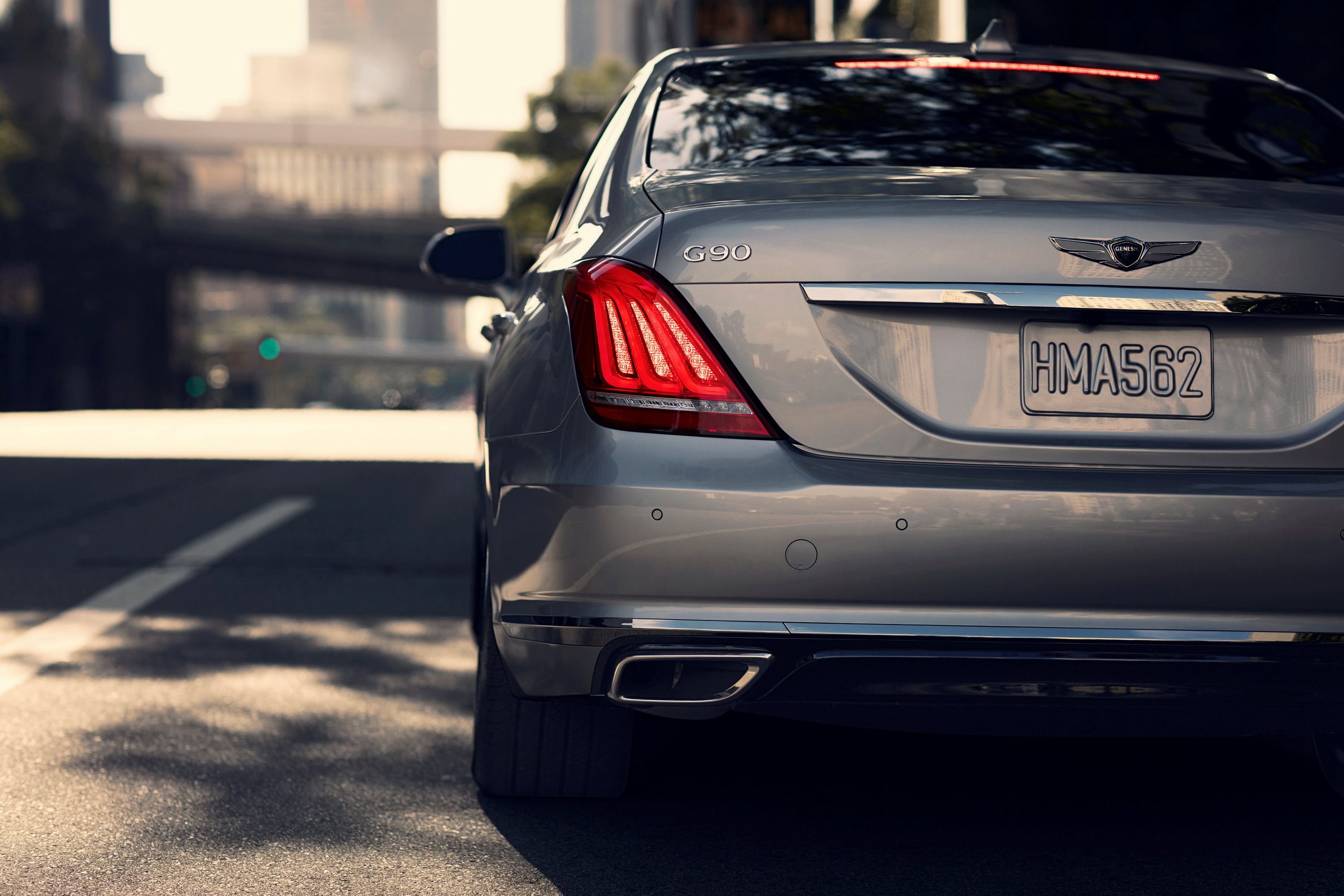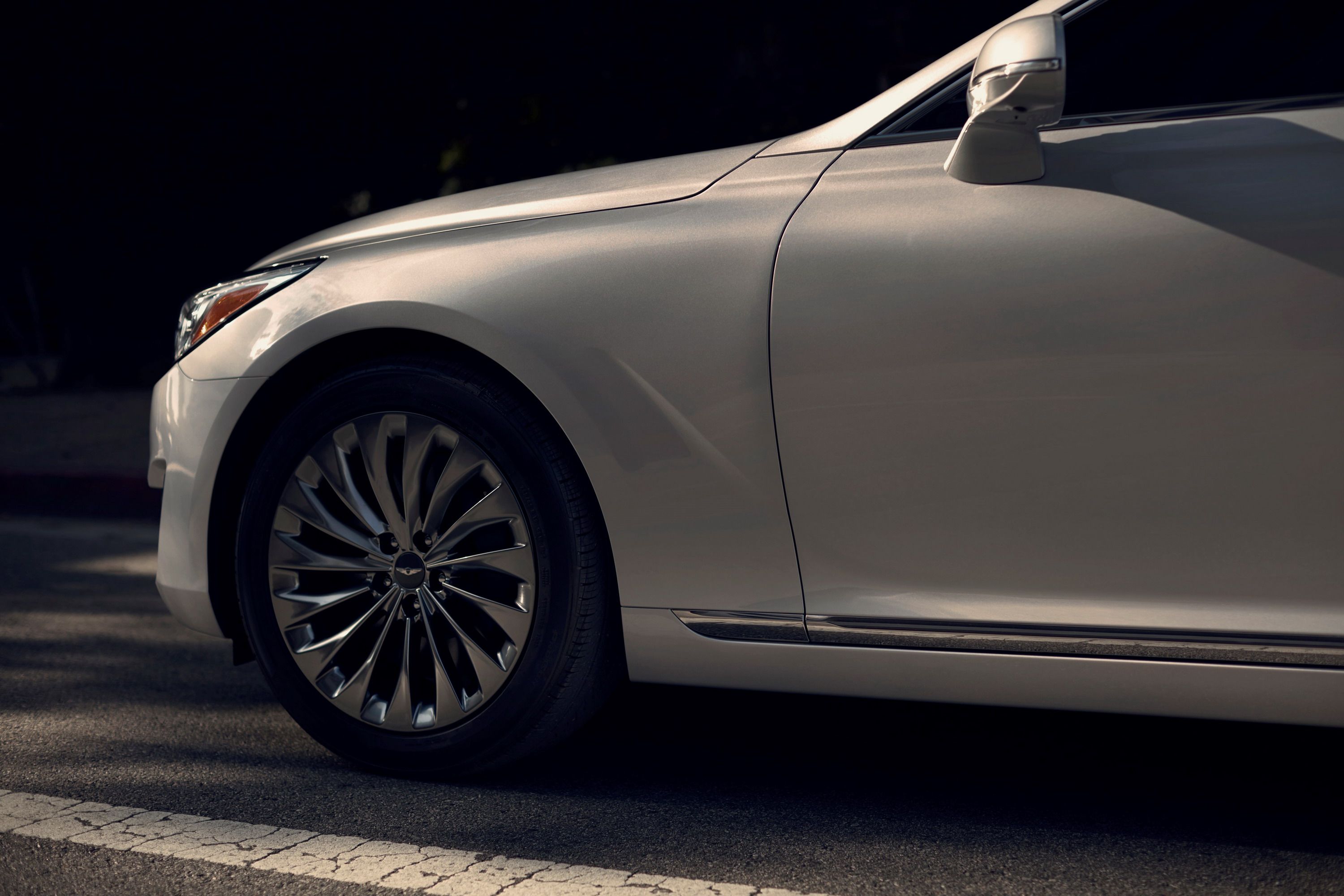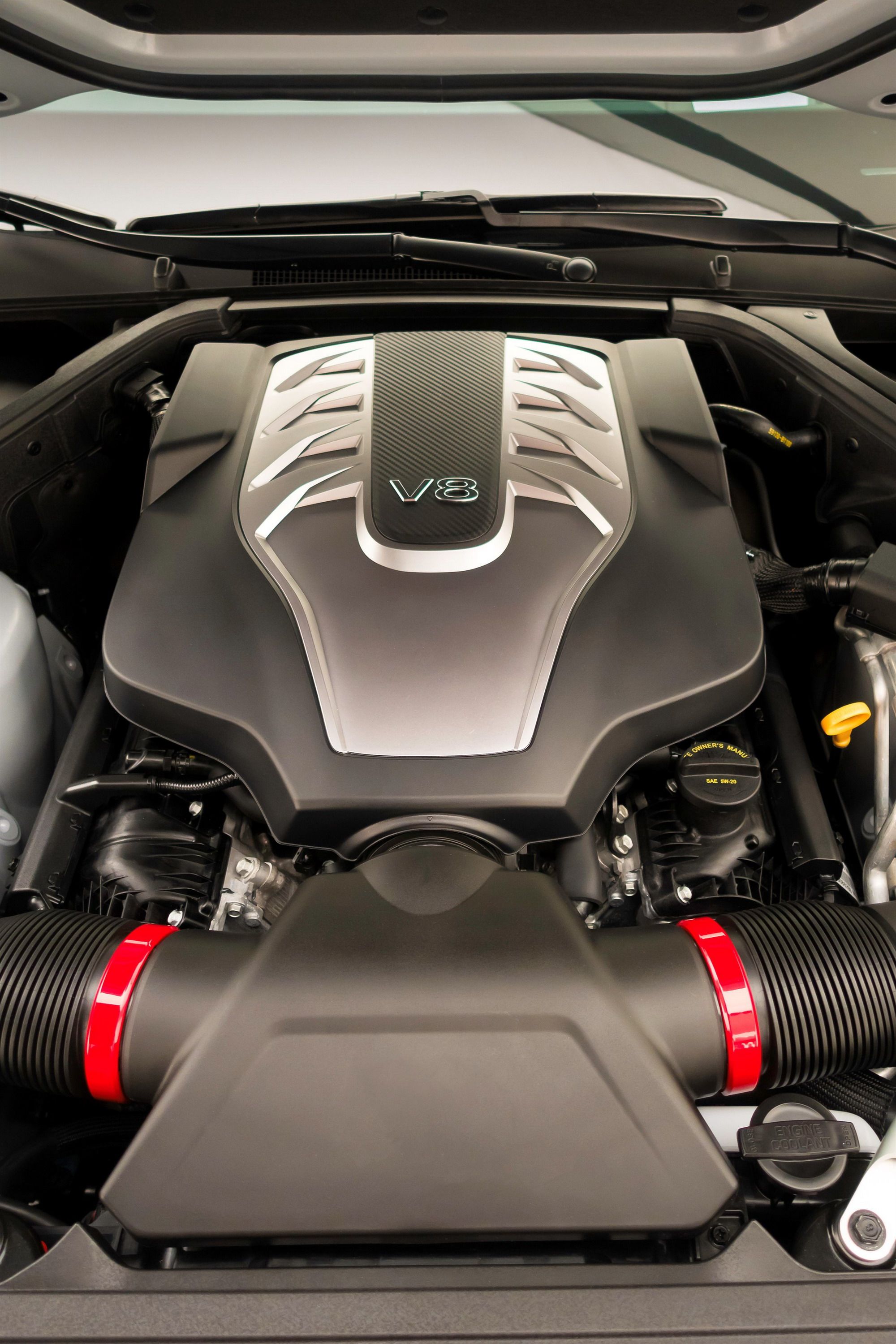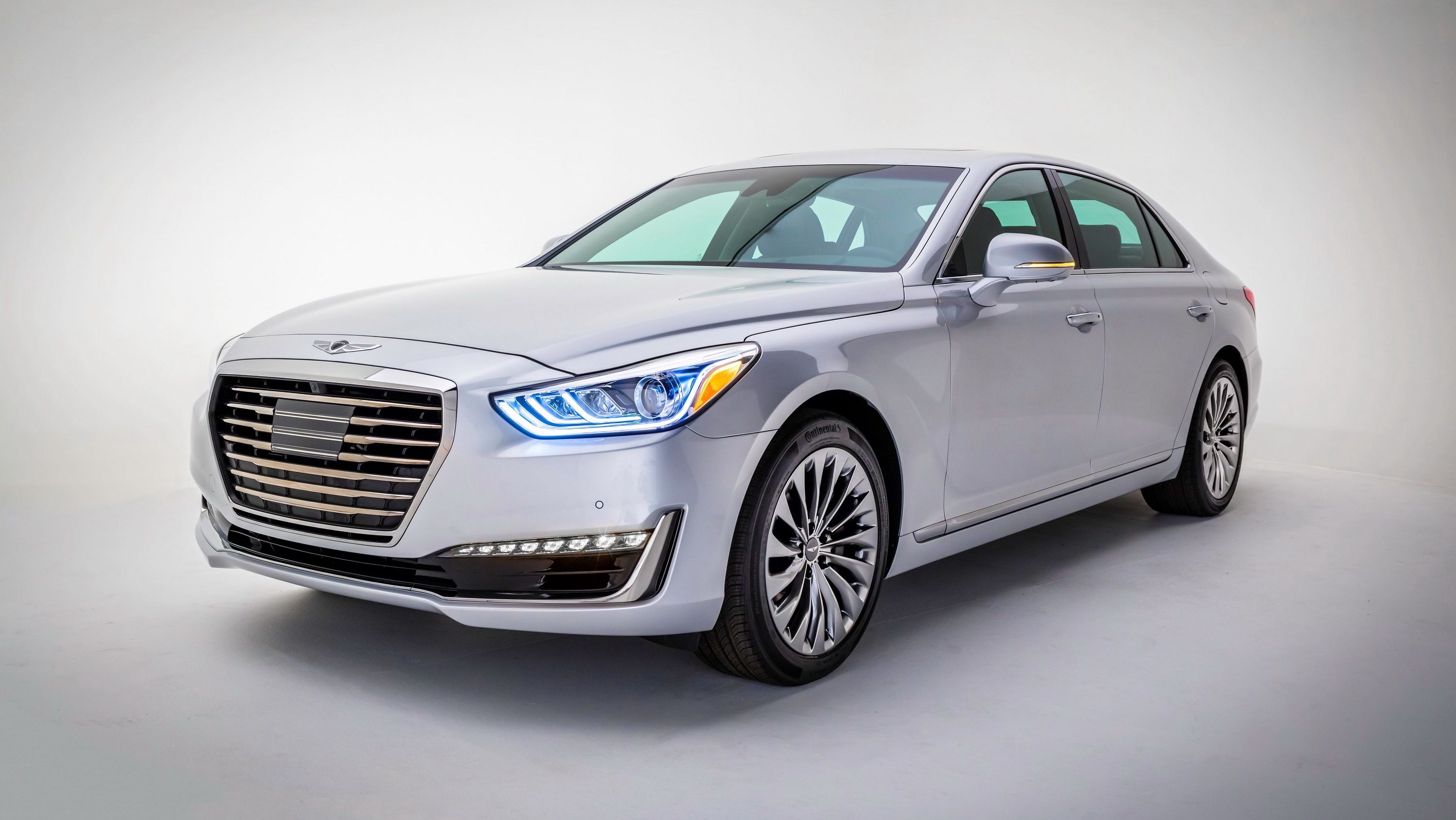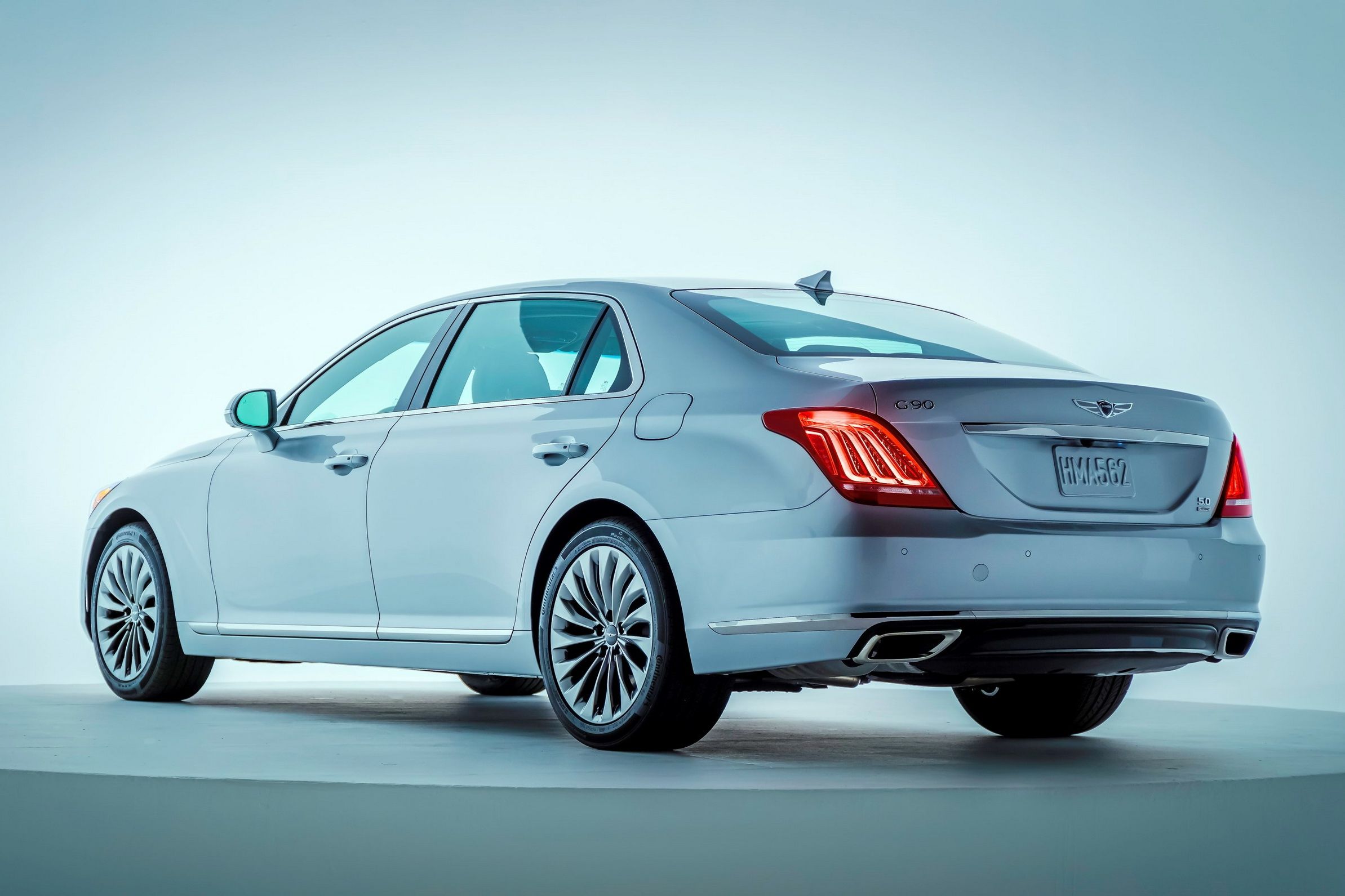Labeled as an automaker that produces cheap cars for many decades, Hyundai->ke201 has improved its brand reputation tremendously in recent years -- thanks to automobiles such as the Genesis->ke2924 and the Equus.->ke3333 In 2015, after some six years of testing the premium segment with the aforementioned sedans, the Korean company has finally decided to enter the luxury segment with a dedicated brand.
The said brand will go by the name Genesis and will include both the Genesis and the Equus nameplates, albeit under a new alphanumeric naming structure that will include the letter "G." The new division will be aimed toward similar products from Toyota'->ke88s Lexus->ke47 and Nissan'->ke62s Infiniti->ke36 arms. The first automobile to be launched under the new brand will be named the Genesis G90 in North America and the Genesis EQ900 in South Korea.
Described as the brand's new flagship model, the G90 just broke cover in South Korea in December 2015, only a month after Hyundai announced the founding of the Genesis division. At the 2016 Detroit Auto Show, the G90 made its North American debut.
“Genesis’ new large luxury sedan G90 will deliver a concept->ke169 of ‘New Luxury’ to our customers. The G90 sits at the pinnacle of the Genesis brand and demonstrates how we apply our human-centered values to give our customers true satisfaction in every aspect of the vehicle ownership experience,” said Woong-Chul Yang, Head of Hyundai Motor R&D Center.
Updated 09/05/2016: Genesis announced prices for the new G90 which will be put on sale at the end of this month. Check the "Prices" section for the full details.
Continue reading to learn more about the 2017 Genesis G90.
2017 Genesis G90
- Make: Array
- Model: 2017 Genesis G90
- [do not use] Vehicle Model: Array
Exterior
Styling-wise, the Genesis G90 introduces a new design language called "Athletic Elegance." The sedan was penned by the newly-founded Prestige Design Division, which promises to expand the design to the five new Genesis-branded models scheduled to arrive by the end of the decade.
Fancy PR talk aside, the G90 is indeed an elegant and athletic sedan. Significantly more elegant than the large, but rather dull-looking Equus, the G90 is also very sporty for a vehicle of its size. The front fascia received a crisper version of the Genesis’ massive grille and similar daytime running lights, but everything else was reshaped to give the sedan an exquisite appearance.
There are LED headlamps that extend into the fenders, an imposing chrome insert into the muscular bumper, and a wing-type badge above the grille. The long hood seems to retain the Genesis’ clean lines.
The car’s profile is unlike anything else Hyundai has designed to date. The G90 has a tall shoulder line, muscular rear haunches, large wheels, and a large glass area for the rear doors. The steeply raked rear windscreen, short rear deck, and the vertical taillights that extend into the fenders give it a unique look in the luxury segment. Although it feels as massive as a Bentley Flying Spur,->ke1657 the G90 is incredibly sporty and elegant for a Hyundai.
As far as dimensions go, the G90 is 1.7 inches longer and 0.6 inch wider than the Equus. While the new sedan is not significantly larger than its predecessor, its wheelbase is no fewer than 4.5 inches longer, which speaks volumes of Hyundai's efforts to improve comfort and roominess.
Exterior Dimensions
|
Overall length |
204.9 Inches |
|
Overall width |
75.4 Inches |
|
Overall height |
58.9 Inches |
|
Wheelbase |
124.4 Inches |
|
Front overhang |
33.9 Inches |
|
Rear overhang |
46.7 Inches |
|
Front tread |
64.6 Inches |
|
Rear tread |
64.5 Inches |
Interior
Much like the exterior, the interior is also a significant departure from the Equus. Although the latter was pretty luxurious for a Hyundai, it was no match for most of its competitors in terms of soft-touch materials, craftsmanship, fit and finish. The G90 appears to have fixed that with a redesigned cabin that features human-centered ergonomics, improved materials, and an elegant color palette.
The cabin also feels a lot more modern compared to the Equus, which looked dated even when compared to the previous-generation S-Class.->ke359 The new design brings together Italian and Nappa leather, rear wood trim, contrast stitching, and polished aluminum inserts. The latter are spread throughout the dashboard, center console, and upper door panels. Overall, the cabin looks like a plush and fancy place to spend time, and if it weren't for the Genesis badge on the steering wheel, you wouldn't know you're sitting in a Korean car.
The newly-developed seats are certified by German back specialists and come with 22-way power adjustment for the driver and 14-way setting for the passengers. The vehicle is also equipped with a Smart Posture Caring system that positions the seat, steering wheel, head-up display, and side mirrors to the driver's optimal position. High-end tech includes a 12.3-inch touchscreen (as large as Mercedes'->ke187 unit), a new parking camera, and 360-degree monitor among many other features. A Lexicon surround sound system promises to provide a hi-fidelity listening experience.
This is also possible due to extensive efforts Hyundai has made toward reducing NVH (noise, vibration and harshness) levels, by using special sound-absorbing materials, laminated glass for each window, and an optimized suspension setup for high-speed cruising with minimum body vibration. The automaker claims that the G90 boasts best-in-class ratings for in-cabin quietness, but we won't find if this is true or not until the sedan is tested against its main competitors.
Interior Dimensions
|
Front |
Rear |
|
|
Head room |
41.1 Inches |
38.0 Inches |
|
Leg room |
46.3 Inches |
37.8 Inches |
|
Shoulder room |
59.1 Inches |
57.9 Inches |
Drivetrain
Motivation for the G90 comes from two gasoline engines. The base model uses a twin-turbo, 3.3-liter V-6 rated at 365 horsepower and 376 pound-feet of torque, while the range-topping version features a 5.0-liter V-8 that cranks out 420 horses and 383 pound-feet of twist.
Both units benefit from Hyundai's second-generation, eight-speed automatic transmission with reduced clutch-disc drag, lighter converter components, and reduced losses from lower oil pump displacement. The new gearbox is 18 pounds lighter that its predecessor and boasts higher efficiency and more compact dimensions.
In other markets, the base G90 gets a naturally aspirated, 3.8-liter V-6 rated at 315 PS (311 horsepower). The unit is similar to the one offered with the Equus in Asia, but it delivers an extra 25 PS (25 horses).
A hybrid drivetrain should also be on the table, but it will probably be offered later in the sedan's life cycle.
An new all-wheel drive system is available for either drivetrain. Hyundai's H-TRAC system can direct up to 40 percent of the available torque to the front axle for enhanced traction in adverse road conditions such as ice or snow. In dry road conditions, its Sport calibration uses a high degree or rear-drive bias for sportier cornering and acceleration, sending up to 90 percent of the available torque to the rear axle. When Economy mode is activated, up to 100 percent of the torque is distributed to the rear wheels for maximum efficiency.
Drivetrain Specifications
|
Capacity (cc) |
Horsepower |
Torque (lb.-ft.) |
|
|
3.3-Liter Twin-Turbocharged V6 |
3,342 |
365 HP @ 6,000 RPM |
376 LB-FT @ (1,300-4,500) RPM |
|
5.0-liter Direct-injected V8 |
5,038 |
420 HP @ 6,000 RPM |
383 LB-FT @ 5,000 RPM |
Safety
Hyundai brags about the Genesis G90 featuring "several world-best safety technologies" and the strongest body frame in the full-size class. Details are scant at this point, but the Koreans did list Autonomous Emergency Braking with Pedestrian Detection, Active Blind Spot Detection, Driver Attention Alert, Smart High Beam Assist, and an Around View Monitor among the sedan's safety features.
Prices
Pricing for the G90 starts from $68,100 in the U.S. That's a $6,600 premium over the Equus model it replaces, but the difference is far from shocking given the massive improvements in just about any department. For $68,100, you get the 3.3-liter V-6 engine with rear-wheel drive, while the optional AWD system increases the sticker to $70,600. Models equipped with the 5.0-liter V-8 powerplant retail from $69,700 with rear-wheel drive and from $72,200 with all-wheel drive. These rices are pretty in line with those of the competition, but the base model is actually more affordable than what you pay for a Lexus LS.
|
2017 Genesis G90 |
Engine |
Powertrain |
MSRP |
|
G90 3.3T Premium |
3.3L Twin-Turbo V6 |
RWD |
$68,100 |
|
AWD |
$70,600 |
||
|
G90 5.0 Ultimate |
5.0L V8 GDI |
RWD |
$69,700 |
|
AWD |
$72,200 |
Competition
Lexus LS
While Genesis' long-term plan may include stealing customers from BMW, Mercedes-Benz, and Audi, taking on the Lexus LS should be the G90's first step in the U.S. market. Launched in 1989 as one of the first Asian full-size luxury sedans to cross the pond to the U.S., the LS is now in its fourth generation. Revised for 2014, the current LS features the brand's revised spindle grille and more aggressive styling cues, while the interior comes with standard heated and ventilated front seats and attractive color combos. Power is provided by either a 4.6-liter V-8 rated at 386 horsepower or a hybrid drivetrain generating 438 horses. Pricing starts from $72,520 for the V-8 and $120,440 for the hybrid.
Read more about the Lexus LS here.
Infiniti Q80
Genesis' other main competitor, Infiniti, has yet to produce a full-size as of 2015, with its largest sedan being the Q70. Nissan's luxury division, however, plans to launch a production version of the Q80 Inspiration, which will become the brand's flagship vehicle. Very little is known about the production model as of this writing, but much like the Genesis G90, the Q80 should also features a new design language and Infiniti's latest tech and safety systems. Power is expected to come from a 5.6-liter V-8 and a hybrid drivetrain that will combine a 3.5-liter V-6 and an electric motor. The new sedan should fetch in excess of $70,000 in the U.S.
Find out more about the Infiniti Q80 Inspiration here.
Conclusion
It's hard to draw a conclusion without being able to jump behind the wheel for an actual test drive, but the upcoming Genesis G90 looks good so far. Hyundai already made a big step toward the luxury segment with the Equus, but its plain styling, modest low-end torque, and inferior driving experience prevented it from becoming a worthy competitor to the Lexus LS. That too changes with the Genesis G90, which looks to be a improvement in just about every department and delivers more luxury than any other Hyundai before it. We won't know for sure if it has what it takes to give the German full-size sedans a run for their money until it hits dealerships, but the G90 might just become the first Hyundai product you won't have to justify paying more than $60,000 for.
Update History
Updated 01/12/2015: The new Genesis G90 made its North American debut at the 2016 Detroit Auto Show.
Updated 12/10/2015: After dropping the official details and images, Genesis also revealed a first video for its latest G90. Check it out to see how the G90 was completed with innovative design and perfect proportion.


